Flammulated Owl was literally and figuratively the number one lifer of the trip (see the last post if you missed it), but there were many other fun lifers that followed the Flam. After all, one cannot go to Arizona and not come home with a few lifer souvenirs. While I did not hit double-digits, I did snag some really exciting new ones. One of these was a major target bird that I was just as eager to see as I was the Flam. Perhaps, though, the biggest (literally) lifer for me and the whole family was the Grand Canyon.
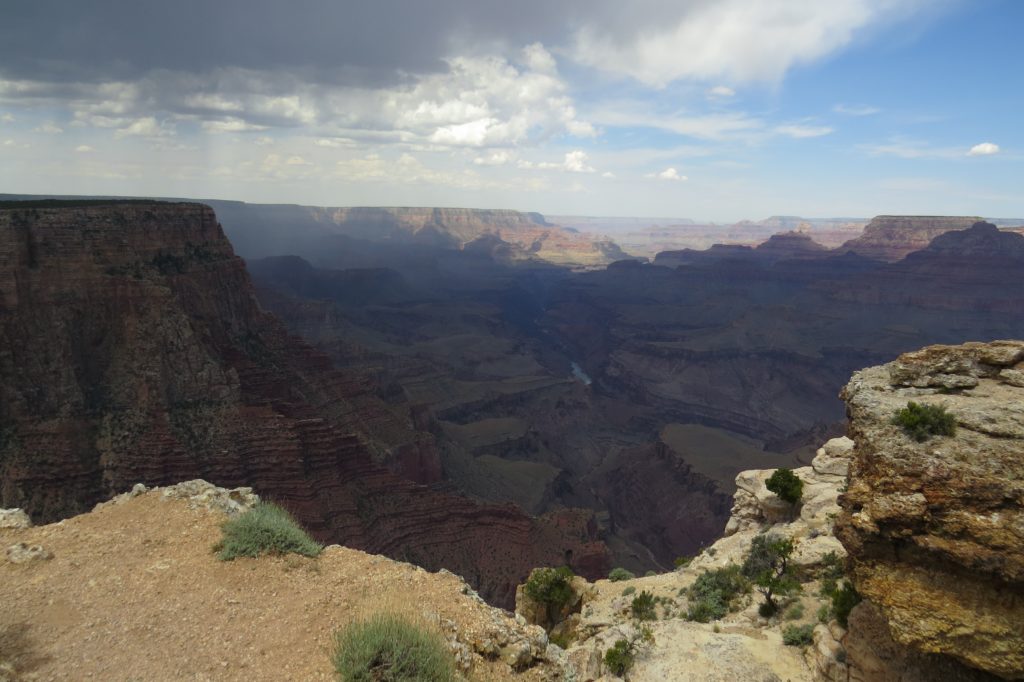 Technically speaking it was not a lifer for me as I had been here as a small child. Since I have no memory of it and I have a family of my own who hadn’t seen it, the time was right for a visit. Plus, the visit to Grand Canyon National Park was completely FREE thanks to the government’s Every Kid in a Park program where each 4th grade student in America can get his/her entire family and vehicle into any national park all summer long at no cost. The lack of entry fee was definitely the icing on the cake because this place is impressive regardless. The grandeur of the Grand Canyon and how it makes you feel when you are standing next to that vastness is nearly impossible to describe in words and capture in photographs. Hopefully these kids will at least remember the experience.
Technically speaking it was not a lifer for me as I had been here as a small child. Since I have no memory of it and I have a family of my own who hadn’t seen it, the time was right for a visit. Plus, the visit to Grand Canyon National Park was completely FREE thanks to the government’s Every Kid in a Park program where each 4th grade student in America can get his/her entire family and vehicle into any national park all summer long at no cost. The lack of entry fee was definitely the icing on the cake because this place is impressive regardless. The grandeur of the Grand Canyon and how it makes you feel when you are standing next to that vastness is nearly impossible to describe in words and capture in photographs. Hopefully these kids will at least remember the experience.
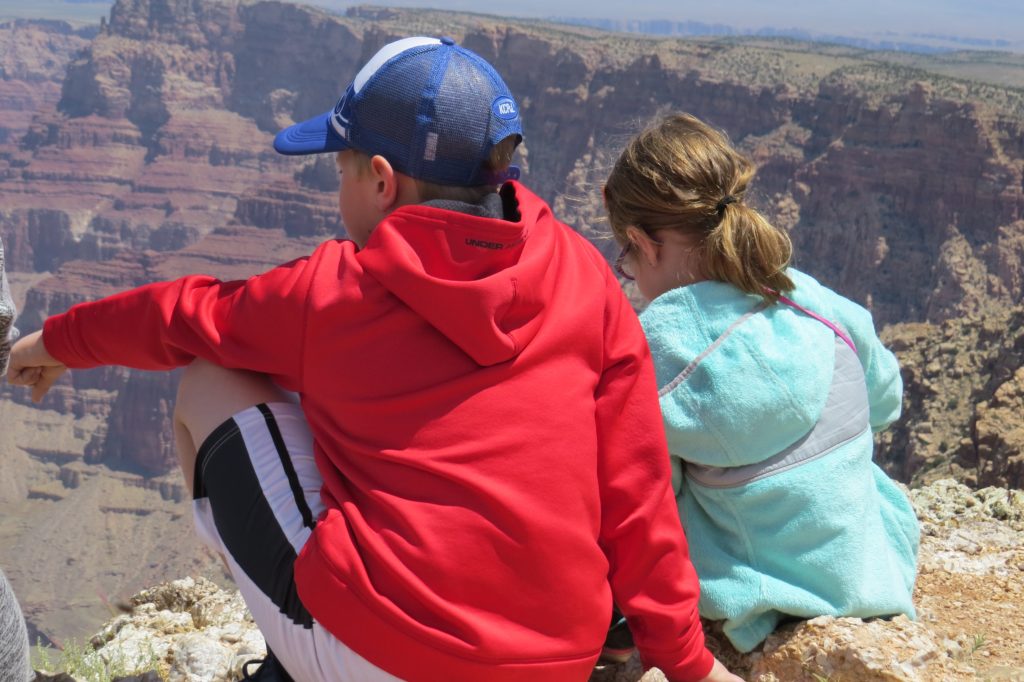
Tommy DeBardeleben joined us on the trip to the Grand Canyon. Tommy was actually hoping to see a bird that I wanted to see, the California Condor. The California Condor was reintroduced to the Canyon in 1996 and has done well there since. Over 70 birds are in the Utah/Arizona population with many of them frequenting the Canyon. Tommy had seen them here many years ago. Unfortunately they were not a “countable” bird when he saw them because they were still in the early years of reintroduction, so Tommy technically did not have California Condor on his official life and state lists. Neither did I, so as we enjoyed the Canyon at every possible pull-off, Tommy and I were always watching the sky above and below(!) in an effort to find this bird. Unfortunately we never had any luck. Later that night we learned one had been seen on the cliff face right beneath Bright Angel Lodge less than an hour after we had looked at the very same spot. Argh. The good news is that we were so impressed with the Canyon that we will be back some day. The Condor can wait until then.
There were, of course, other potential lifers for me at the Canyon. I did see one, the Juniper Titmouse, fly across the road in front of me. It wasn’t until the drive back on US-180 to Flagstaff that I actually got to see one well and photograph it.
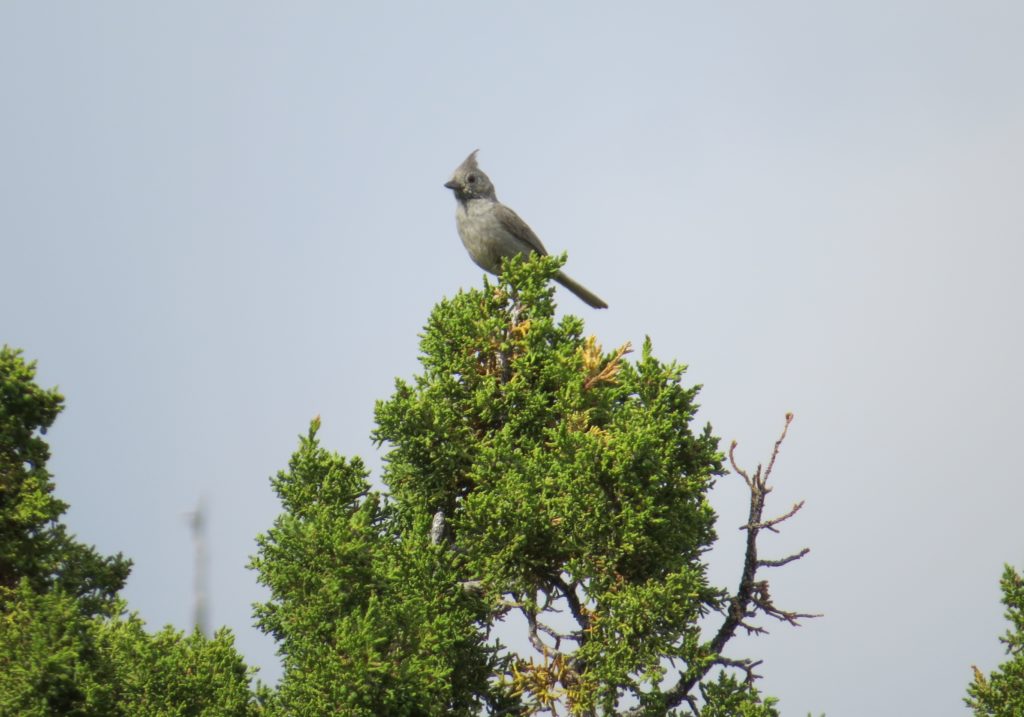
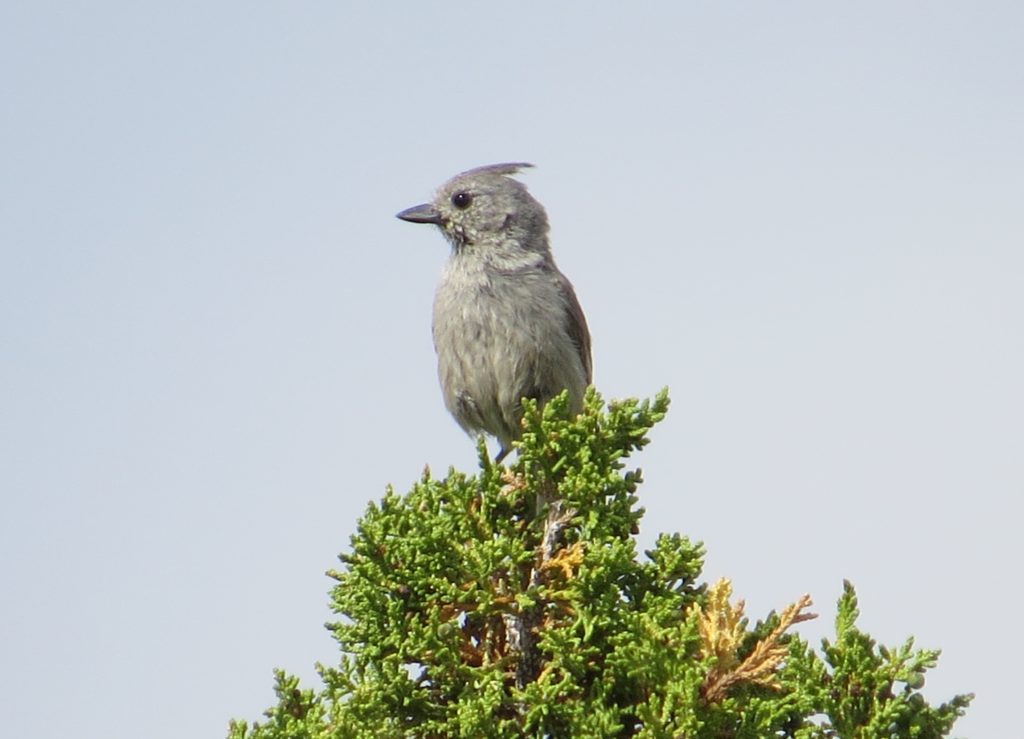 Tommy found me this bird while we were stopped for a different lifer. As I had been driving I knew to be vigilant for Pinyon Jays. There were a couple times while cruising at highway speeds that I thought I saw blue-colored birds cross the highway, but with no shoulder on which to pull off, I couldn’t stop to check. All doubt was erased at one point, though, when several blue-colored birds were flying across the highway in groups. I found a spot to pull over and observe my lifer Pinyon Jay. Photographing them proved impossible as the birds were between me and the sun. They also hid remarkably well in the junipers, only giving away there presence as they flushed away. This happened over and over as we probably saw over 50 in all, flushing in small groups. It was frustrating but still fun to see the behavior of this bird and hear its fun, laughing call.
Tommy found me this bird while we were stopped for a different lifer. As I had been driving I knew to be vigilant for Pinyon Jays. There were a couple times while cruising at highway speeds that I thought I saw blue-colored birds cross the highway, but with no shoulder on which to pull off, I couldn’t stop to check. All doubt was erased at one point, though, when several blue-colored birds were flying across the highway in groups. I found a spot to pull over and observe my lifer Pinyon Jay. Photographing them proved impossible as the birds were between me and the sun. They also hid remarkably well in the junipers, only giving away there presence as they flushed away. This happened over and over as we probably saw over 50 in all, flushing in small groups. It was frustrating but still fun to see the behavior of this bird and hear its fun, laughing call.
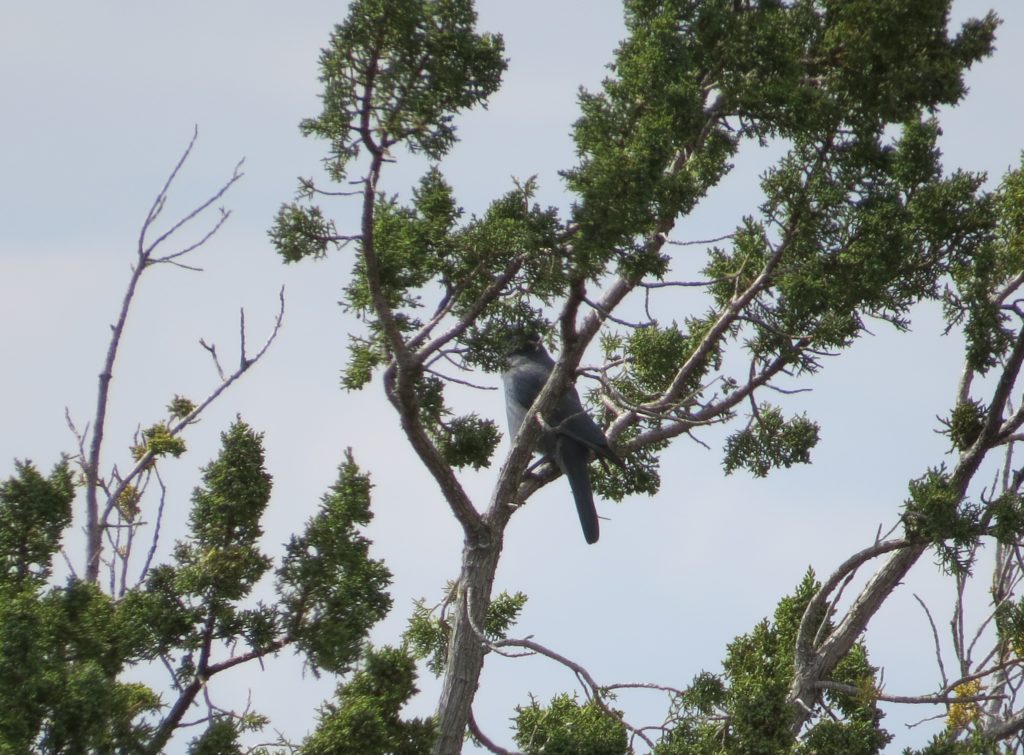
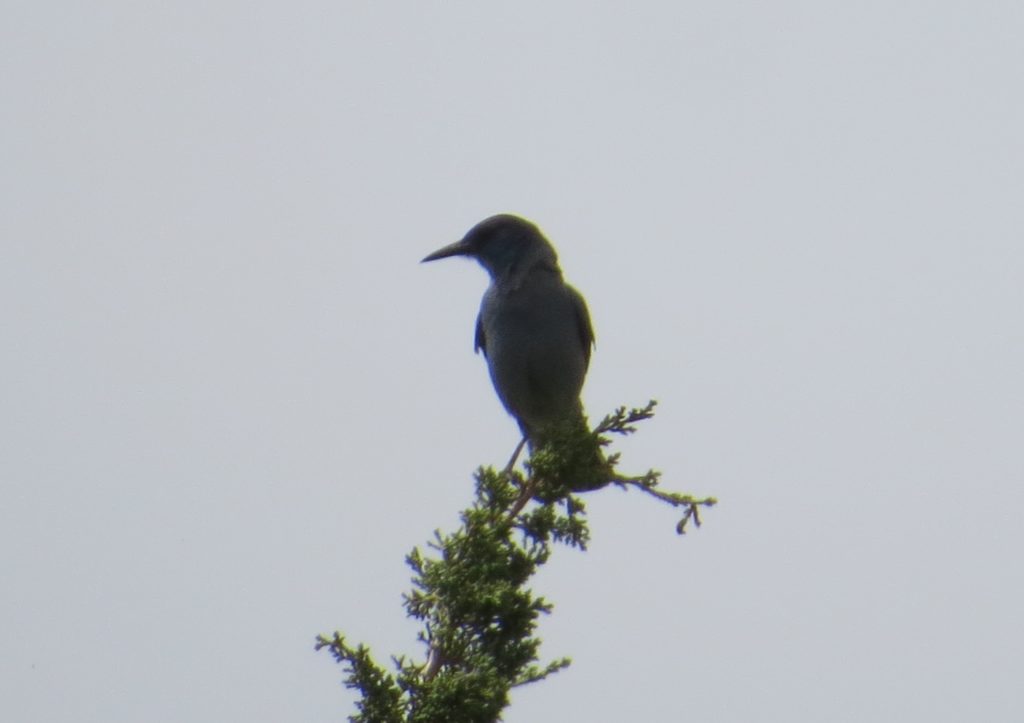 The morning after the Grand Canyon adventure, Tommy and I birded the Flagstaff area hitting up Elden Springs Road and the Schultz Pass Road. The birding was incredible, but since this is just a lifer post, we’ll stick to those. The first lifer was the Grace’s Warbler, a striking bird that loves the Pines.
The morning after the Grand Canyon adventure, Tommy and I birded the Flagstaff area hitting up Elden Springs Road and the Schultz Pass Road. The birding was incredible, but since this is just a lifer post, we’ll stick to those. The first lifer was the Grace’s Warbler, a striking bird that loves the Pines.
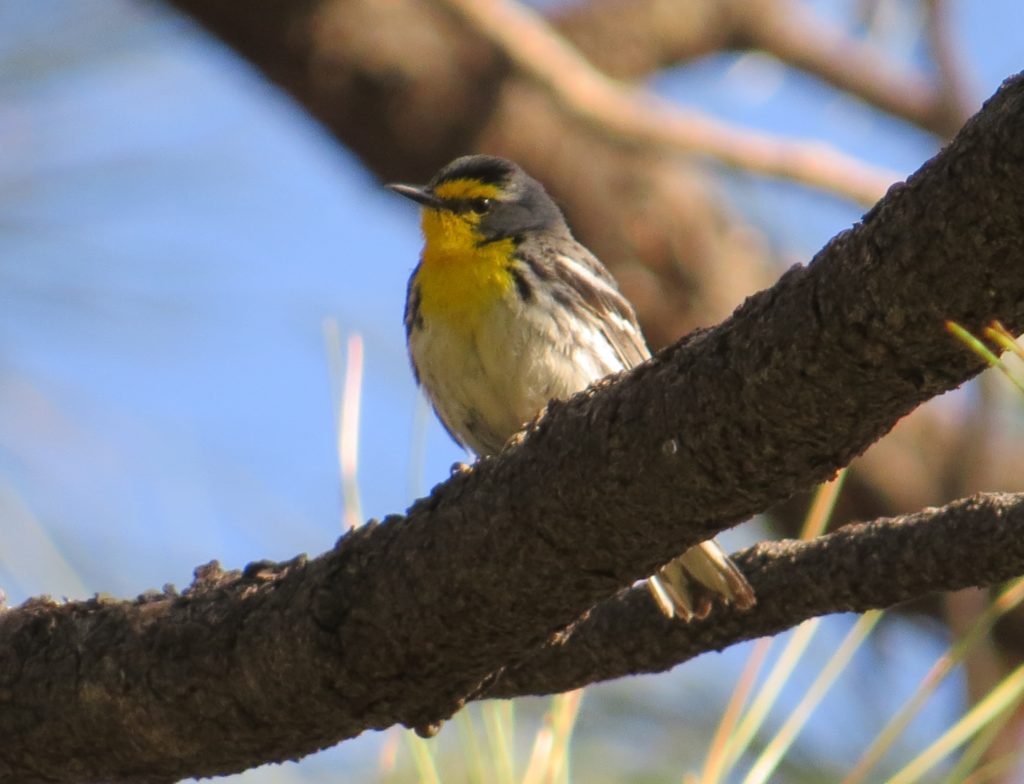
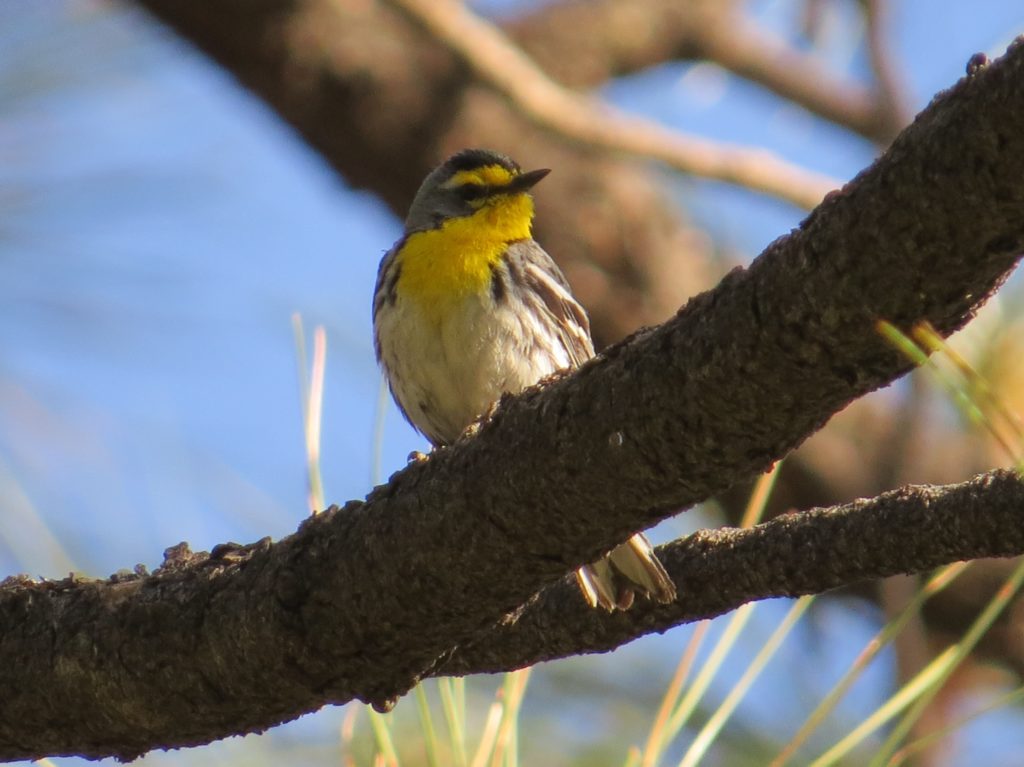 While lifering on this bird, I simultaneously lifered on Plumbeous Vireo. This is another bird that loves life in the Pines. Both my new lifers could be heard and seen at the same time, sometimes even in the same tree!
While lifering on this bird, I simultaneously lifered on Plumbeous Vireo. This is another bird that loves life in the Pines. Both my new lifers could be heard and seen at the same time, sometimes even in the same tree!
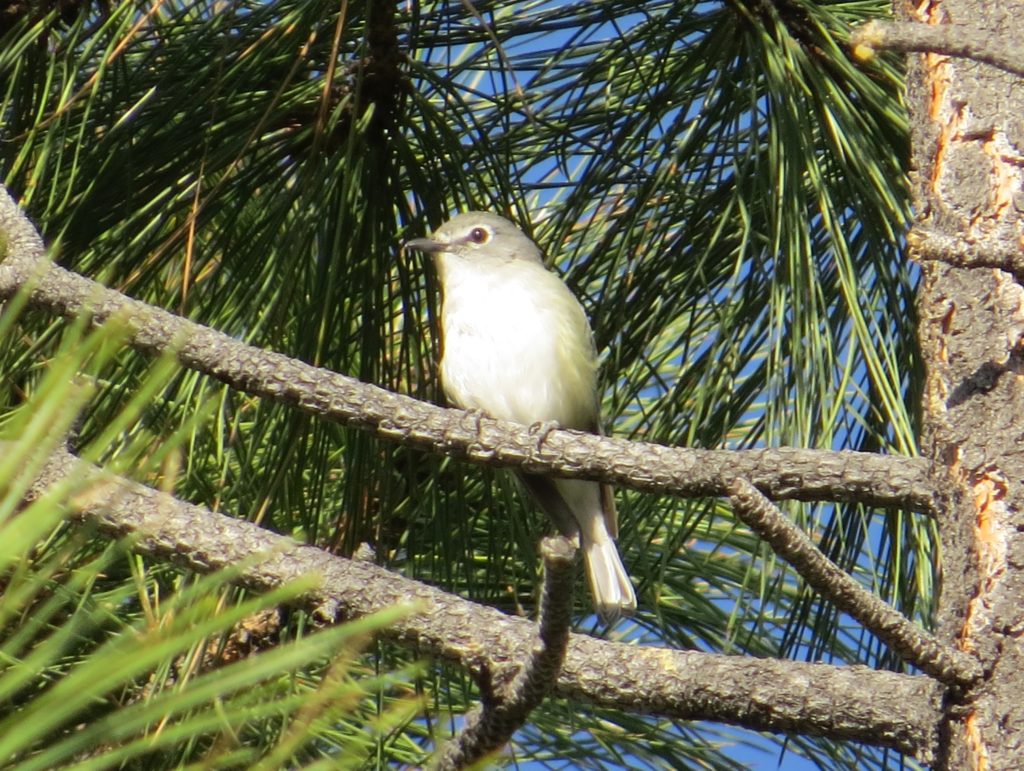
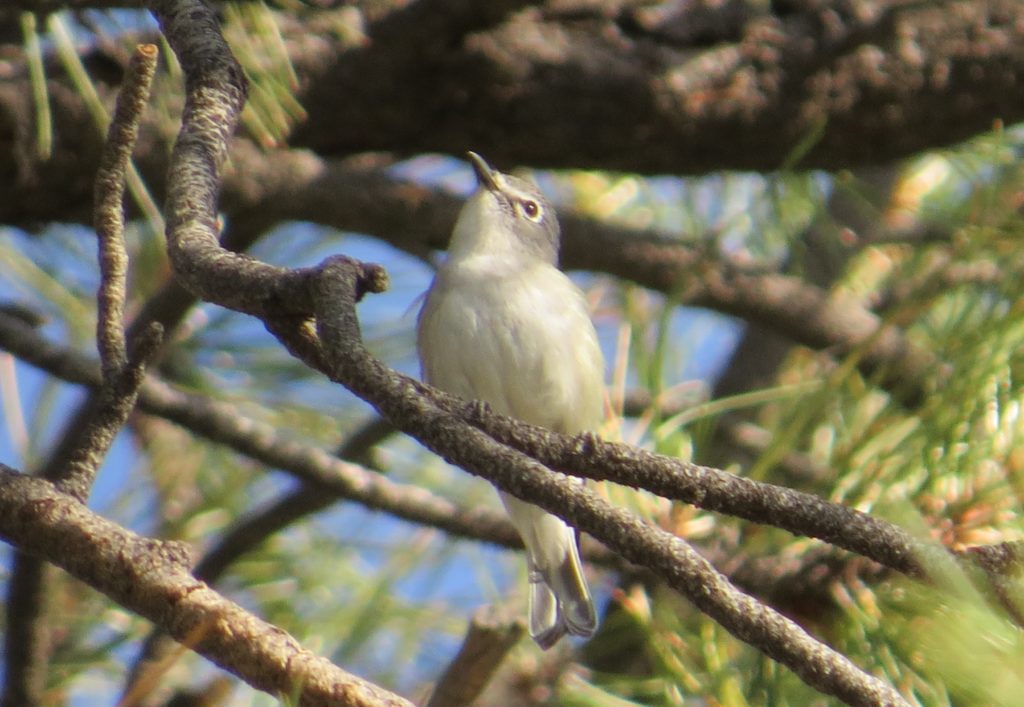 Elden Springs Road merges on to Schultz Pass Road, which was a reported location of numerous individuals of the bird I wanted to see most, the Red-faced Warbler. Tommy had me stop at a spot that looked like good habitat for this warbler–dense stands of Douglas Fir on a slope next to a somewhat open area of Aspens. Sure enough, Tommy picked out a singing Red-faced Warbler almost immediately. As we were trying to get visuals on it, Tommy spotted another lifer for me and one I had been hoping for–a male Williamson’s Sapsucker! Even though the Red-faced Warbler was my most wanted bird after the Flam, we know that would be a relatively easy bird along Schultz Pass Road. Therefore, we ditched the Red-face we had been hearing in an effort to track down the dapper and somewhat elusive Sapsucker. It sure was a tease at first and not offering up much to view.
Elden Springs Road merges on to Schultz Pass Road, which was a reported location of numerous individuals of the bird I wanted to see most, the Red-faced Warbler. Tommy had me stop at a spot that looked like good habitat for this warbler–dense stands of Douglas Fir on a slope next to a somewhat open area of Aspens. Sure enough, Tommy picked out a singing Red-faced Warbler almost immediately. As we were trying to get visuals on it, Tommy spotted another lifer for me and one I had been hoping for–a male Williamson’s Sapsucker! Even though the Red-faced Warbler was my most wanted bird after the Flam, we know that would be a relatively easy bird along Schultz Pass Road. Therefore, we ditched the Red-face we had been hearing in an effort to track down the dapper and somewhat elusive Sapsucker. It sure was a tease at first and not offering up much to view.
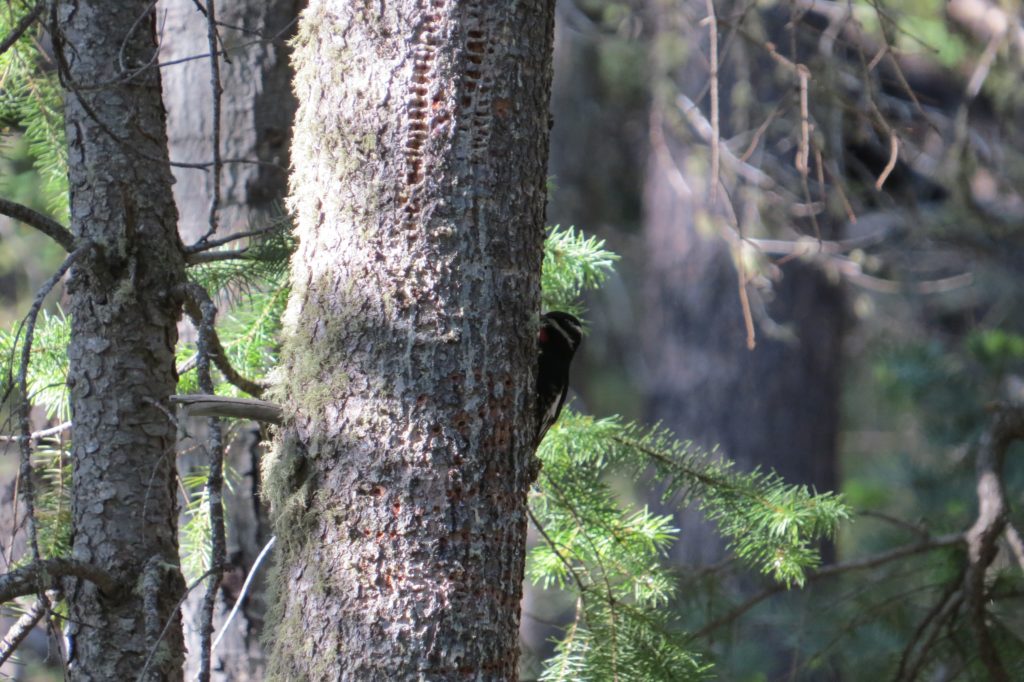 Eventually we got the full monty as it was too busy drilling sap wells to care about a couple of gawkers.
Eventually we got the full monty as it was too busy drilling sap wells to care about a couple of gawkers.
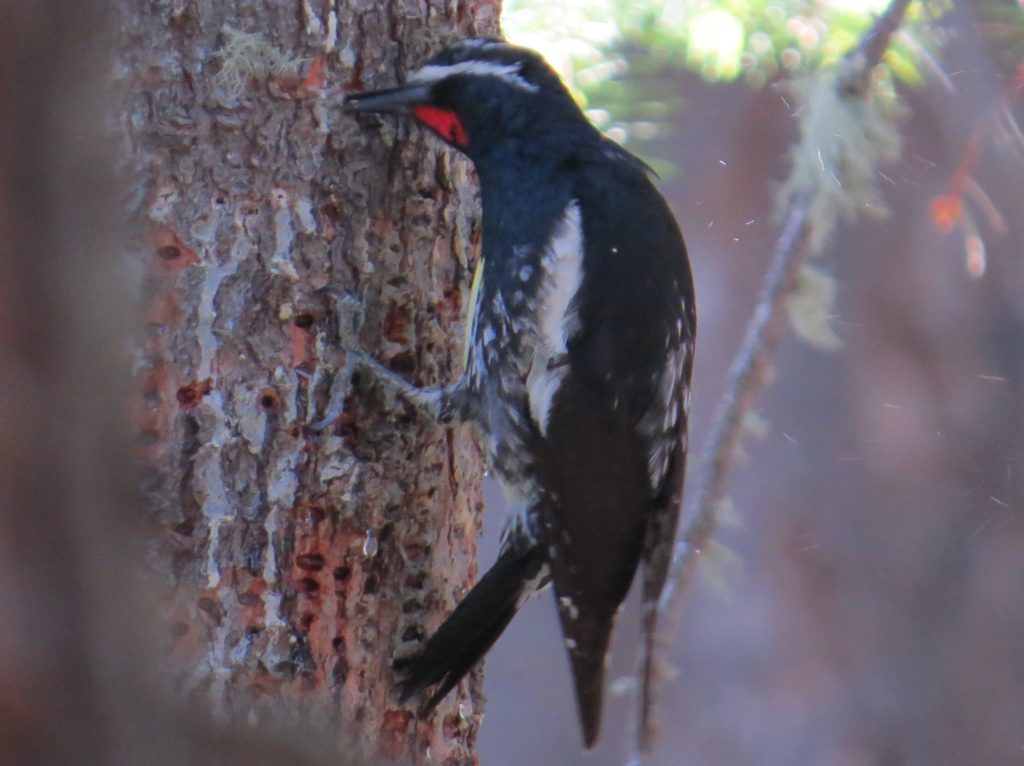
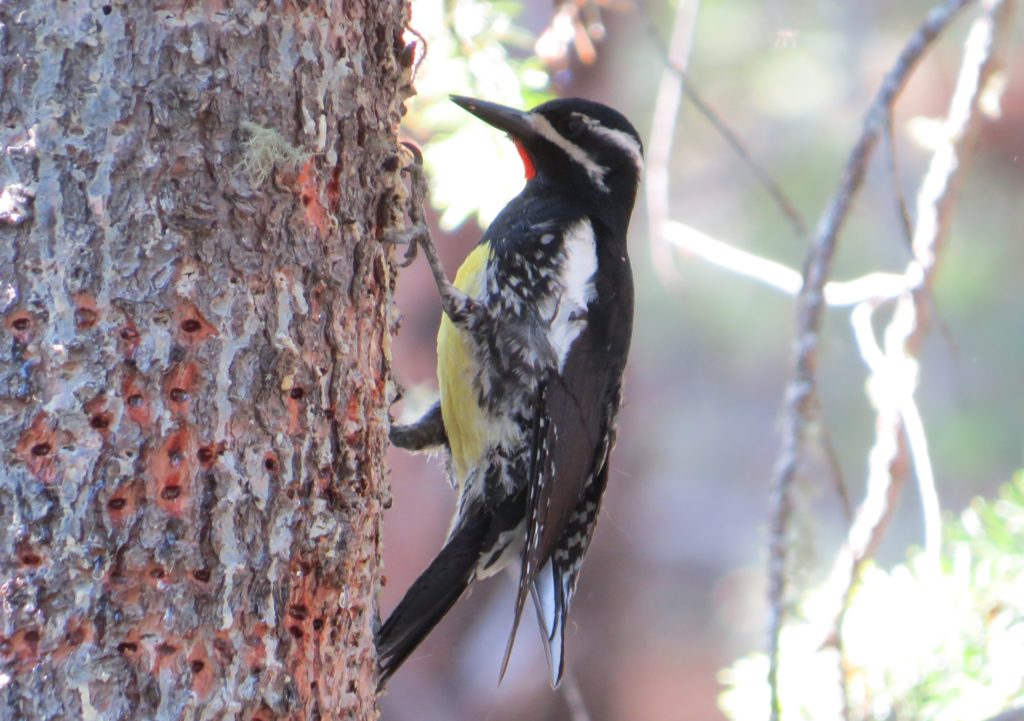 Once the Williamson’s was fully enjoyed, we turned our attention to the Red-faced Warbler. I was highly impatient to finally see this bird that we were hearing. And then it finally happened, and it was glorious.
Once the Williamson’s was fully enjoyed, we turned our attention to the Red-faced Warbler. I was highly impatient to finally see this bird that we were hearing. And then it finally happened, and it was glorious.
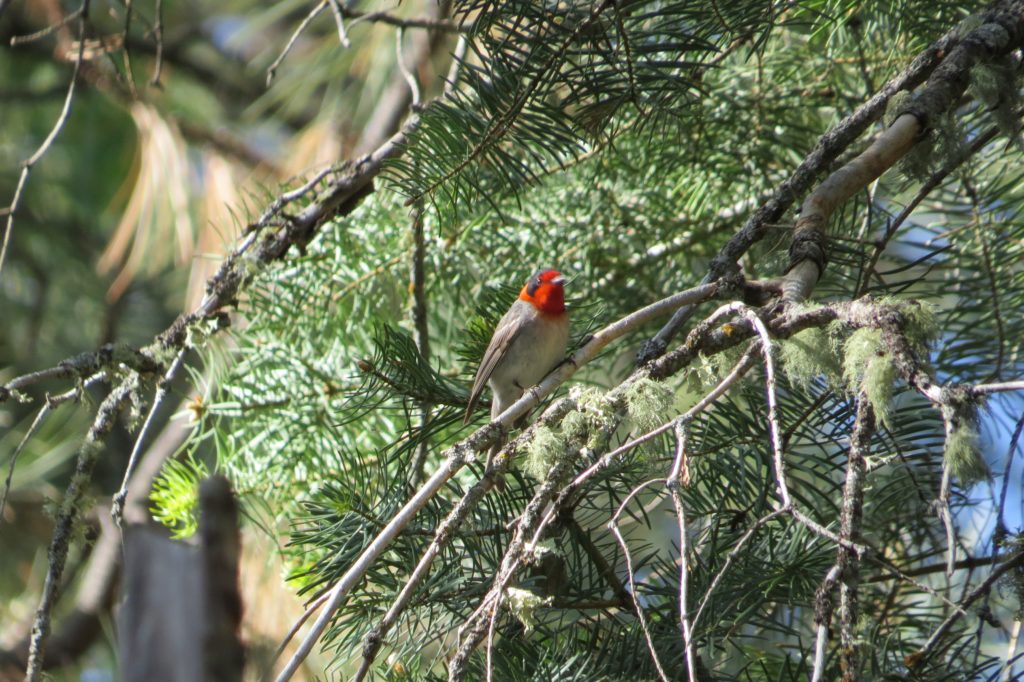 Adding to the pleasure of finally seeing this bird is that Red-faced Warblers are curious and therefore crushable.
Adding to the pleasure of finally seeing this bird is that Red-faced Warblers are curious and therefore crushable.
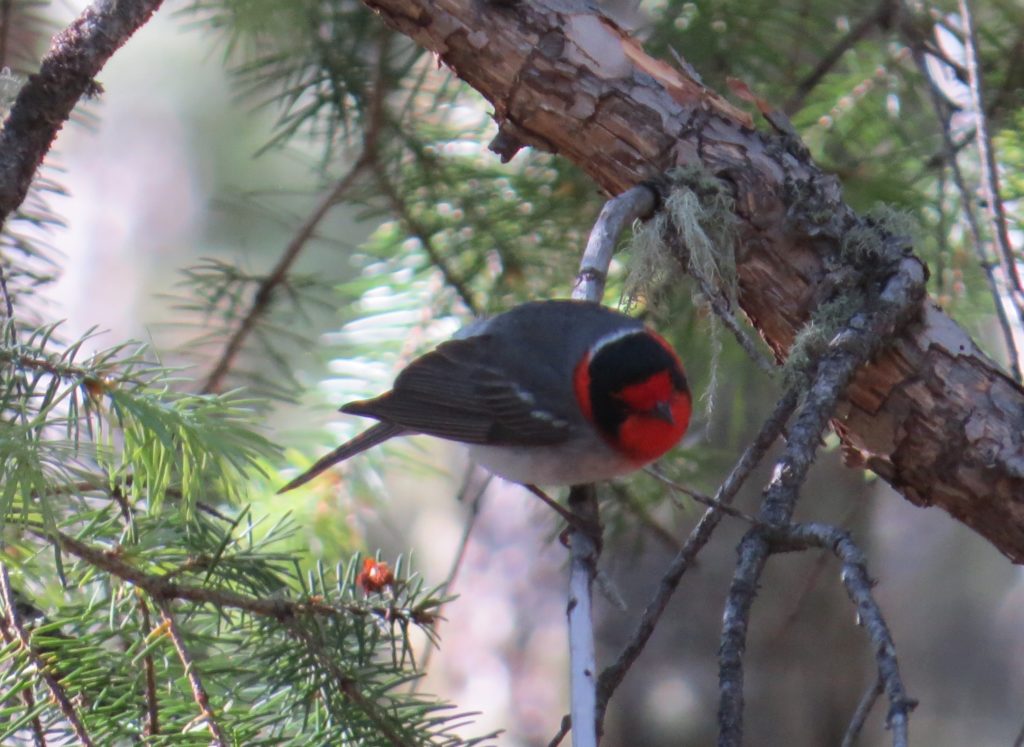
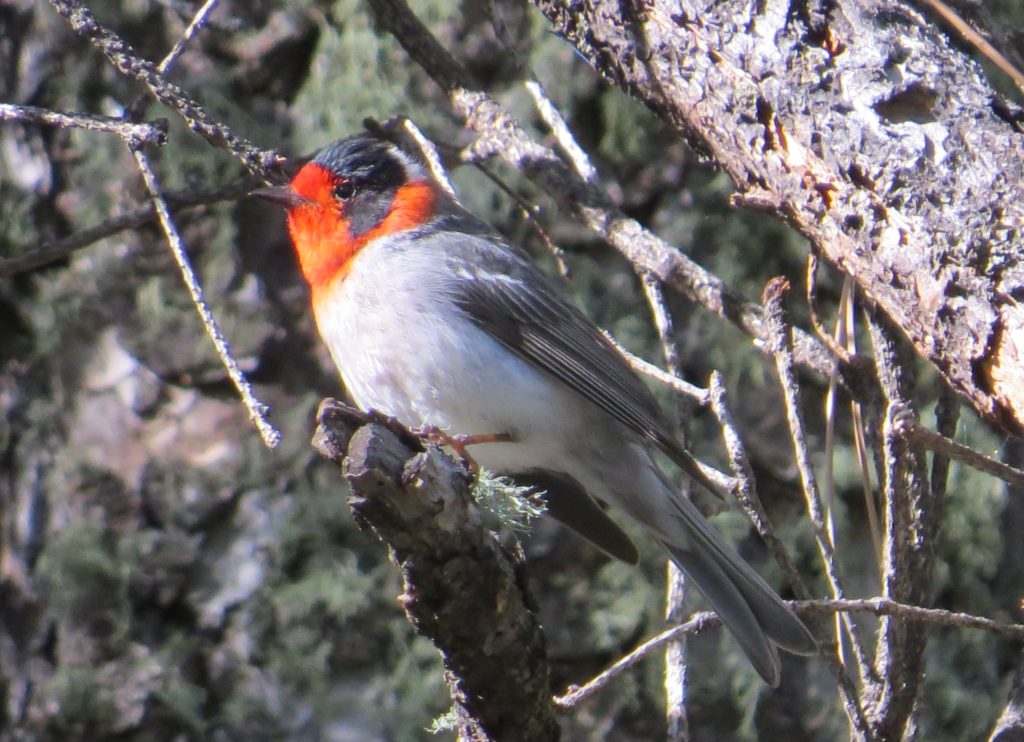
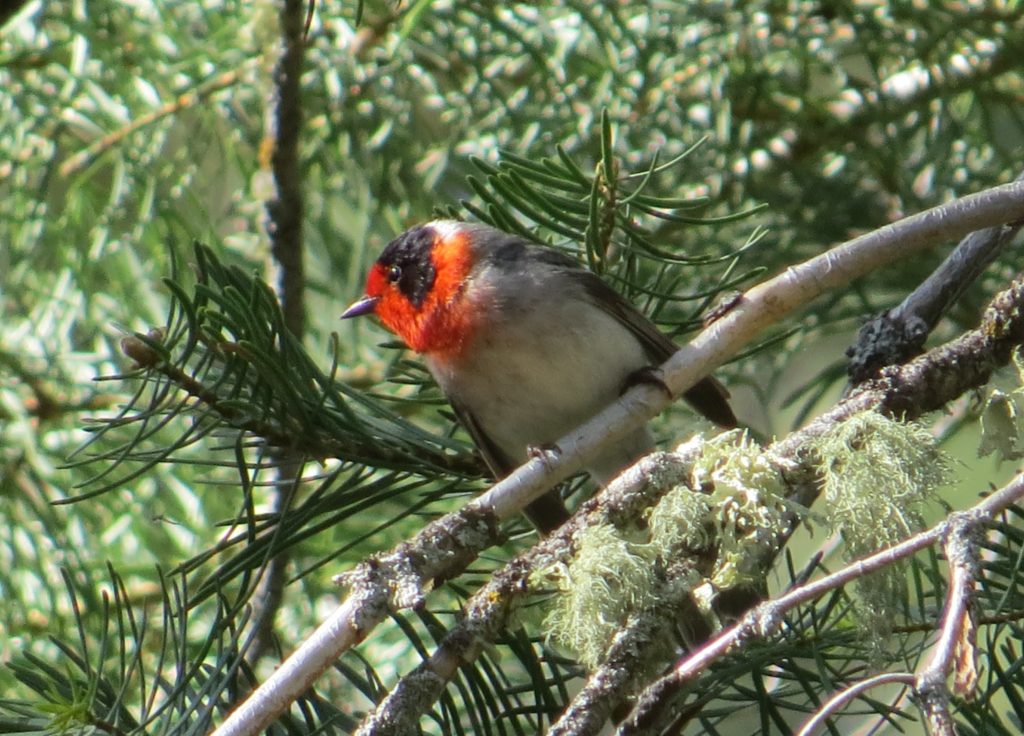 By the time we were done birding Schultz Pass Road, we had seen several of these Warblers. Each was just as exciting as the last. Even Tommy has to stop and look at each one, they are that captivating.
By the time we were done birding Schultz Pass Road, we had seen several of these Warblers. Each was just as exciting as the last. Even Tommy has to stop and look at each one, they are that captivating.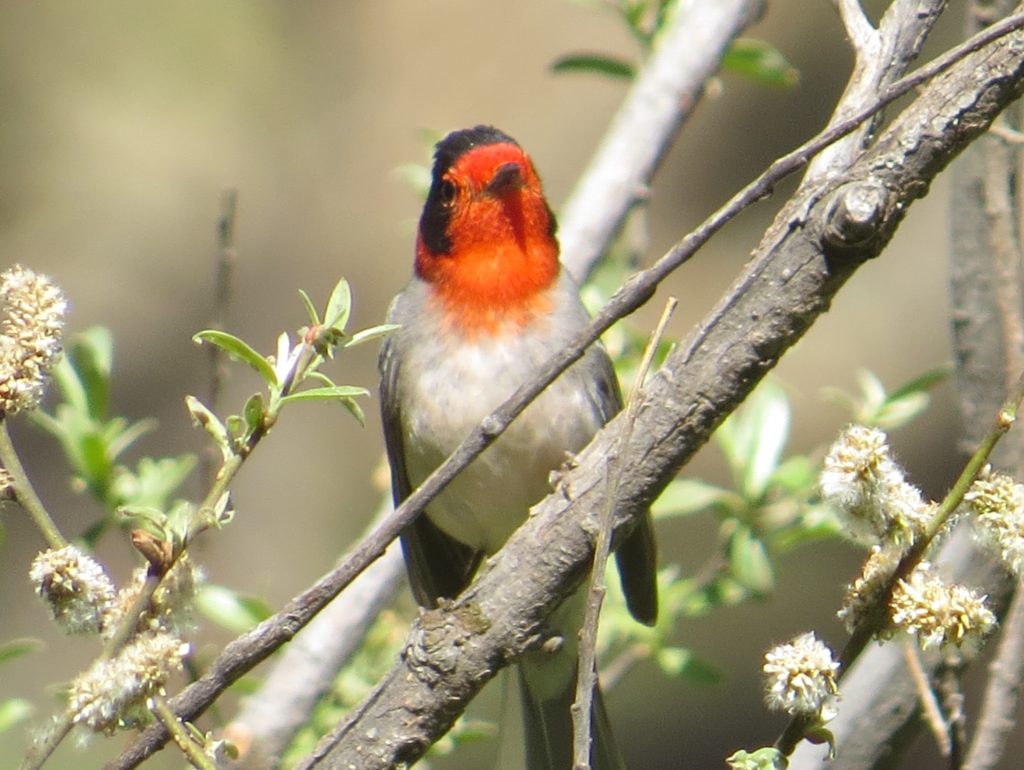 There were no more lifers on this morning of birding around Flagstaff. Tommy and I had found all my targets with relative ease, and there was really nothing left to go after. I’m kicking myself for not doing more research because MacGilivray’s Warblers breed in the area by Hart Prairie which is just northwest of Flagstaff. Oh well, something to add to my northern Arizona to-do list next time we come back to view the Grand Canyon (and the California Condors!)
There were no more lifers on this morning of birding around Flagstaff. Tommy and I had found all my targets with relative ease, and there was really nothing left to go after. I’m kicking myself for not doing more research because MacGilivray’s Warblers breed in the area by Hart Prairie which is just northwest of Flagstaff. Oh well, something to add to my northern Arizona to-do list next time we come back to view the Grand Canyon (and the California Condors!)
My last hope for lifers on this trip would occur on our drive from Flagstaff back to Phoenix. We were able to take a leisurely drive south since we were overnighting in Phoenix and didn’t have to catch a plane until the next day. So instead of hopping on I-17, we drove through Oak Creek Canyon and Sedona. Oak Creek Canyon and the red rock formations of the Sedona area are a must-see experience for anybody. For the birders, there is even more to experience. My list of hopefuls was short: Yellow-breasted Chat, Common Black-Hawk, and Brown-crested Flycatcher.
After scouring eBird, I had picked a spot caled the Encinoso Picnic Area as a place to look for the Chat. It looked really small and held multiple birds–perfect for a quick search while a non-birding family waited in the car. Evan’s 4th grader park pass got us into this National Forest Service fee site for free too (it works for all federal lands and not just national parks). Anyhow, when I stepped out of the car I heard the distinctive calls, croaks, and whistles of a Yellow-breasted Chat immediately. And then I found a second and third equally loud Chat. Getting visuals on any proved very difficult. I did see one as it flew straight up out of the thicket it was calling from. The yellow breast was as impressive as it was unmistakable. Trying to find a perched bird was nearly impossible though. My family waited for nearly an hour in the air-conditioned car while I tromped through the picnic area picking up ridiculous amounts of painful, thorny grass seeds of some kind in my shoes. And here is all I have to show for my toil:
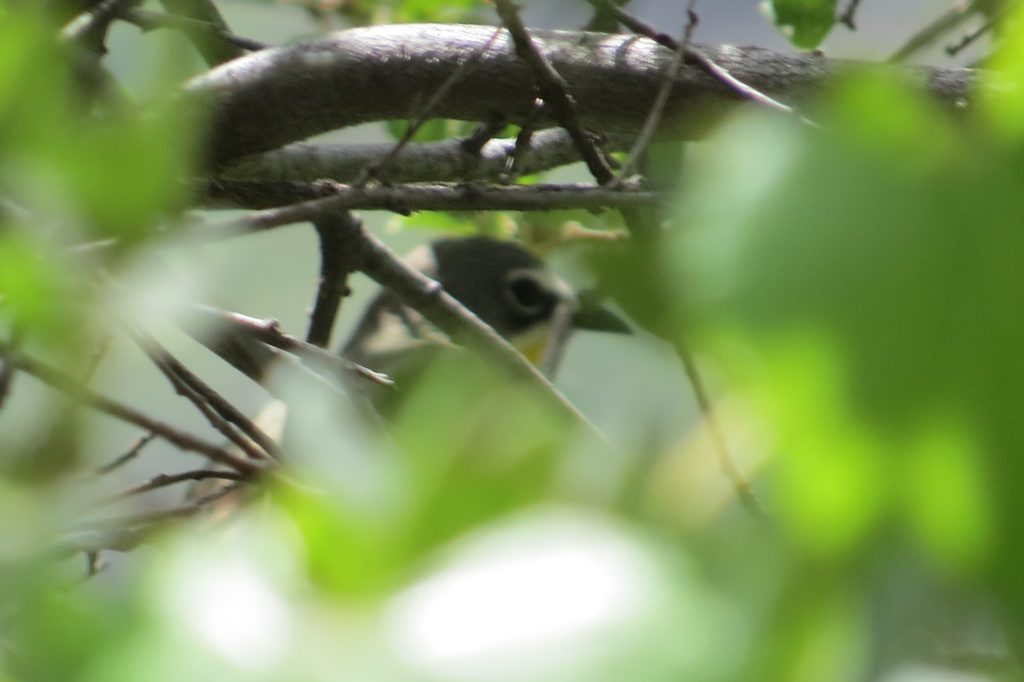 I’m not naive. I understand this is a typical experience with this bird species. It was still frustrating. At one point I could hear a Chat singing in the thicket right in front of me. I figured it had to be perched on top somewhere. So I climbed a rock, held the camera above my head, snapped a picture, and hoped for the best. Well, I got him. Can you see it?
I’m not naive. I understand this is a typical experience with this bird species. It was still frustrating. At one point I could hear a Chat singing in the thicket right in front of me. I figured it had to be perched on top somewhere. So I climbed a rock, held the camera above my head, snapped a picture, and hoped for the best. Well, I got him. Can you see it?
 Here it is at a different perch. Same effect.
Here it is at a different perch. Same effect.
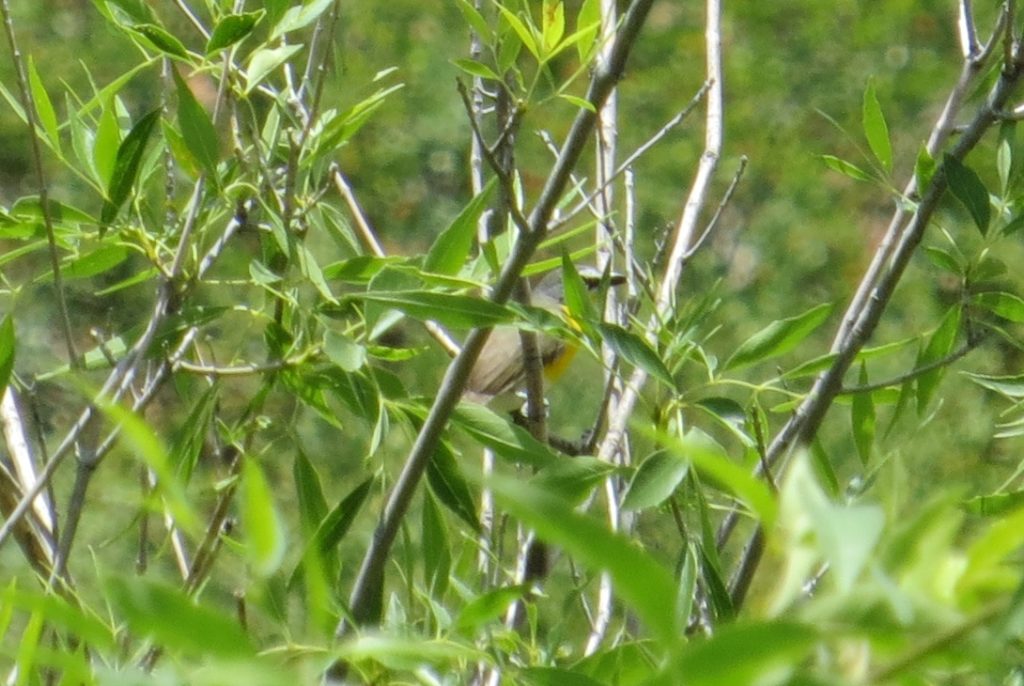 Yellow-breasted Chat is just one more bird to add to the list of ‘Better Looks Desired’ birds. At one point I saw a Chat fly into a tree in the distance, and I saw a fleck of yellow among the green leaves, so I just snapped photos of that yellow spot like crazy. Turns out I got a lot of photos of a yellow leaf instead. What an aggravating bird.
Yellow-breasted Chat is just one more bird to add to the list of ‘Better Looks Desired’ birds. At one point I saw a Chat fly into a tree in the distance, and I saw a fleck of yellow among the green leaves, so I just snapped photos of that yellow spot like crazy. Turns out I got a lot of photos of a yellow leaf instead. What an aggravating bird.
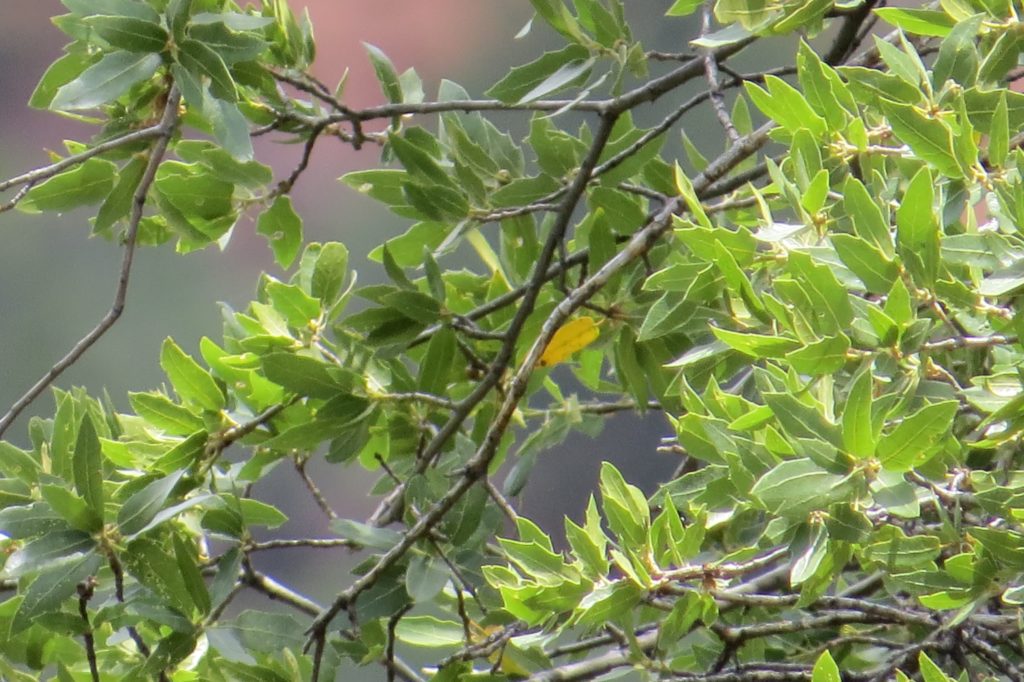 As we continued our drive to Sedona enjoying the views of the canyon walls from the bottom of Oak Creek Canyon, we decided to pull into the National Forest Service’s Grashopper Point recreation site. This was another fee area that we got into for free–thanks Evan. The draw of this site is that people like to cool off in Oak Creek here. More specifically, people cliff jump off a high rock face into a 15-foot wide creek below! Apparently this narrow creek is quite deep, allowing the people we saw jumping to come out unscathed. We did not attempt it. I was not completely sold on its safety.
As we continued our drive to Sedona enjoying the views of the canyon walls from the bottom of Oak Creek Canyon, we decided to pull into the National Forest Service’s Grashopper Point recreation site. This was another fee area that we got into for free–thanks Evan. The draw of this site is that people like to cool off in Oak Creek here. More specifically, people cliff jump off a high rock face into a 15-foot wide creek below! Apparently this narrow creek is quite deep, allowing the people we saw jumping to come out unscathed. We did not attempt it. I was not completely sold on its safety.
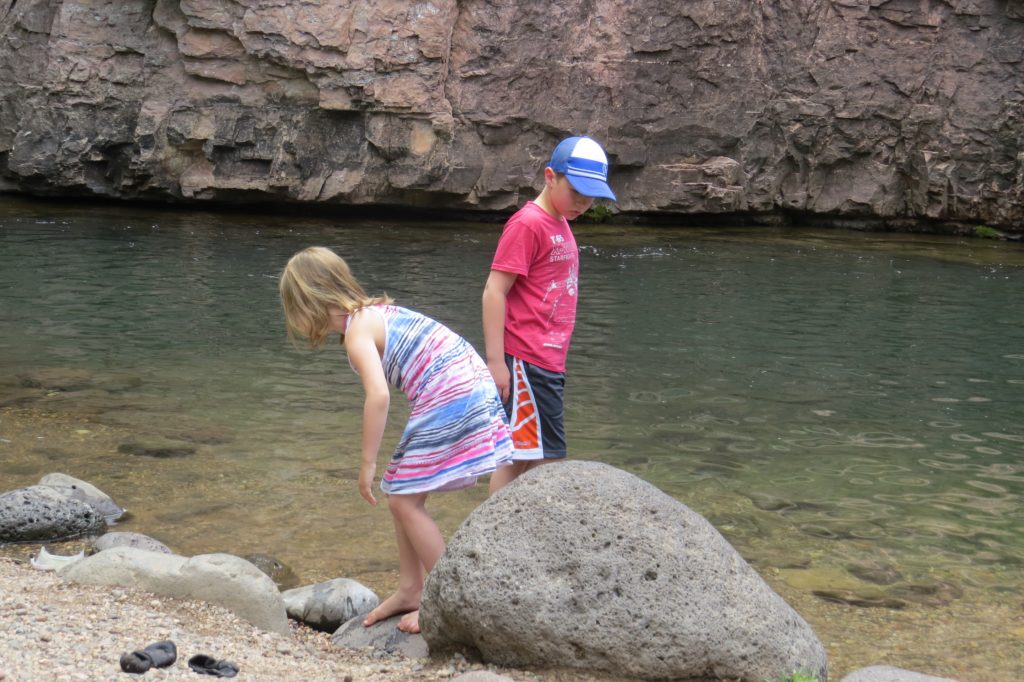 The deep part of the water is quite narrow as you can see the wading area takes up almost half the creek width. This spot where Evan and Marin are wading is where teenagers were jumping into the water from 15-20 feet up the rock face! As I kept an eye on my kids, I also kept an eye out for a Common Black-Hawk in the riparian corridor. Unfortunately one never materialized. I was also keeping an eye and an ear out for a family of Brown-crested Flycatchers that had been reported here. I had actually given up on them too, but seconds before we got in the car to leave I spied a silent flycatcher on top of a snag a long ways away. I snapped some photos and was pleasantly surprised to see I had captured my lifer Brown-crested Flycatcher!
The deep part of the water is quite narrow as you can see the wading area takes up almost half the creek width. This spot where Evan and Marin are wading is where teenagers were jumping into the water from 15-20 feet up the rock face! As I kept an eye on my kids, I also kept an eye out for a Common Black-Hawk in the riparian corridor. Unfortunately one never materialized. I was also keeping an eye and an ear out for a family of Brown-crested Flycatchers that had been reported here. I had actually given up on them too, but seconds before we got in the car to leave I spied a silent flycatcher on top of a snag a long ways away. I snapped some photos and was pleasantly surprised to see I had captured my lifer Brown-crested Flycatcher!
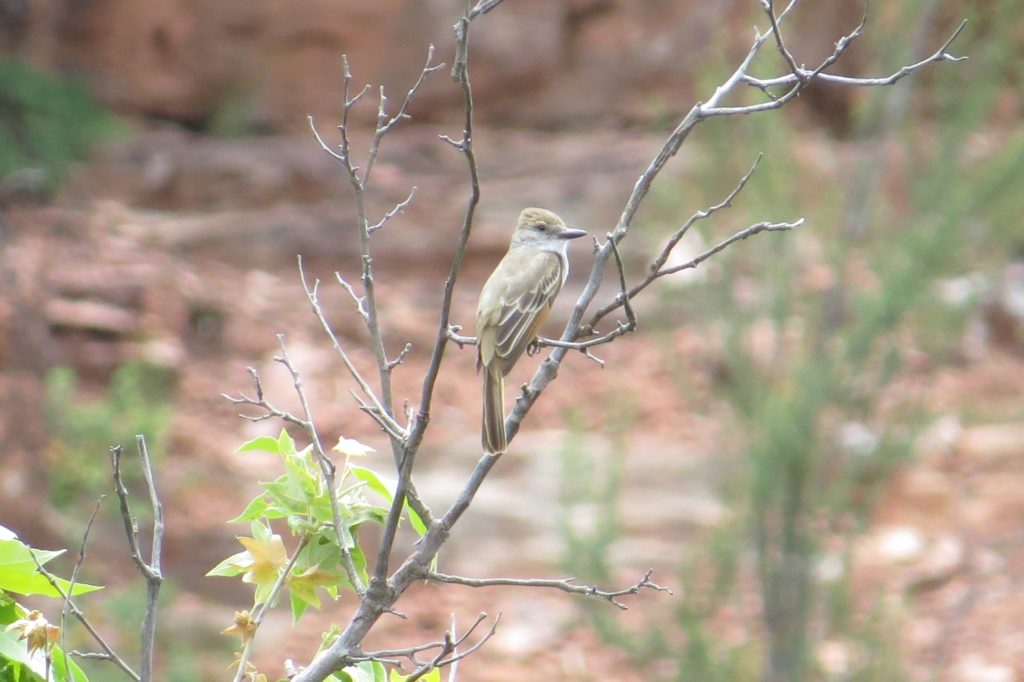 The Brown-crested Flycatcher is distinguished from the similar-looking Ash-throated Flycatcher which inhabits the same area by its larger bill, completely rufous tail underneath, and a brighter yellow belly. Thankfully, this Flycatcher turned around to make sure I could see all the appropriate field marks.
The Brown-crested Flycatcher is distinguished from the similar-looking Ash-throated Flycatcher which inhabits the same area by its larger bill, completely rufous tail underneath, and a brighter yellow belly. Thankfully, this Flycatcher turned around to make sure I could see all the appropriate field marks.
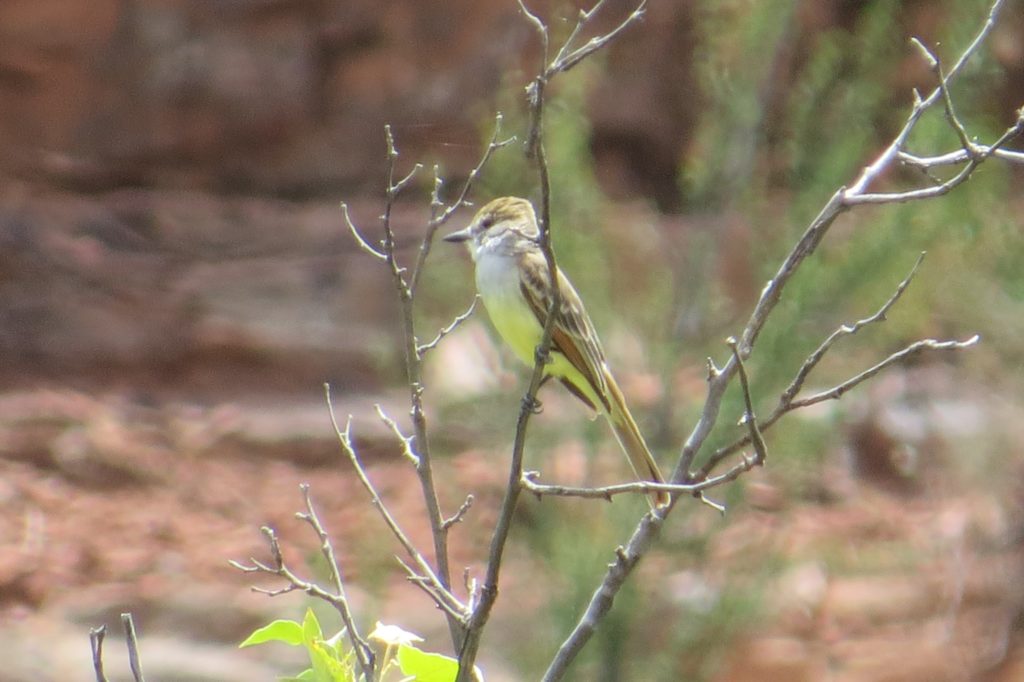 The lifering on this fifth trip to AZ was definitely a quality over quantity sort of thing. And unless I make a summer trip to SE AZ, the lifering will be significantly limited on subsequent trips to visit my parents in central AZ in the winter months. Regardless of lifers being available, good birds can ALWAYS be had in Arizona. In the next post, I’ll highlight my favorite non-lifers from this most recent trip.
The lifering on this fifth trip to AZ was definitely a quality over quantity sort of thing. And unless I make a summer trip to SE AZ, the lifering will be significantly limited on subsequent trips to visit my parents in central AZ in the winter months. Regardless of lifers being available, good birds can ALWAYS be had in Arizona. In the next post, I’ll highlight my favorite non-lifers from this most recent trip.

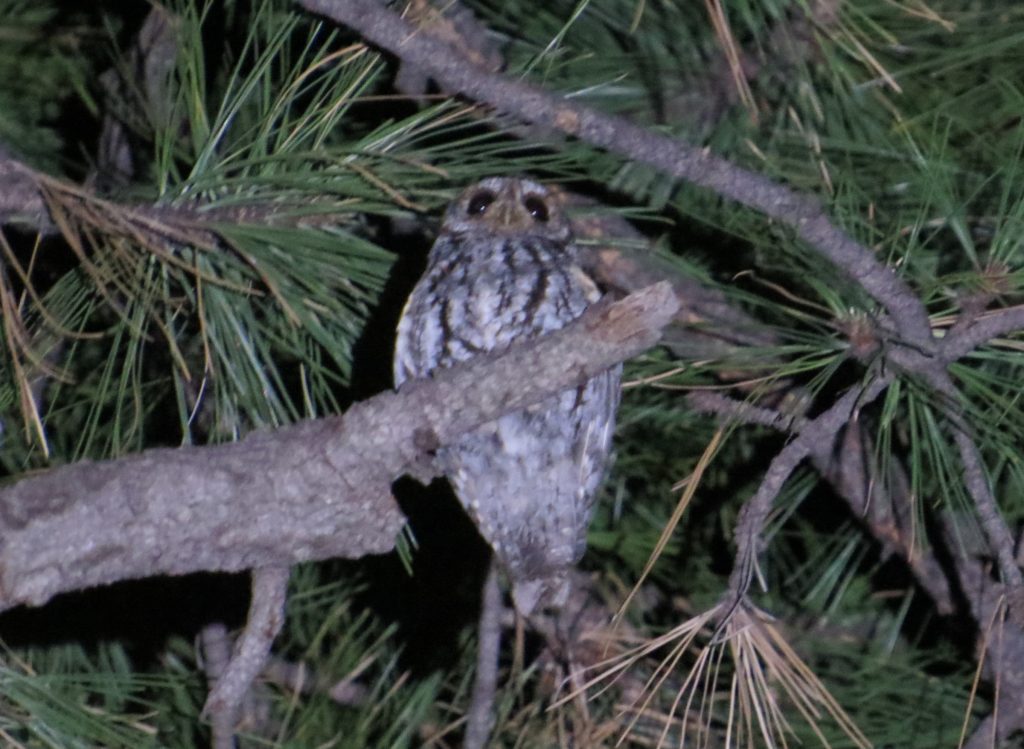
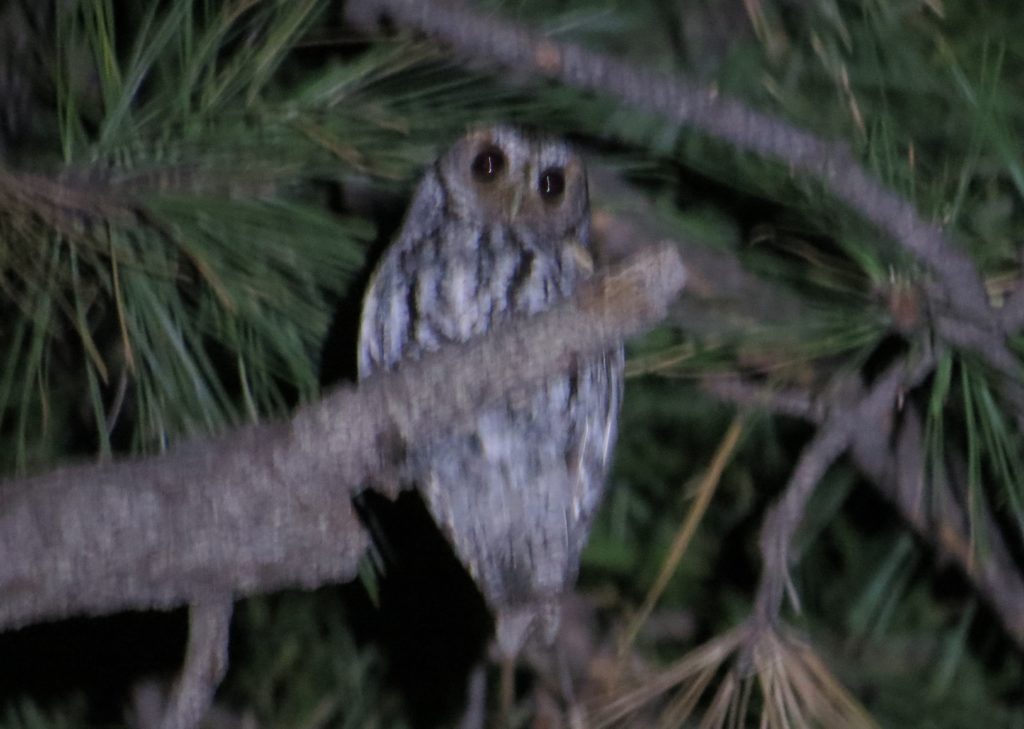
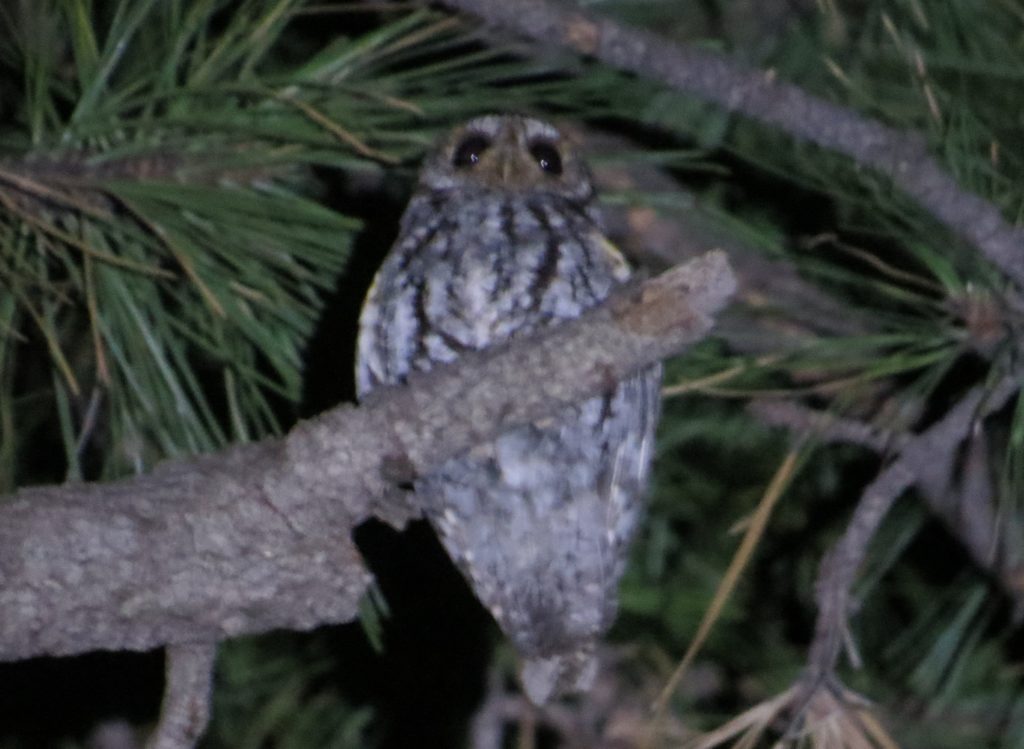
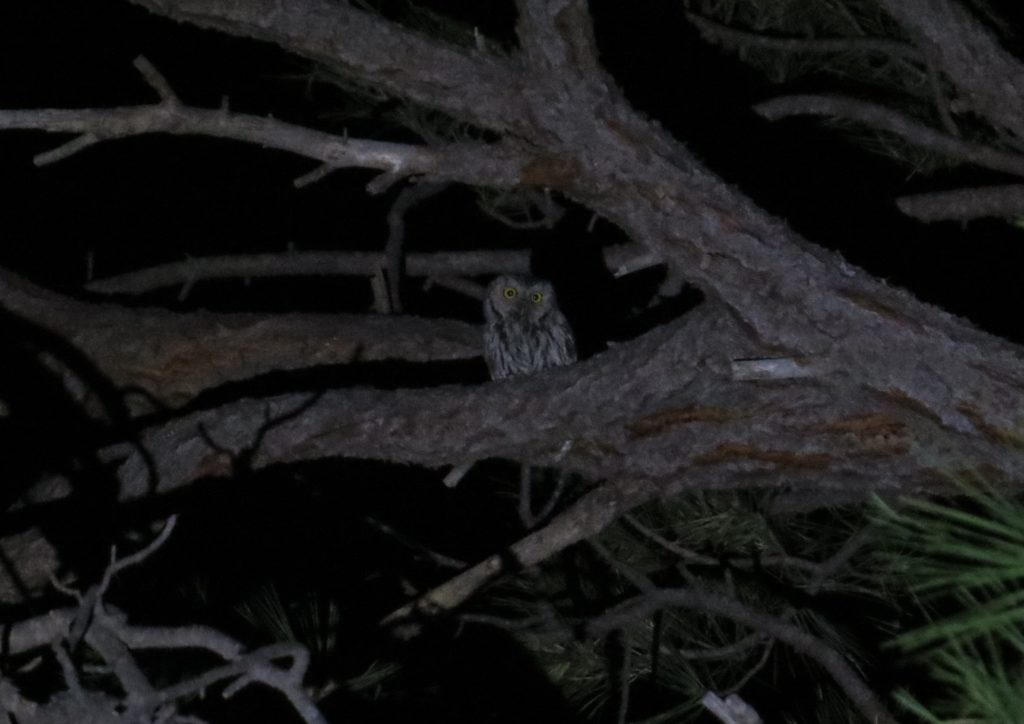
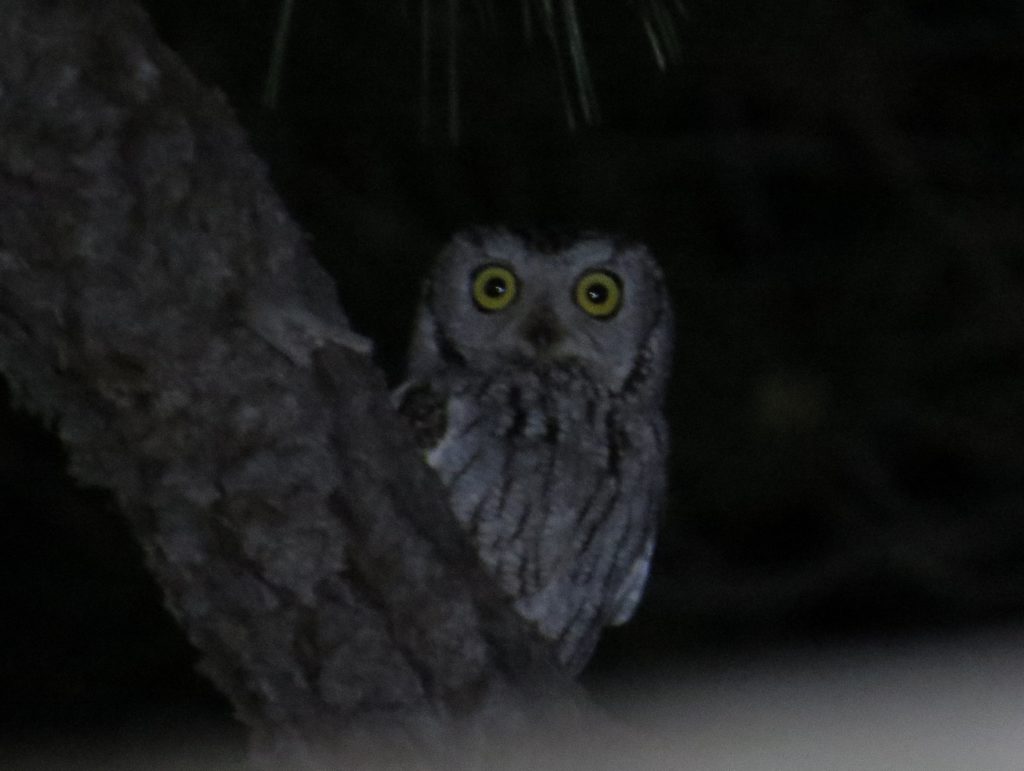 After the Screech-Owl fun, we kept up our search for Flams with no further sightings. A pair of dueting Great Horned Owls did give us a three-Owl night, however. With Flammulated Owl locked down and photo-documented as my 17th Owl lifer, the trip was a huge success. A fun coincidence is that the Flam was Tommy’s 17th Owl species for TOBY. I can’t thank Tommy enough for all the Owl species he has shown me (7 in all!). The next day we celebrated in a most appropriate way–eating at the Toasted Owl Cafe right by our resort in Flagstaff. It’s very good, by the way.
After the Screech-Owl fun, we kept up our search for Flams with no further sightings. A pair of dueting Great Horned Owls did give us a three-Owl night, however. With Flammulated Owl locked down and photo-documented as my 17th Owl lifer, the trip was a huge success. A fun coincidence is that the Flam was Tommy’s 17th Owl species for TOBY. I can’t thank Tommy enough for all the Owl species he has shown me (7 in all!). The next day we celebrated in a most appropriate way–eating at the Toasted Owl Cafe right by our resort in Flagstaff. It’s very good, by the way.
 Since that comment was written, I have knocked off all those ducks but one–the Barrow’s Goldeneye, a bird considered casual in Minnesota occurring roughly every 5 years. As I am getting to the end of my normal MN birds, BAGO was rapidly moving its way up to the top of the list of my most-wanted birds. Last year I chased a female BAGO in Fergus Falls but failed. This year there have been a couple other reports but nothing I considered reliable and therefore chaseable. Well, a little over two weeks ago, Adam Roesch birded at the Mississippi River in Champlin–quite aways upstream from his beloved patch–and made a stunning discovery. Among the myriad of Common Goldeneye, Adam found and photographed a beautiful male Barrow’s Goldeneye. And with that find, Adam submitted his first ever eBird checklist. Talk about an entrance.
Since that comment was written, I have knocked off all those ducks but one–the Barrow’s Goldeneye, a bird considered casual in Minnesota occurring roughly every 5 years. As I am getting to the end of my normal MN birds, BAGO was rapidly moving its way up to the top of the list of my most-wanted birds. Last year I chased a female BAGO in Fergus Falls but failed. This year there have been a couple other reports but nothing I considered reliable and therefore chaseable. Well, a little over two weeks ago, Adam Roesch birded at the Mississippi River in Champlin–quite aways upstream from his beloved patch–and made a stunning discovery. Among the myriad of Common Goldeneye, Adam found and photographed a beautiful male Barrow’s Goldeneye. And with that find, Adam submitted his first ever eBird checklist. Talk about an entrance.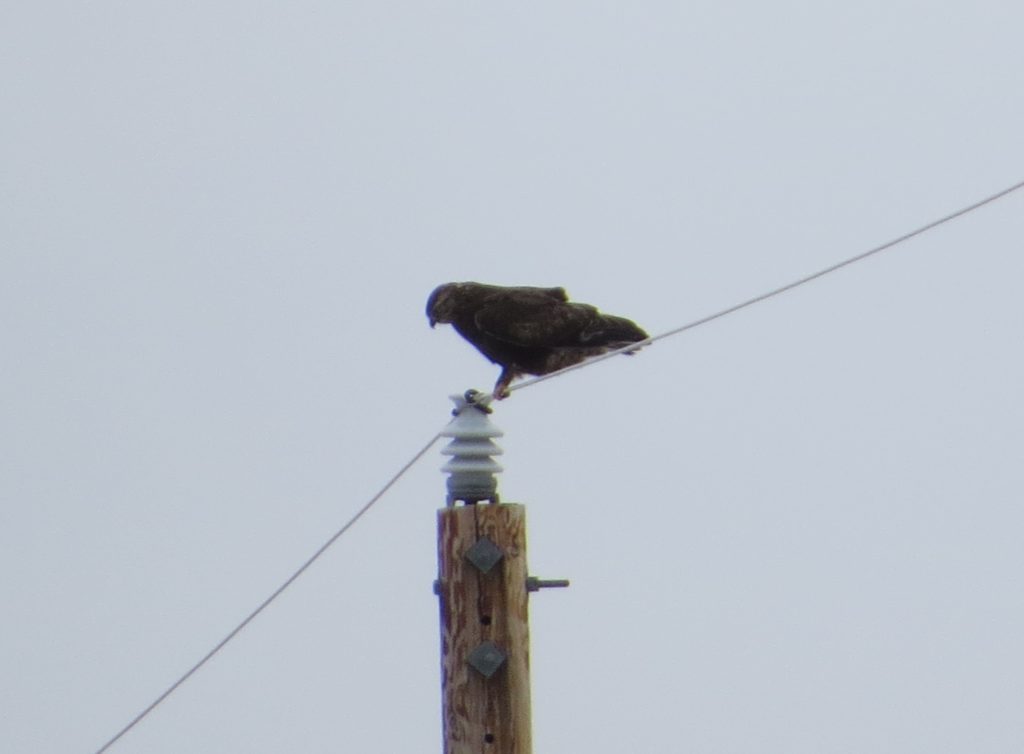
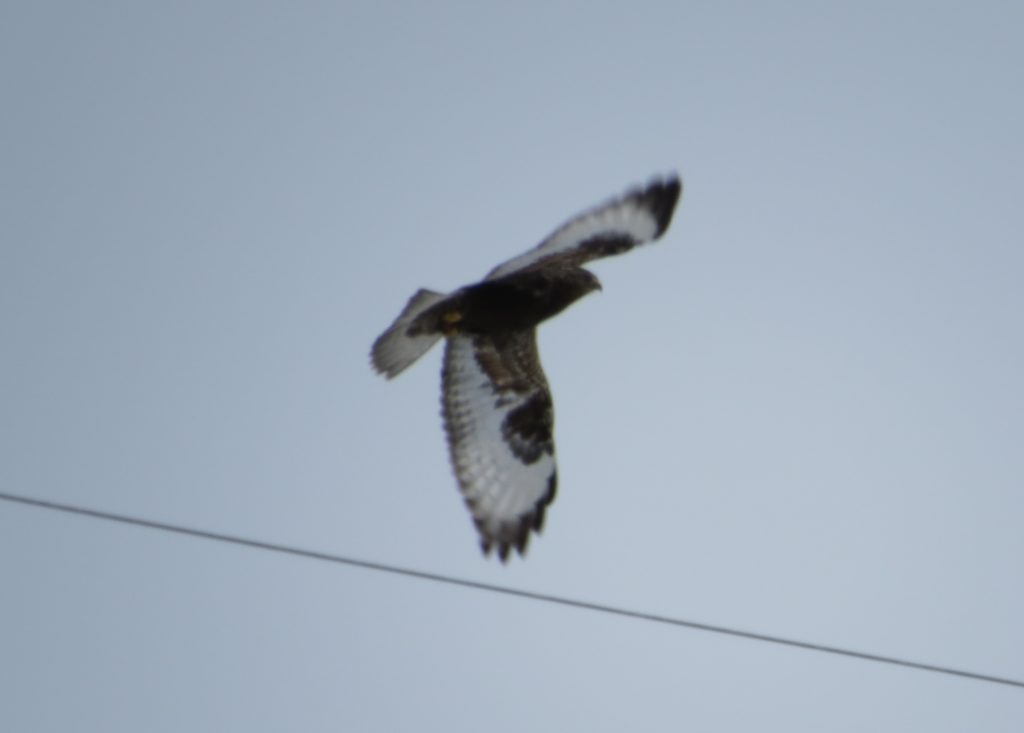 For the second time in as many weekends, we arrived at Anoka’s Peninsula Point Park to scan the Mississippi for the good Goldeneye.
For the second time in as many weekends, we arrived at Anoka’s Peninsula Point Park to scan the Mississippi for the good Goldeneye.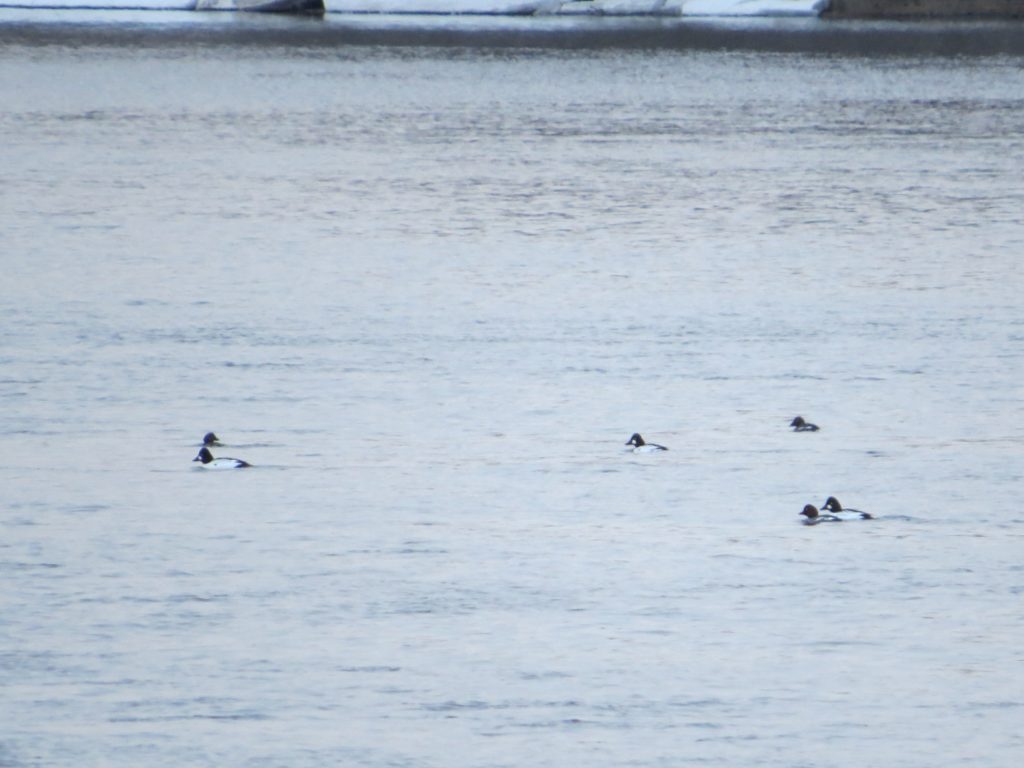
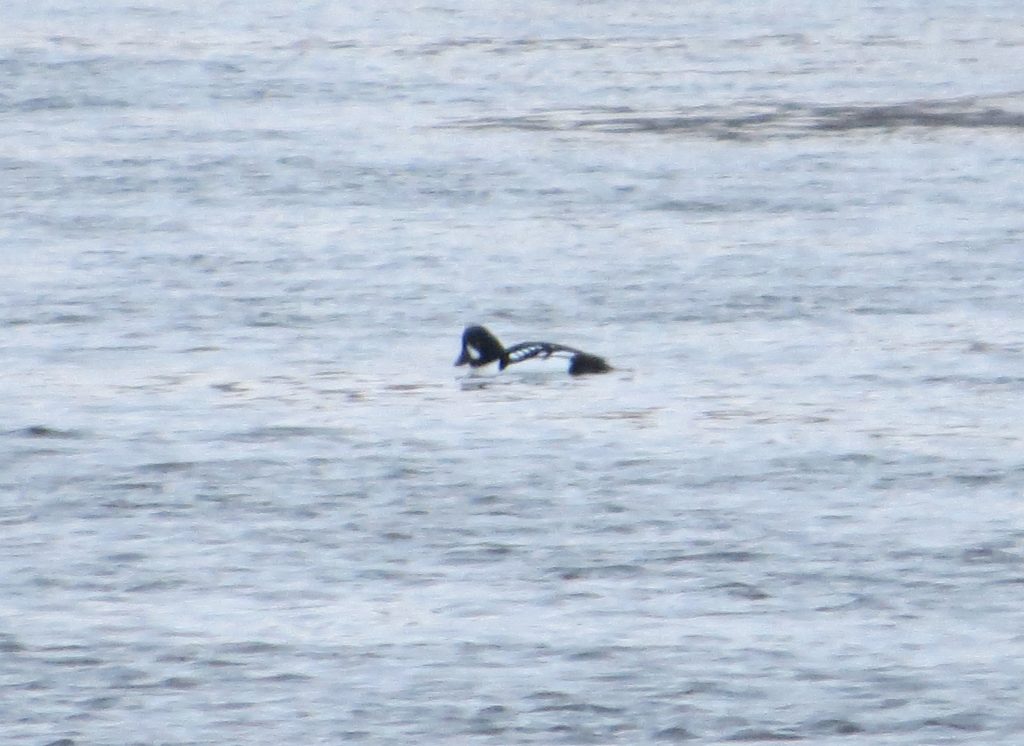 There’s just something that I absolutely love about getting duck lifers in the cold months.
There’s just something that I absolutely love about getting duck lifers in the cold months.
 I’m not lying. This skyline view of Minneapolis is literally what this Snowy Owl can see from its bizarre winter territory. I am used to looking for Snowies in urban environments, but nothing quite like this. Snowy Owls aren’t that hard to spot in places like this, yet I was having a hard time, a really hard time. I finally ran into another birder who clued me in to this sneaky Snowy’s hideout.
I’m not lying. This skyline view of Minneapolis is literally what this Snowy Owl can see from its bizarre winter territory. I am used to looking for Snowies in urban environments, but nothing quite like this. Snowy Owls aren’t that hard to spot in places like this, yet I was having a hard time, a really hard time. I finally ran into another birder who clued me in to this sneaky Snowy’s hideout. See it? Yeah, I didn’t either without help.
See it? Yeah, I didn’t either without help.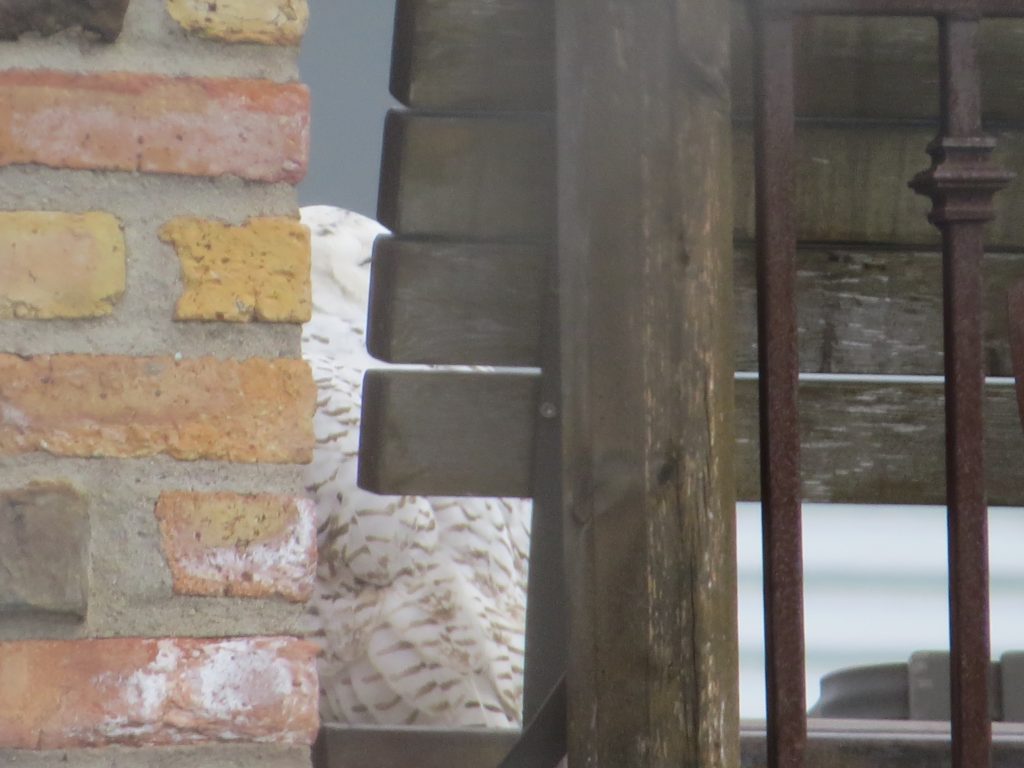 Never have I seen an Owl, Snowy or otherwise, so well fortified. Camouflaged, yes, but not entrenched. I tried every which angle and every side of the building for a shot.
Never have I seen an Owl, Snowy or otherwise, so well fortified. Camouflaged, yes, but not entrenched. I tried every which angle and every side of the building for a shot.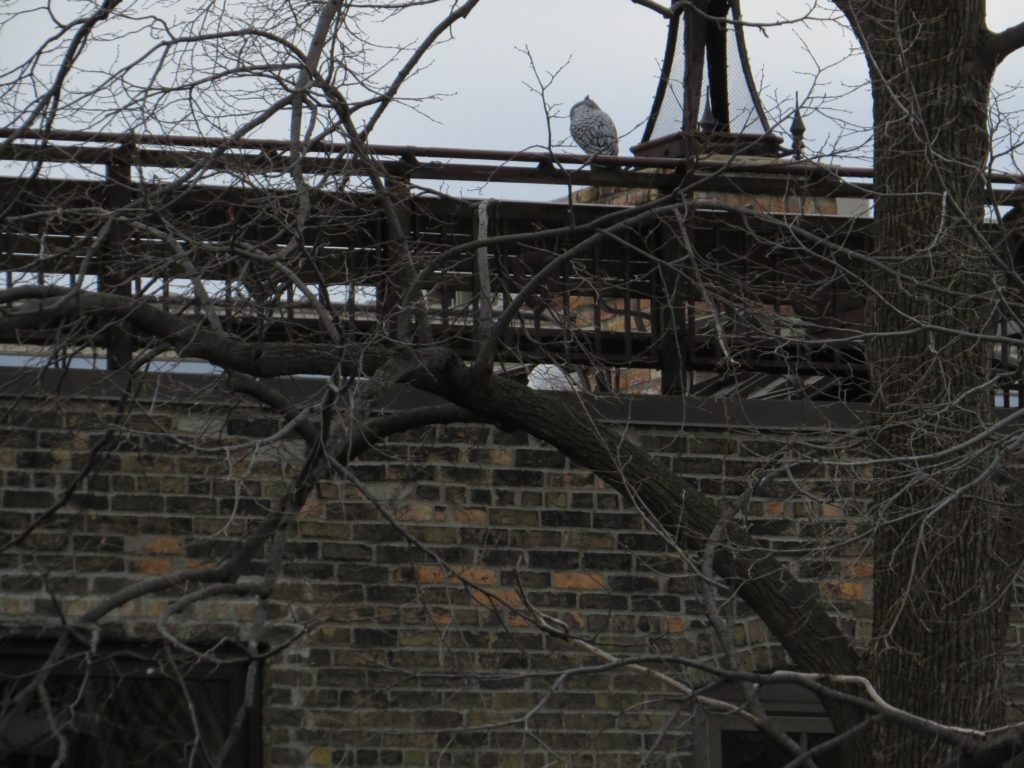
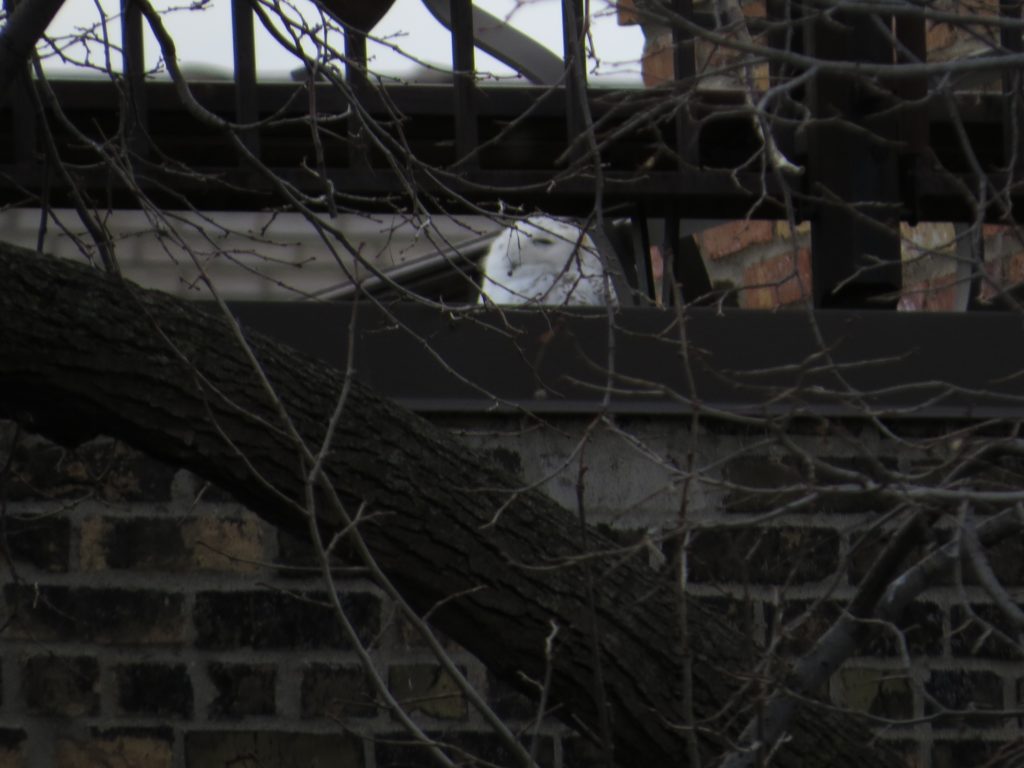 The non-birding-totally-birding metro trip was a success by any standard. It was back to rural west-cental MN where more adventure awaited in the days to come. We’ll save that for the next post, but to close things out, here’s a Great Horned Owl the kids and I saw on the ride back home.
The non-birding-totally-birding metro trip was a success by any standard. It was back to rural west-cental MN where more adventure awaited in the days to come. We’ll save that for the next post, but to close things out, here’s a Great Horned Owl the kids and I saw on the ride back home.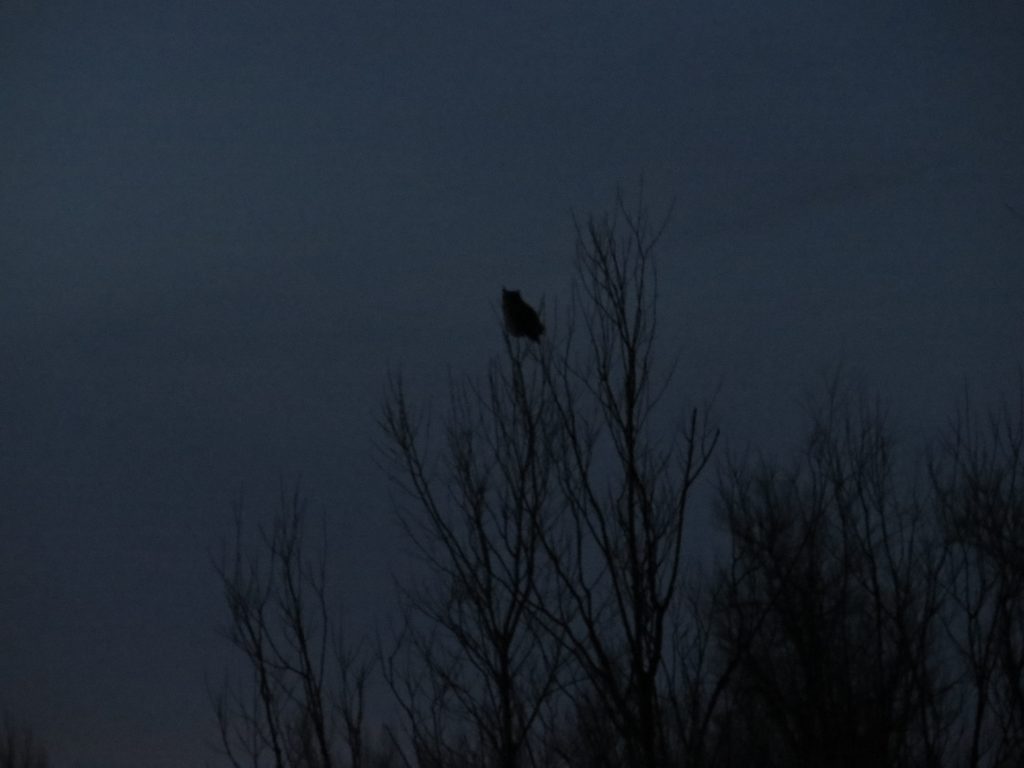
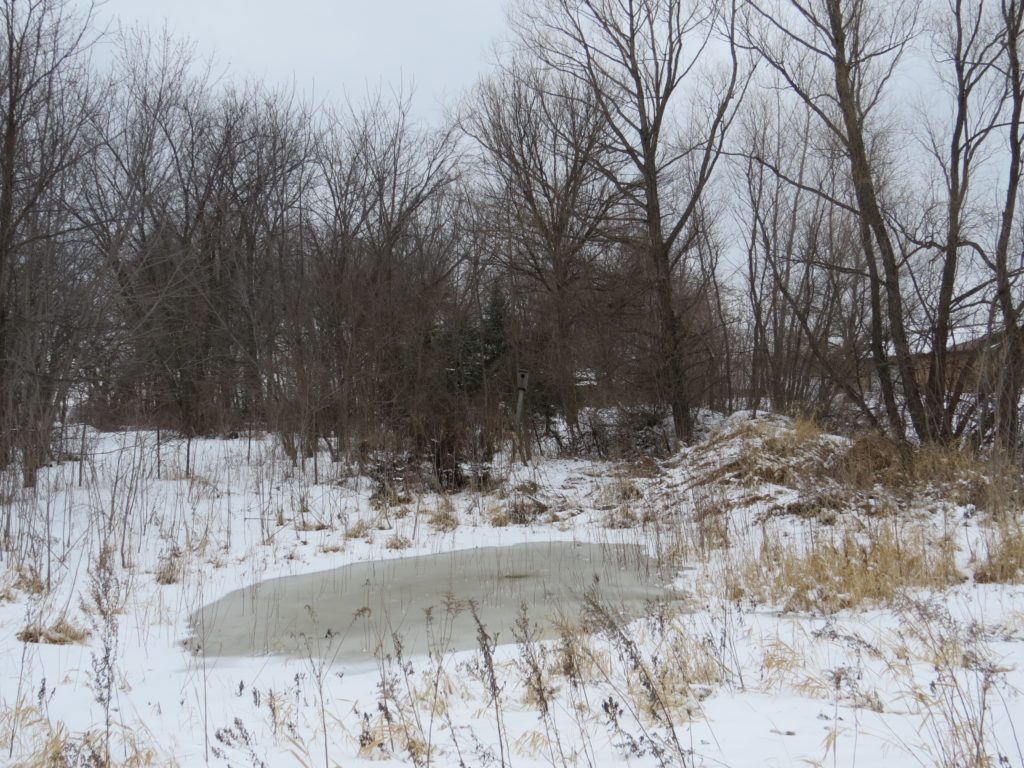 The homeowner, Kathy, assured Jeff the Owl was there regularly; it would just be a matter of me finding a time to make the 2-hour trip. Funny thing when you are a parent, your time no longer belongs to you–work and kid activities keep us hopping and out of the house most every day and now on weekends too. Birding definitely takes a back seat. I was feeling the need to get this done though; bird in the hand and whatnot. With Melissa being gone on a trip all weekend, I was staring at some serious single-parenting. The red Screech dream was seemingly out of reach. So I did what any serious Owler would do: cashed in some comp time and took me an Owliday mid-week.
The homeowner, Kathy, assured Jeff the Owl was there regularly; it would just be a matter of me finding a time to make the 2-hour trip. Funny thing when you are a parent, your time no longer belongs to you–work and kid activities keep us hopping and out of the house most every day and now on weekends too. Birding definitely takes a back seat. I was feeling the need to get this done though; bird in the hand and whatnot. With Melissa being gone on a trip all weekend, I was staring at some serious single-parenting. The red Screech dream was seemingly out of reach. So I did what any serious Owler would do: cashed in some comp time and took me an Owliday mid-week.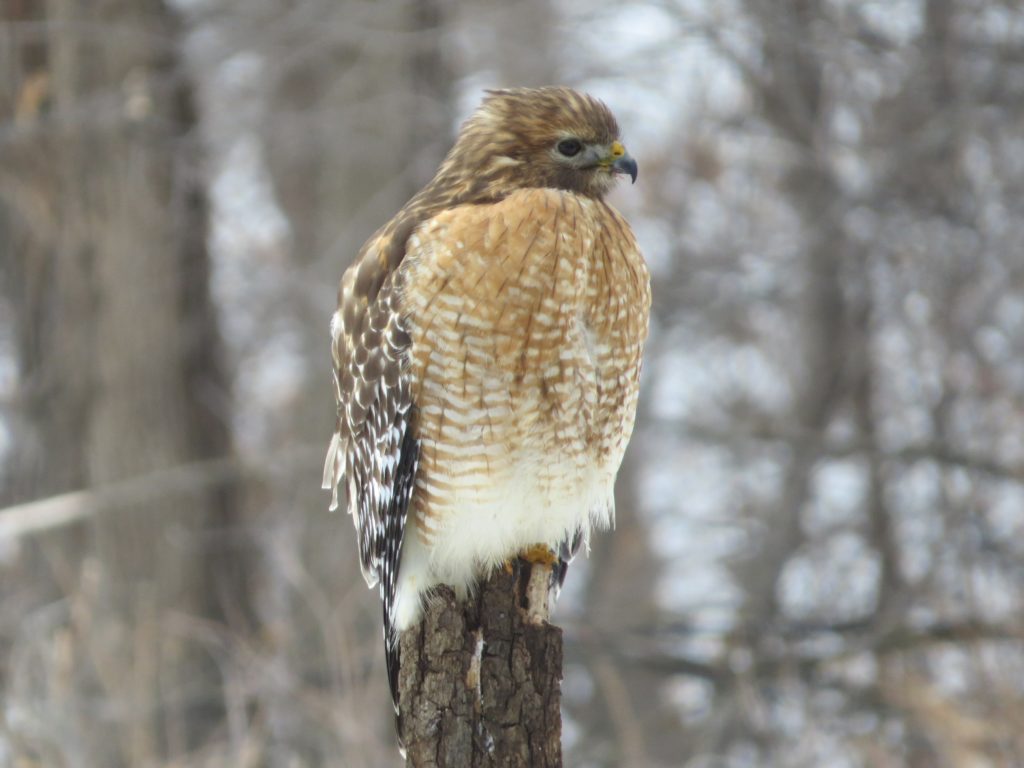
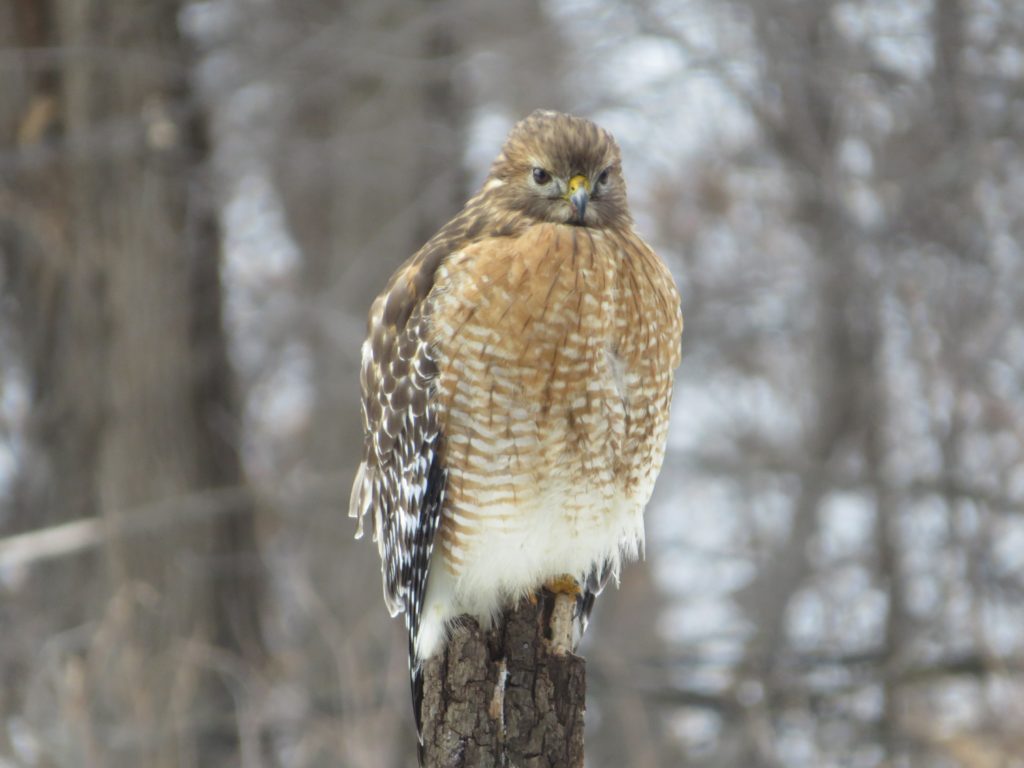 These photos were shot through glass. Like Jeff, Steve is an accomplished photographer who ushered me into his photo blind where I could photograph the Hawk without a glass barrier. Unfortunately, the Hawk got a bit nervous and flew into some tangles. But have a look at that tail!
These photos were shot through glass. Like Jeff, Steve is an accomplished photographer who ushered me into his photo blind where I could photograph the Hawk without a glass barrier. Unfortunately, the Hawk got a bit nervous and flew into some tangles. But have a look at that tail!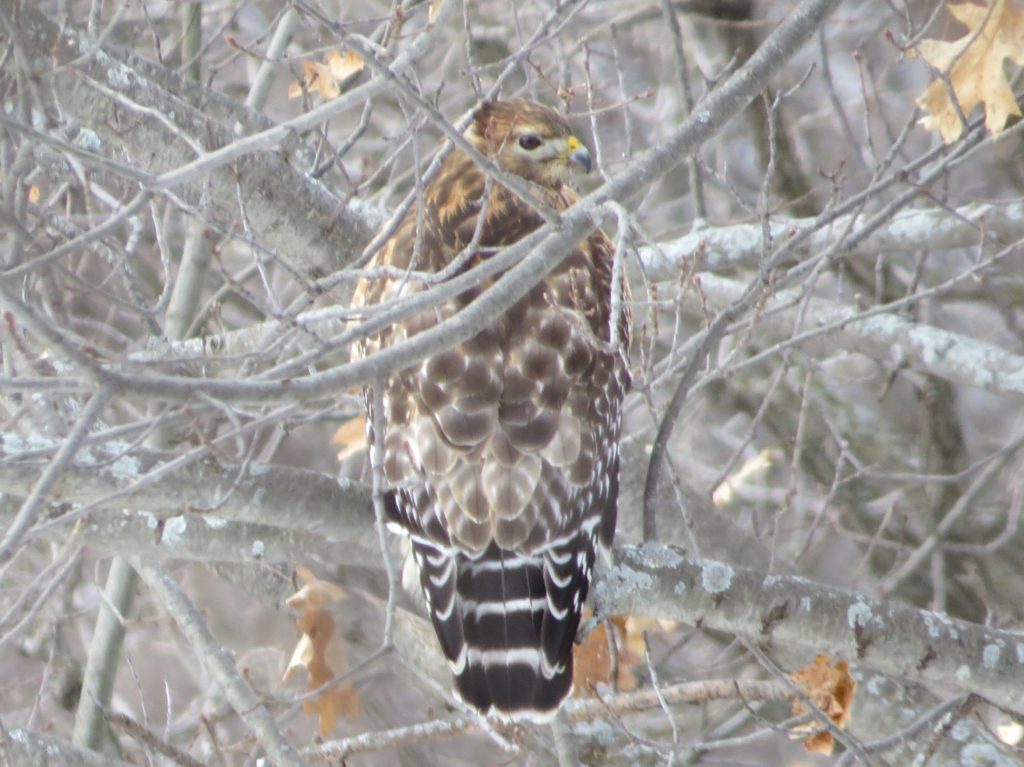 I very quickly learned that Steve, a retired dentist, was taking our birding mission very seriously. While the main object was to get me the red Screech, Steve did not want to send his newest guest away without getting some other good birds too. He was off to a stellar start. In many ways I felt like I was in a parallel birding world to my experiences in Arizona. Jeff was the MN Tommy and Steve was the MN Gordon. Like in Arizona, there was one main mission for the day–get Josh the red Screech. That didn’t mean we couldn’t enjoy a little action while we waited, like this American Black Duck among the 500+ Mallards it was with at the Shakopee Mill Pond. Black Ducks have been really good to me this year.
I very quickly learned that Steve, a retired dentist, was taking our birding mission very seriously. While the main object was to get me the red Screech, Steve did not want to send his newest guest away without getting some other good birds too. He was off to a stellar start. In many ways I felt like I was in a parallel birding world to my experiences in Arizona. Jeff was the MN Tommy and Steve was the MN Gordon. Like in Arizona, there was one main mission for the day–get Josh the red Screech. That didn’t mean we couldn’t enjoy a little action while we waited, like this American Black Duck among the 500+ Mallards it was with at the Shakopee Mill Pond. Black Ducks have been really good to me this year.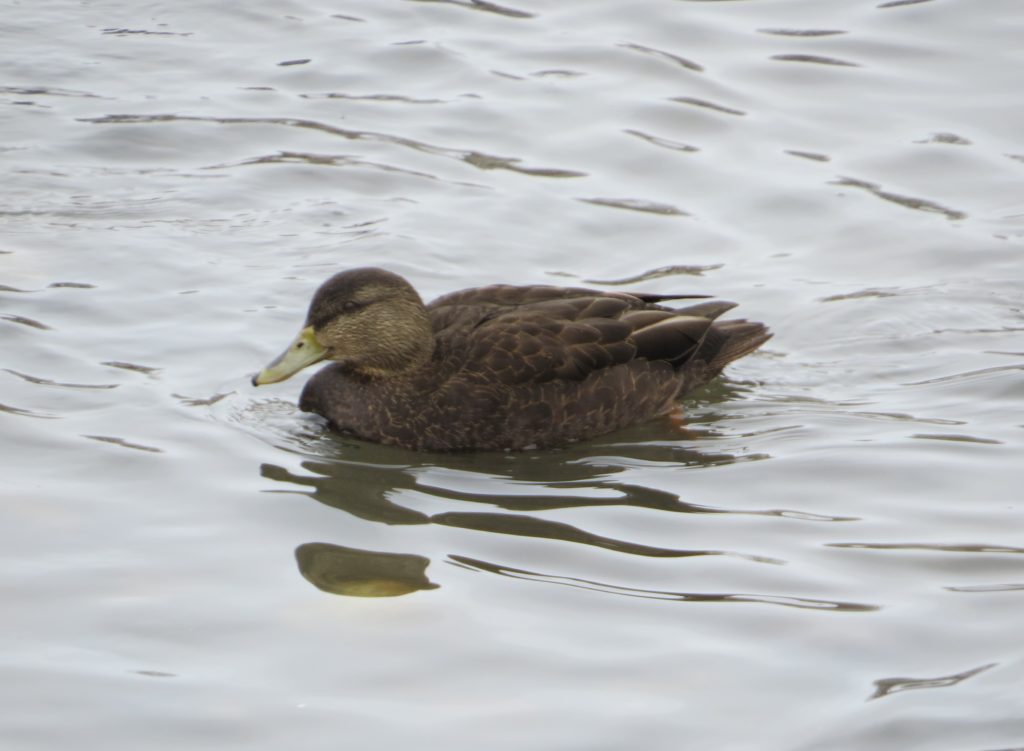 The open water was a good chance to pick up some FOYs as I still struggle to reach that barrier of 50 species. Belted Kingfisher, American Coot, Ring-necked Duck, and Lesser Scaup were all new for the year. Ducks do not hold the attention for long, so we were off to do some backroads exploring while we waited for a sighting update on the red Screech. We were told it pops out of the hole of the Wood Duck box regularly on sunny days. This day was dreadfully cloudy, so we were hearing nothing in regards to the Owl. Just like Tommy, Jeff was really wanting to get me the target Owl bad. We discussed an alternative option in St. Paul, but that was quite far away and no one had seen Screech- Owls in that spot for months. As the hours ticked on, we were all wondering if the day’s objective would be a bust. Jeff figured our best shot was still with this homeowner, so he messaged her to ask if we could poke around the property to try to turn it up. With an affirmative answer, we were on our way to at least make an attempt.
The open water was a good chance to pick up some FOYs as I still struggle to reach that barrier of 50 species. Belted Kingfisher, American Coot, Ring-necked Duck, and Lesser Scaup were all new for the year. Ducks do not hold the attention for long, so we were off to do some backroads exploring while we waited for a sighting update on the red Screech. We were told it pops out of the hole of the Wood Duck box regularly on sunny days. This day was dreadfully cloudy, so we were hearing nothing in regards to the Owl. Just like Tommy, Jeff was really wanting to get me the target Owl bad. We discussed an alternative option in St. Paul, but that was quite far away and no one had seen Screech- Owls in that spot for months. As the hours ticked on, we were all wondering if the day’s objective would be a bust. Jeff figured our best shot was still with this homeowner, so he messaged her to ask if we could poke around the property to try to turn it up. With an affirmative answer, we were on our way to at least make an attempt.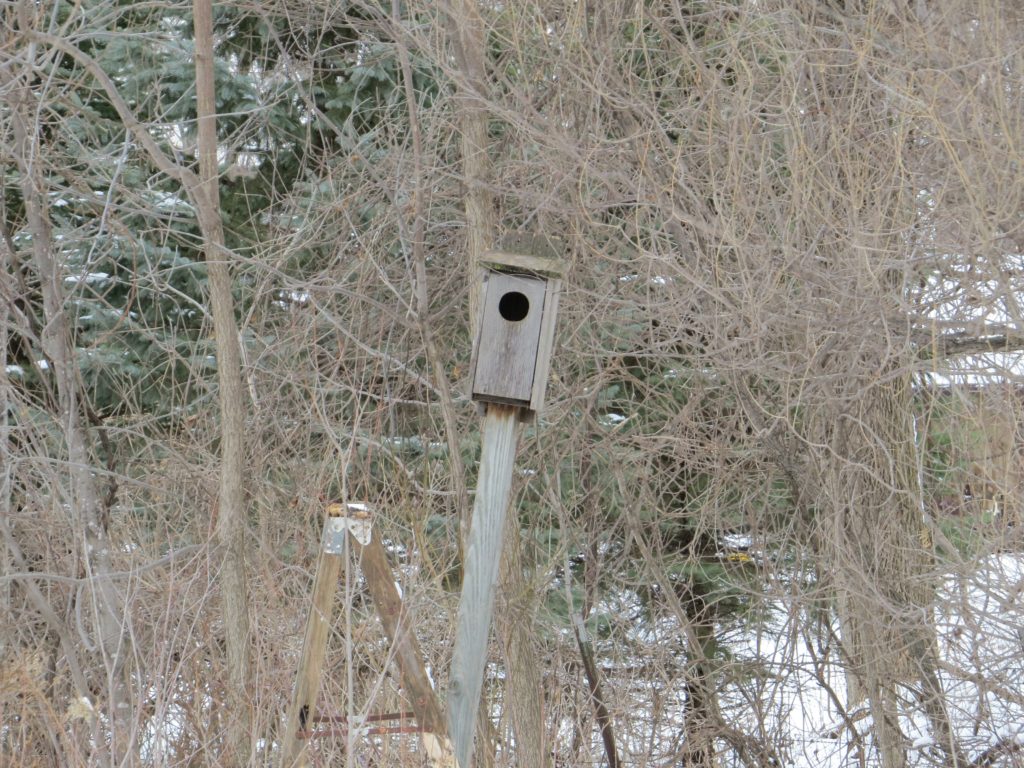 Knowing there was a red Screech in there made for some impatient waiting. The Owl was not being cooperative at all while we watched and waited. We were so close to meeting the big objective, but it just wasn’t happening and the impatience of all was festering. Would we have come this far only to fail? What’s that they say? When a door closes, open a window?
Knowing there was a red Screech in there made for some impatient waiting. The Owl was not being cooperative at all while we watched and waited. We were so close to meeting the big objective, but it just wasn’t happening and the impatience of all was festering. Would we have come this far only to fail? What’s that they say? When a door closes, open a window?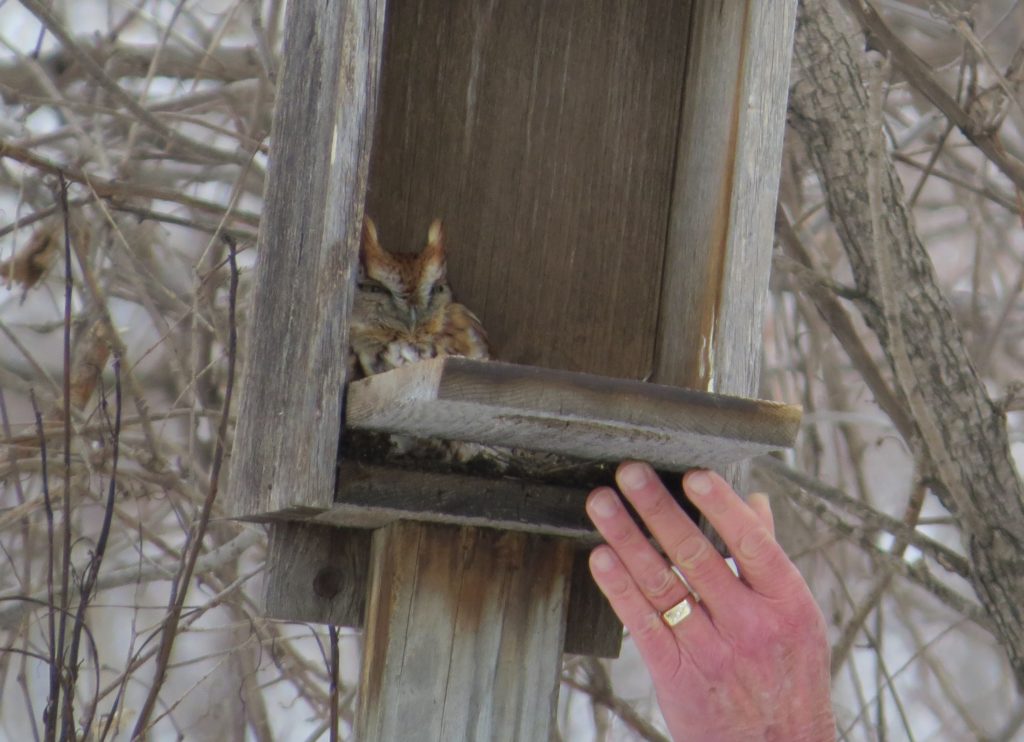
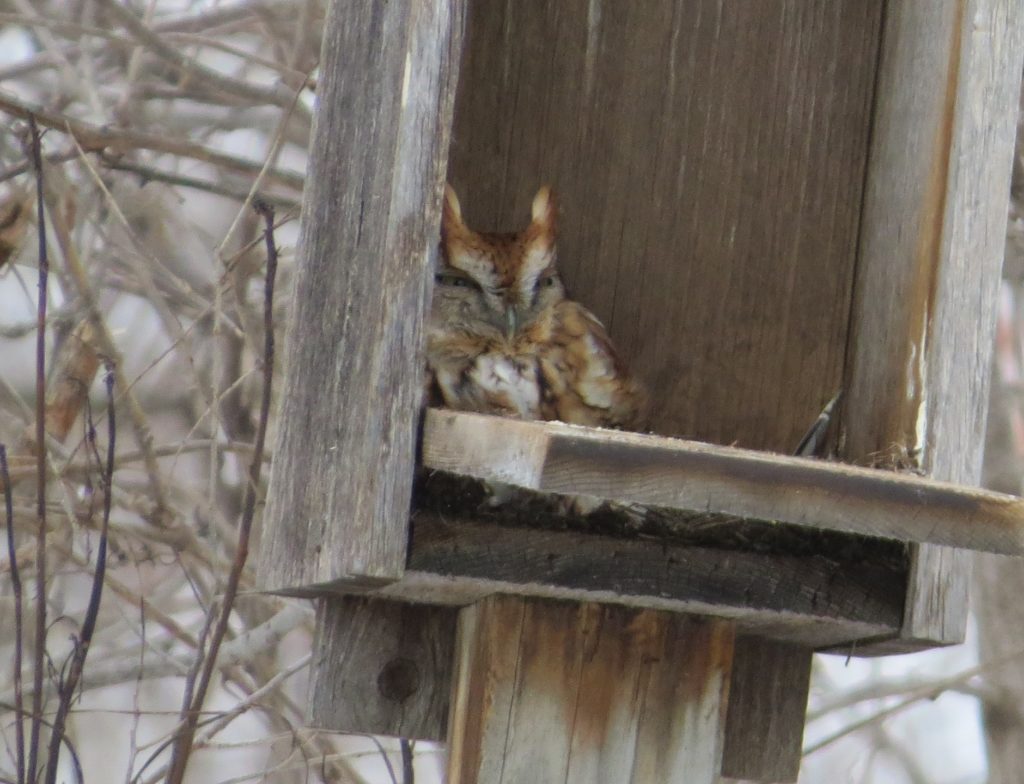
 We thought this Owl was going to let us photograph it in this position for a little while, but after a half minute or so, it had enough of this nonsense and flew straight toward us and directly into to the hole of another Wood Duck box. We never did see it again and decided to leave it alone. High on a successful trip, we continued to hang out by that little pond and talk Owls with Mike and Kathy. We thanked them profusely and were finally on our way. With a few hours of daylight left, the day was still wide open with possibility.
We thought this Owl was going to let us photograph it in this position for a little while, but after a half minute or so, it had enough of this nonsense and flew straight toward us and directly into to the hole of another Wood Duck box. We never did see it again and decided to leave it alone. High on a successful trip, we continued to hang out by that little pond and talk Owls with Mike and Kathy. We thanked them profusely and were finally on our way. With a few hours of daylight left, the day was still wide open with possibility.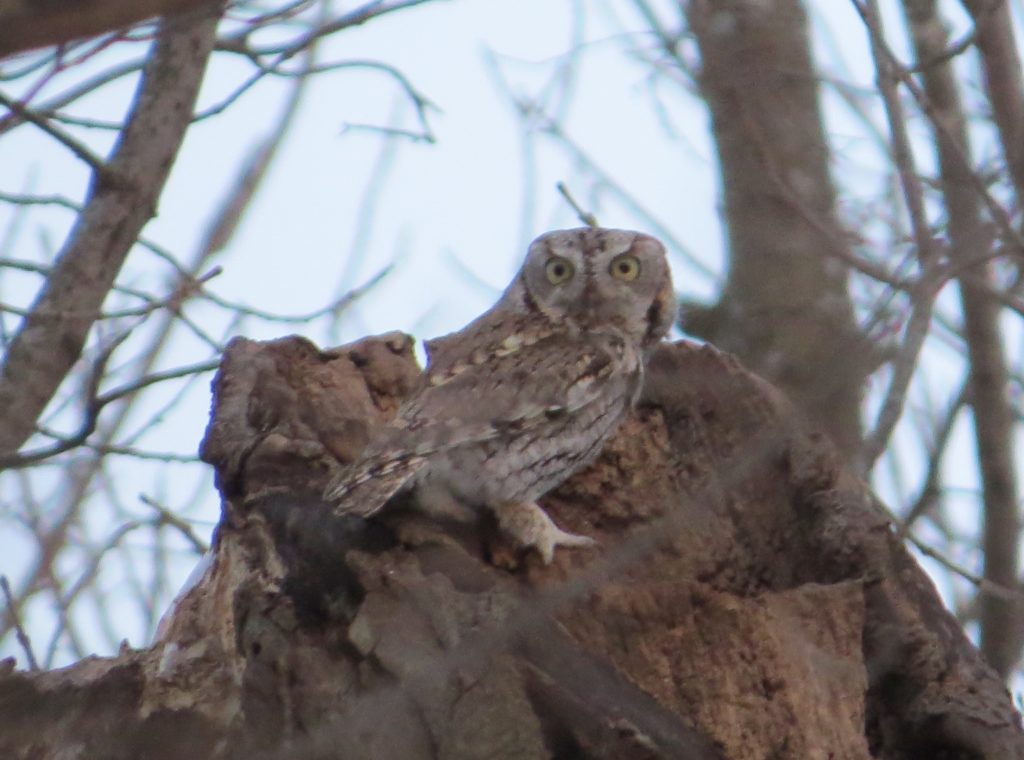 Quality over quantity is what this birding year is all about this year. This day definitely embodied that as a lifer* Owl was had with a couple of bonus Owls all while having fun with friends. A huge thanks to Jeff Grotte for setting everything up and making a fun day off, to Steve Brown for the other good birds and the selfless enthusiasm, and most importantly a big thank you to Mike and Kathy for sharing their special yard bird with us. There will be more Owling with Jeff and possibly Steve in the months to come. But first, I have a duck to track down.
Quality over quantity is what this birding year is all about this year. This day definitely embodied that as a lifer* Owl was had with a couple of bonus Owls all while having fun with friends. A huge thanks to Jeff Grotte for setting everything up and making a fun day off, to Steve Brown for the other good birds and the selfless enthusiasm, and most importantly a big thank you to Mike and Kathy for sharing their special yard bird with us. There will be more Owling with Jeff and possibly Steve in the months to come. But first, I have a duck to track down.
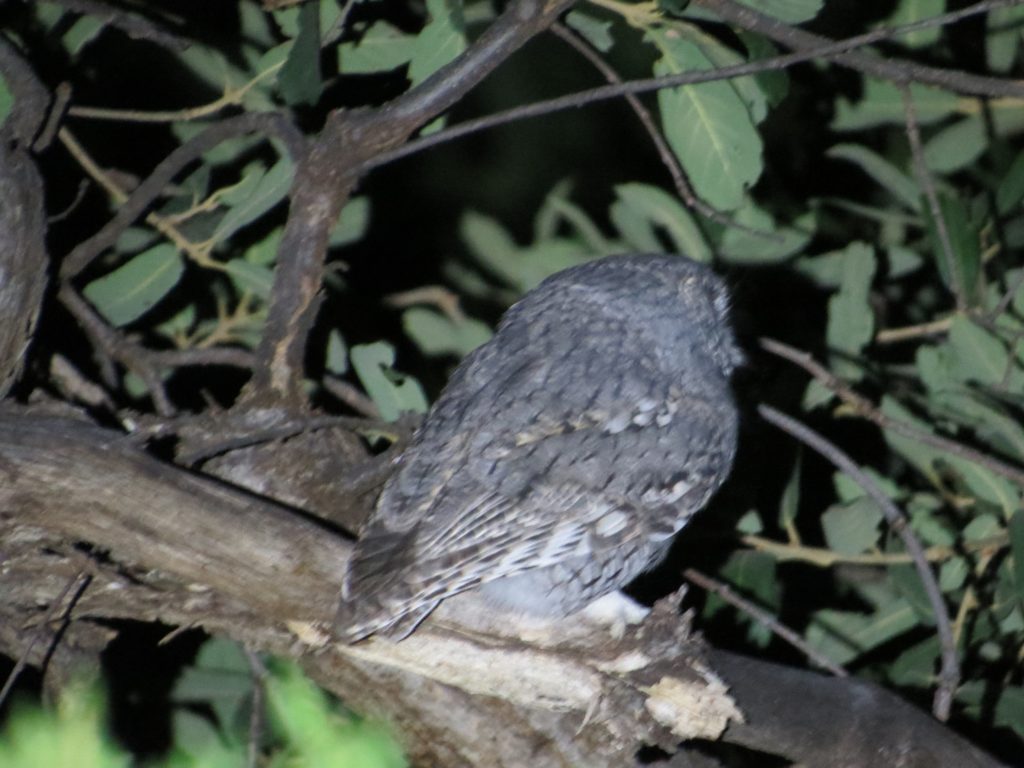 As we crept along the canyon hillside to get in a better position to see the Owl’s face, it suddenly flew off! We could not find it again. The satisfaction of getting the lifer was muted by the Owl showing us his bad side and only briefly at that. Would this be my lifer sighting–the side view of a bird? The discouragement was returning the longer we weren’t finding it. Again, Tommy never panicked or wavered; he just kept that flashlight moving. And then I heard him say those awesome words that I have heard him say so many times before, “Hey, Josh!”
As we crept along the canyon hillside to get in a better position to see the Owl’s face, it suddenly flew off! We could not find it again. The satisfaction of getting the lifer was muted by the Owl showing us his bad side and only briefly at that. Would this be my lifer sighting–the side view of a bird? The discouragement was returning the longer we weren’t finding it. Again, Tommy never panicked or wavered; he just kept that flashlight moving. And then I heard him say those awesome words that I have heard him say so many times before, “Hey, Josh!”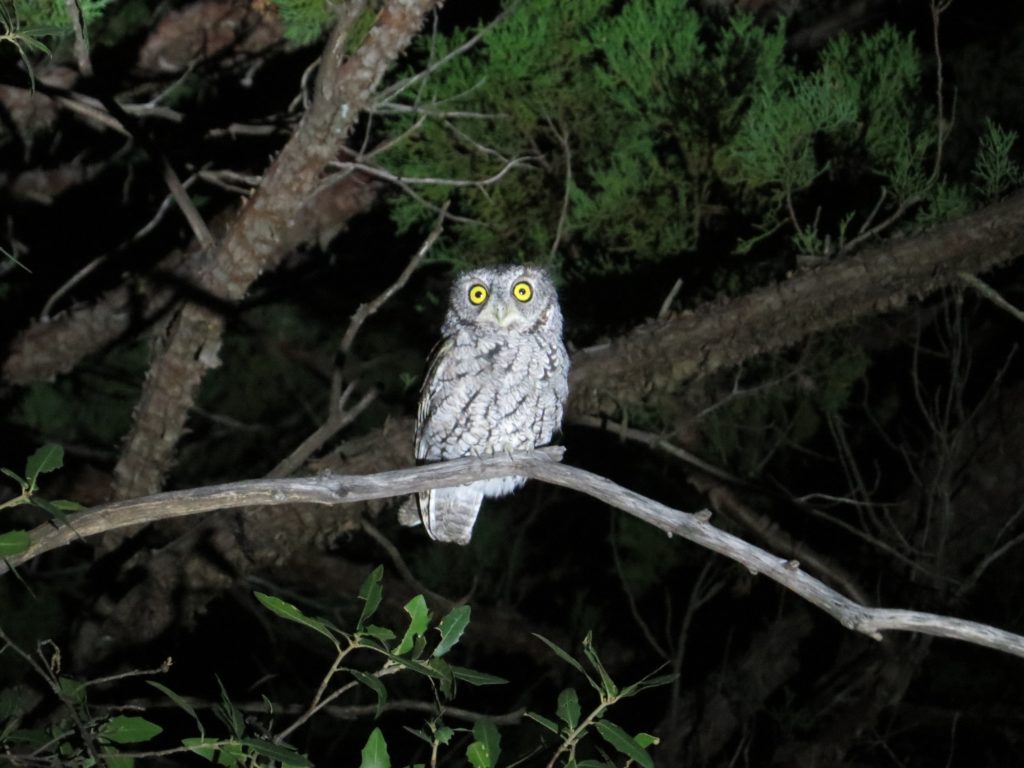 This, this is what I had been waiting/hoping for. Tommy did it.
This, this is what I had been waiting/hoping for. Tommy did it.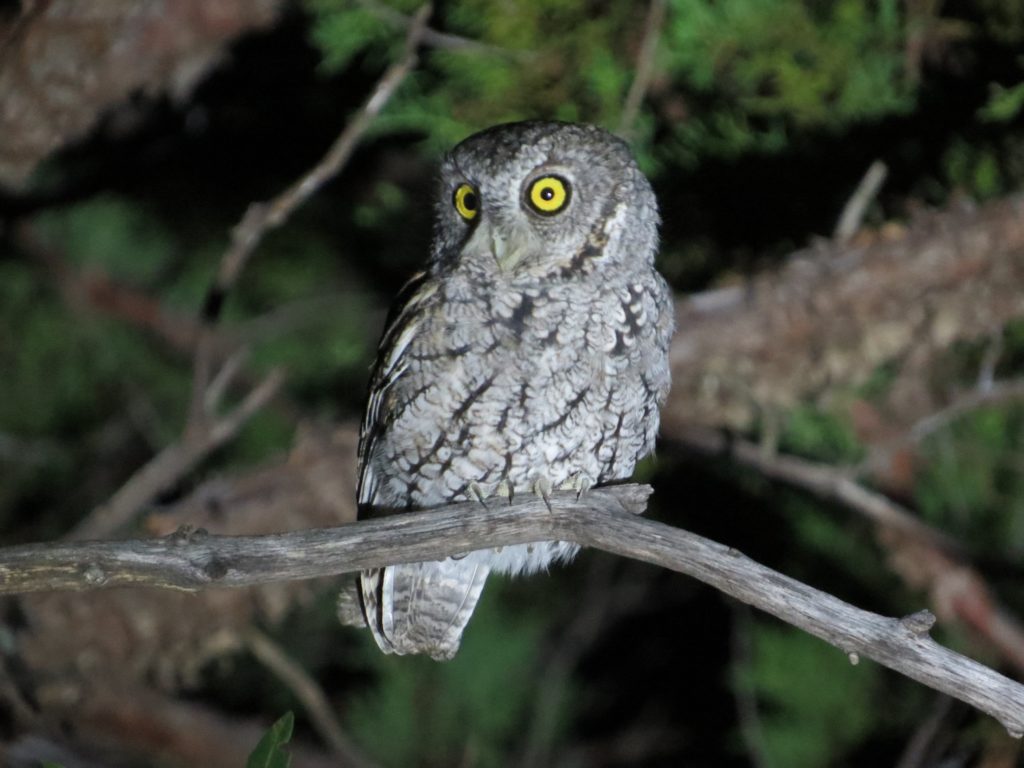 This Owl was very cooperative (finally) and just let us enjoy the show.
This Owl was very cooperative (finally) and just let us enjoy the show.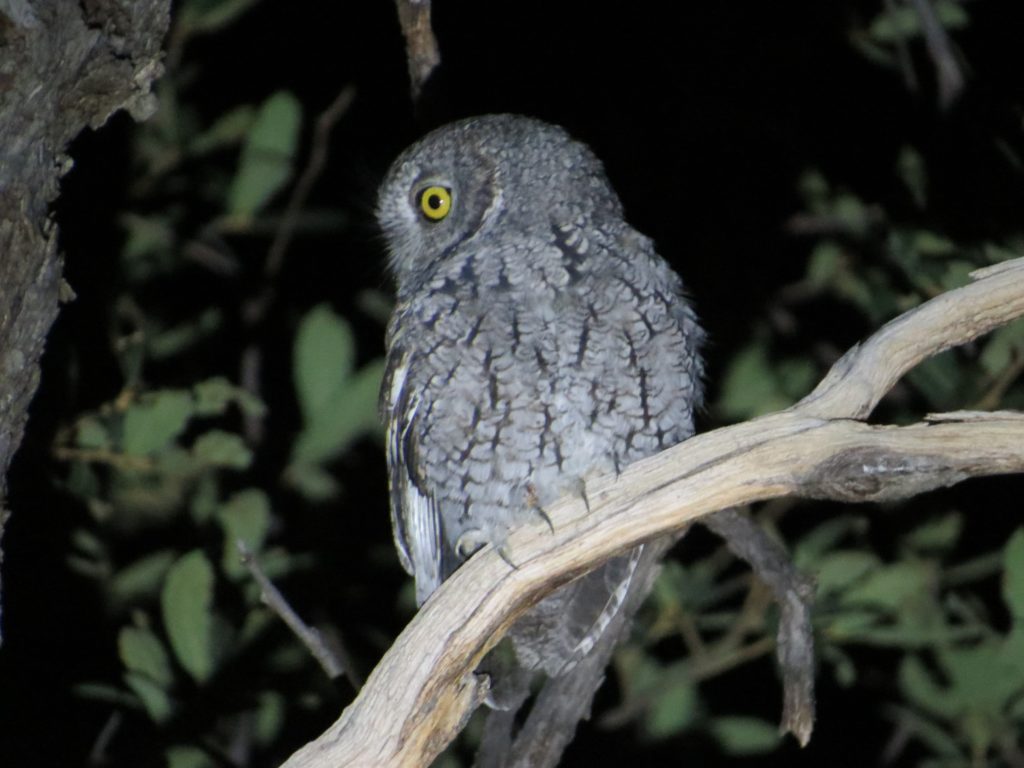
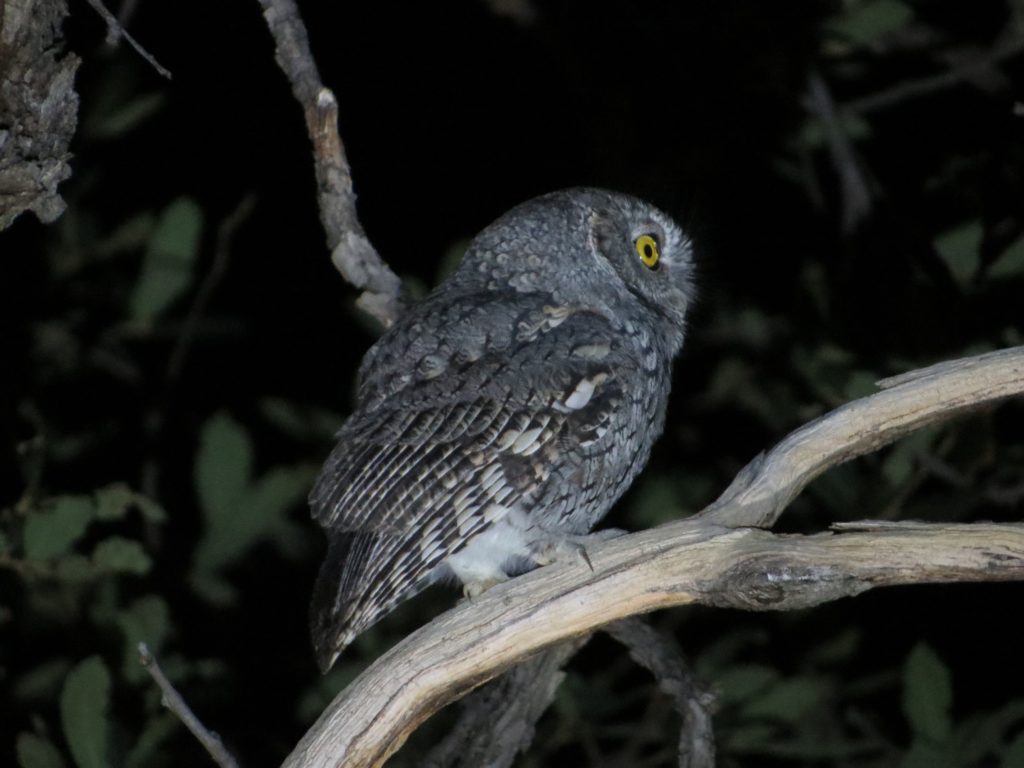 Maybe I had it backwards. Maybe it was the Owl who was enjoying the show of four happy birders who had just succeeded on their mission.
Maybe I had it backwards. Maybe it was the Owl who was enjoying the show of four happy birders who had just succeeded on their mission.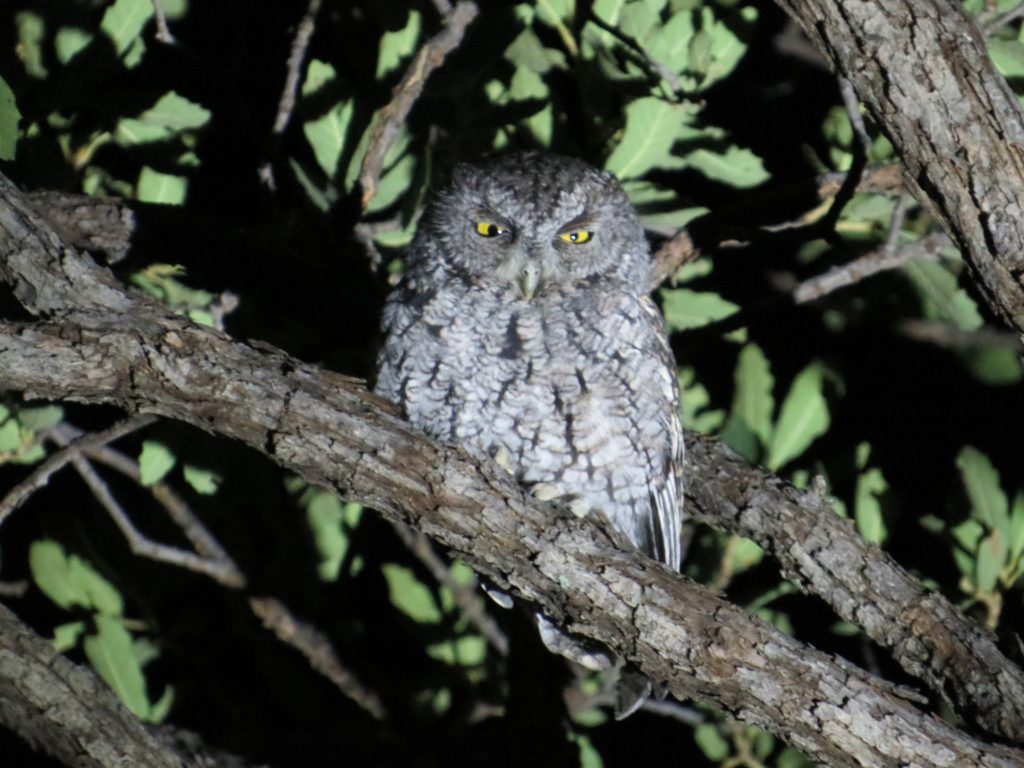
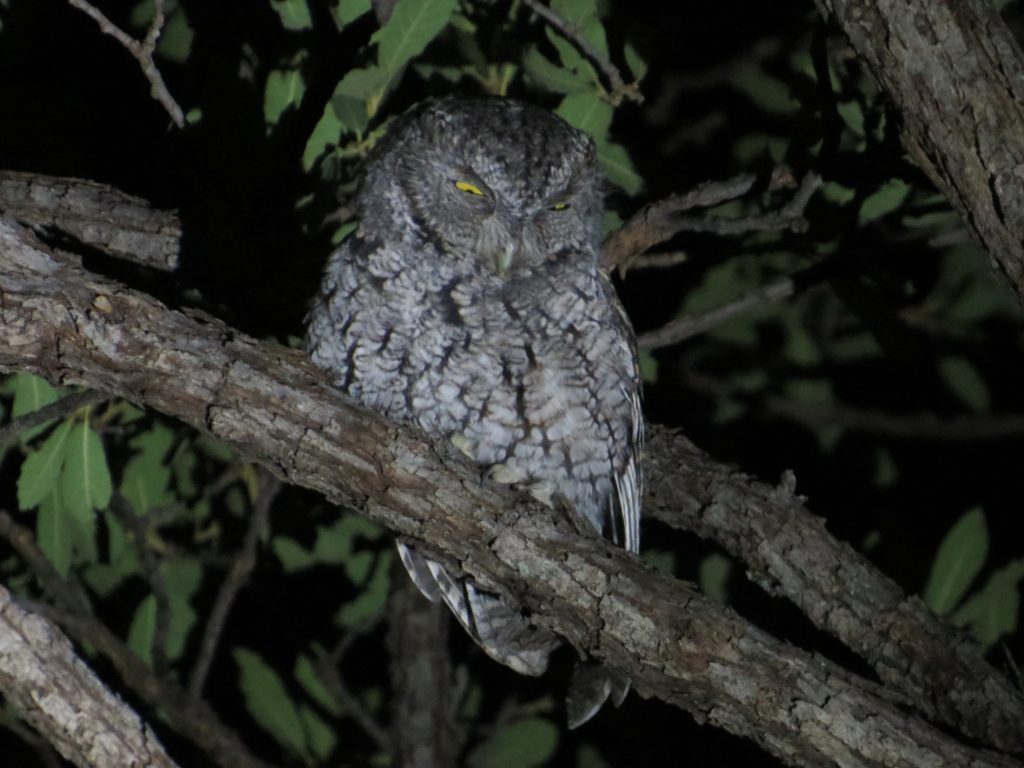
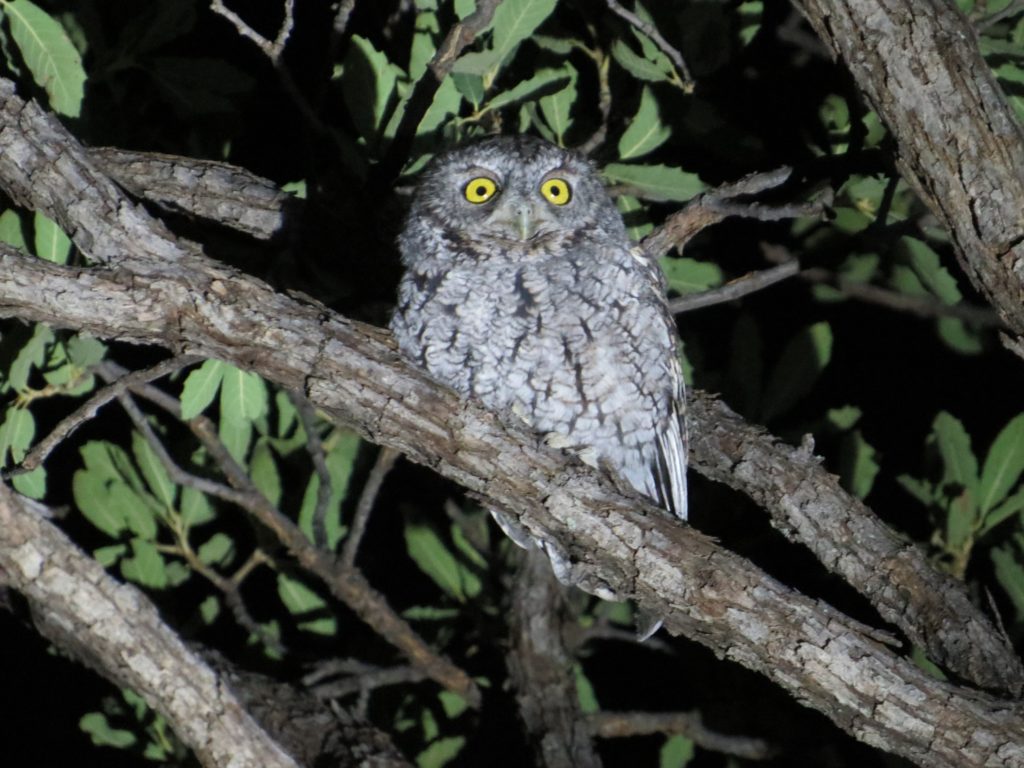 At this point Dad went back to the car on account of a knee that was giving him fits. Gordon, Tommy, and I decided we would try for more Whiskered Screeches. Why not?
At this point Dad went back to the car on account of a knee that was giving him fits. Gordon, Tommy, and I decided we would try for more Whiskered Screeches. Why not?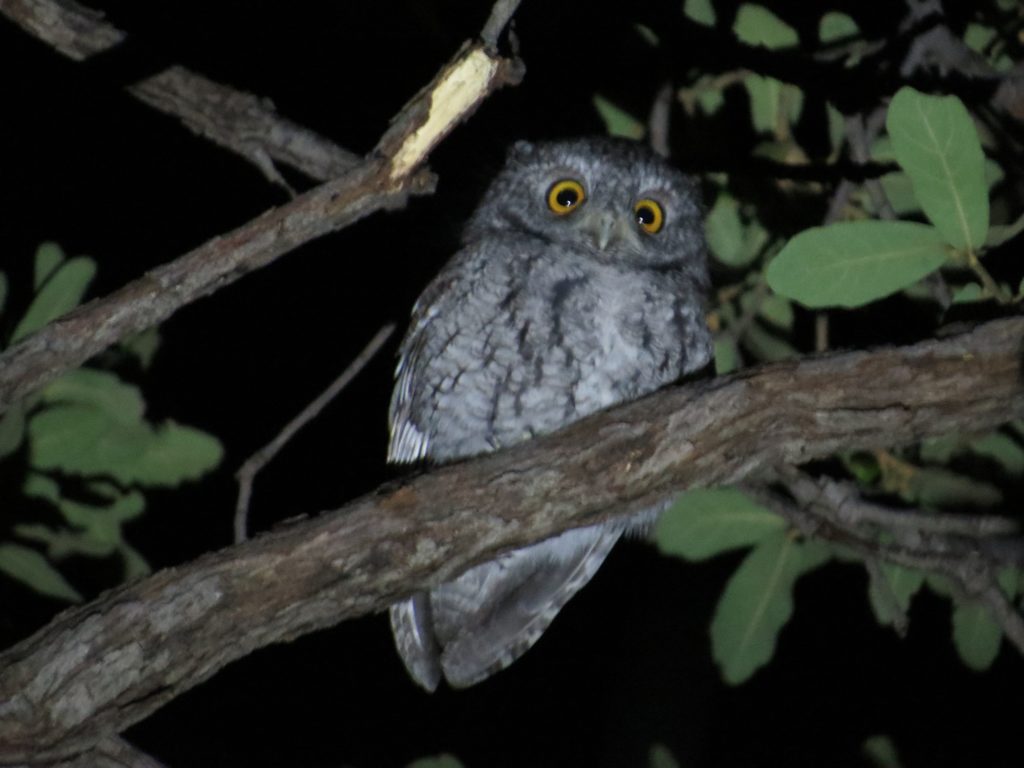 Hearing this vocalization was an exciting learning experience for Tommy. It wasn’t as cool as the Morse-code calling we heard the adult make earlier, but it was still pretty neat regardless. Have a listen for yourself:
Hearing this vocalization was an exciting learning experience for Tommy. It wasn’t as cool as the Morse-code calling we heard the adult make earlier, but it was still pretty neat regardless. Have a listen for yourself: Two Owl lifers remain for me in Arizona. The question is not whether Tommy can help find them, but rather, will it happen in 2017? Time will tell.
Two Owl lifers remain for me in Arizona. The question is not whether Tommy can help find them, but rather, will it happen in 2017? Time will tell. That pretty much sealed the deal for them, but for added insurance I got seats which put Evan in a position of high probability to check off a major bucket-list item. It worked.
That pretty much sealed the deal for them, but for added insurance I got seats which put Evan in a position of high probability to check off a major bucket-list item. It worked. Having the entire family on the jumbo-tron and on TV was the icing.
Having the entire family on the jumbo-tron and on TV was the icing.
 I mean, seriously, an indoor/outdoor pool where you can actually swim under the freaking wall of the hotel–how cool is that? This is the kind of thing that blows kids’ minds.
I mean, seriously, an indoor/outdoor pool where you can actually swim under the freaking wall of the hotel–how cool is that? This is the kind of thing that blows kids’ minds. So what about the birds? Let’s get on with it then. I had a number of targets of regular breeders in this central part of the country. The first one I targeted is one that has caused me heartache on a couple of occasions in Minnesota, the Least Tern. Since this bird breeds in shallow rivers with sandbars, Omaha is a great place to go after them because of the nearby Platte River. Unfortunately, though, it was getting late in the year to find any, and my chances were slim. Regardless, we were going to give it a try, checking out a couple of spots on the way to our Omaha hotel. The first stop was a place I’d been watching on eBird for months and was eager to see, a sandpit lake in Fremont, Nebraska.
So what about the birds? Let’s get on with it then. I had a number of targets of regular breeders in this central part of the country. The first one I targeted is one that has caused me heartache on a couple of occasions in Minnesota, the Least Tern. Since this bird breeds in shallow rivers with sandbars, Omaha is a great place to go after them because of the nearby Platte River. Unfortunately, though, it was getting late in the year to find any, and my chances were slim. Regardless, we were going to give it a try, checking out a couple of spots on the way to our Omaha hotel. The first stop was a place I’d been watching on eBird for months and was eager to see, a sandpit lake in Fremont, Nebraska.
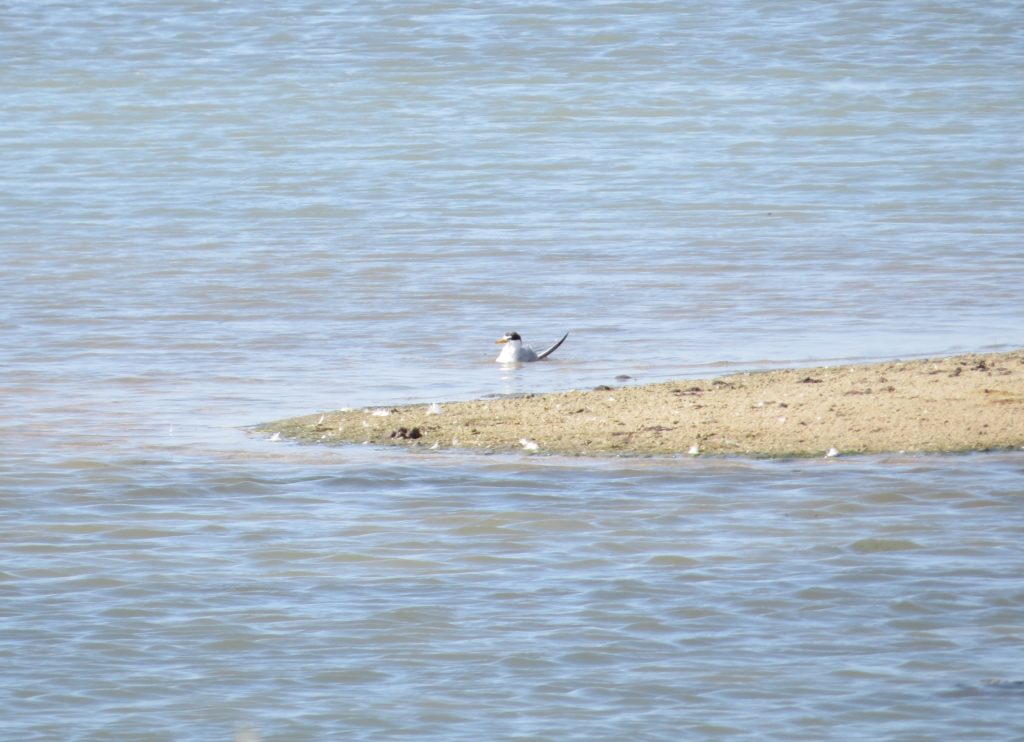 I’ve been yearning to see that bright yellow-bill for awhile. My family waiting in the car probably didn’t even notice the fist-pumping going on outside over this lifer.
I’ve been yearning to see that bright yellow-bill for awhile. My family waiting in the car probably didn’t even notice the fist-pumping going on outside over this lifer.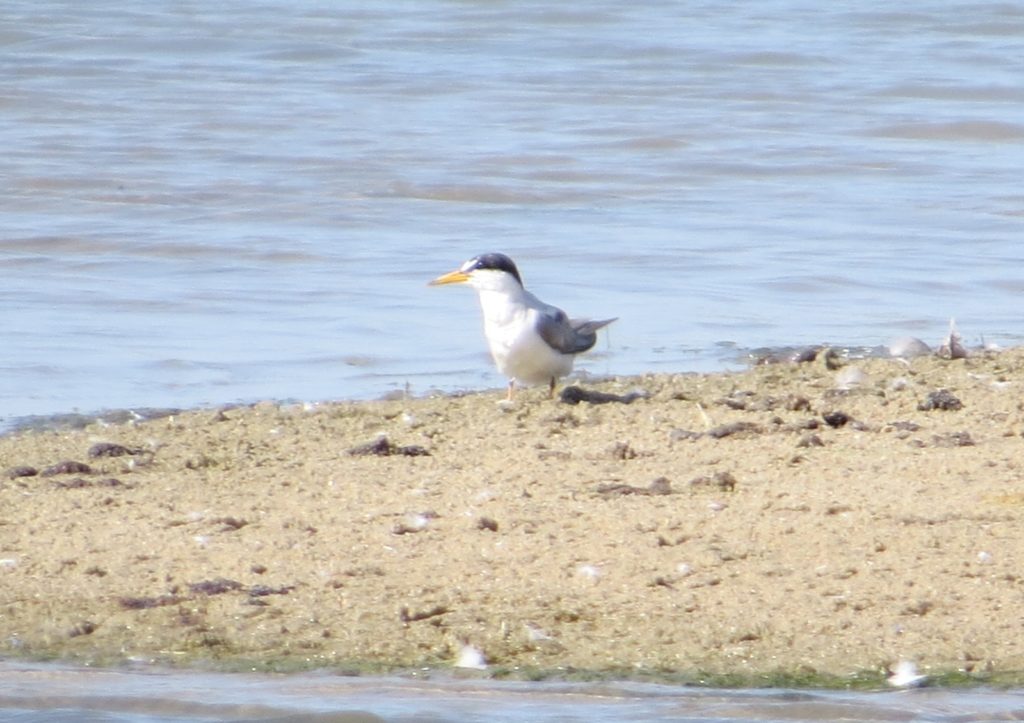 Getting a lifer at the first stop for that species keeps the non-birding family happy. And even better (for them) was that this bird only stuck around for 10 minutes before flying off forever.
Getting a lifer at the first stop for that species keeps the non-birding family happy. And even better (for them) was that this bird only stuck around for 10 minutes before flying off forever.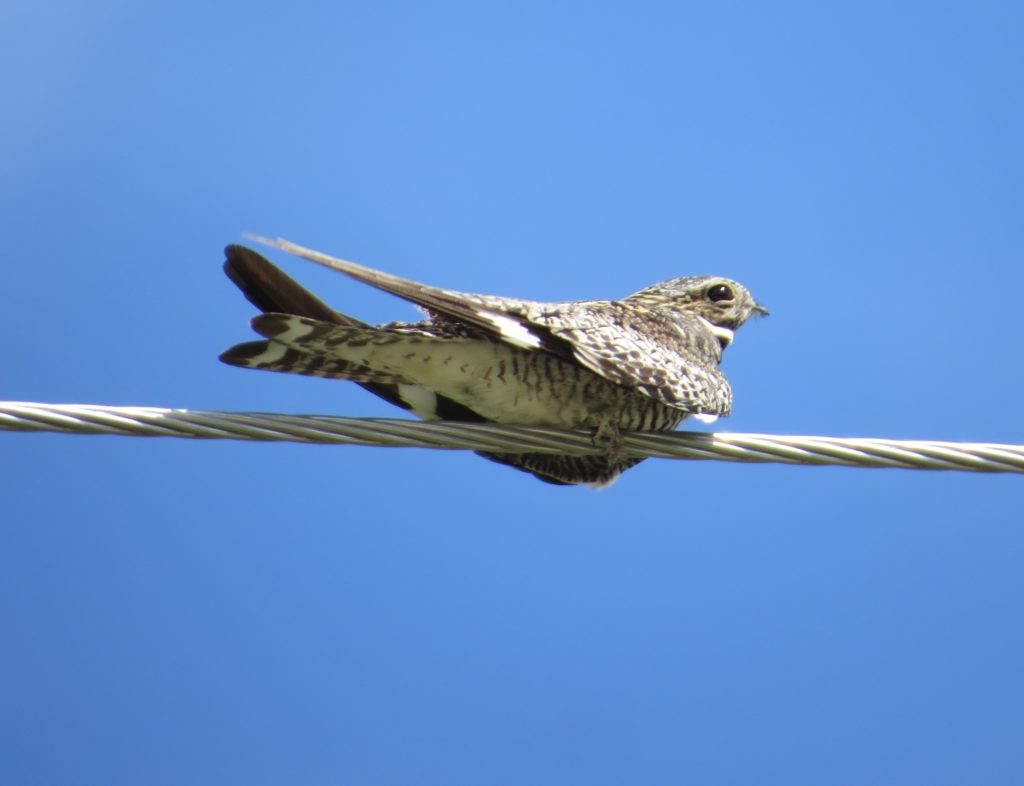
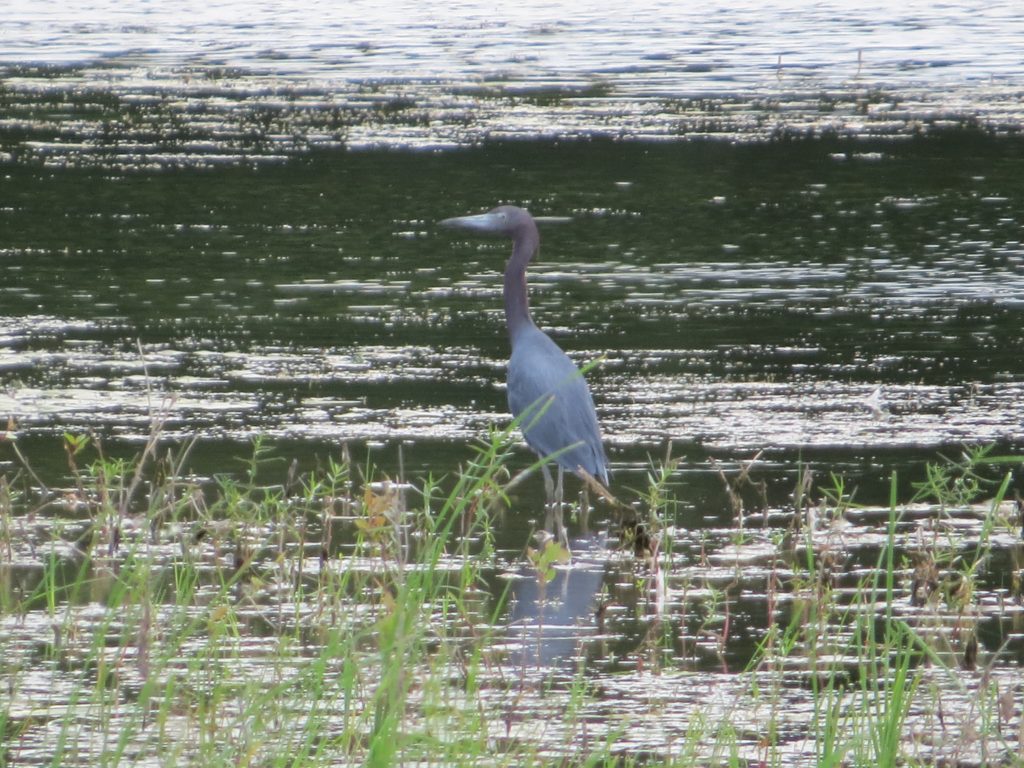
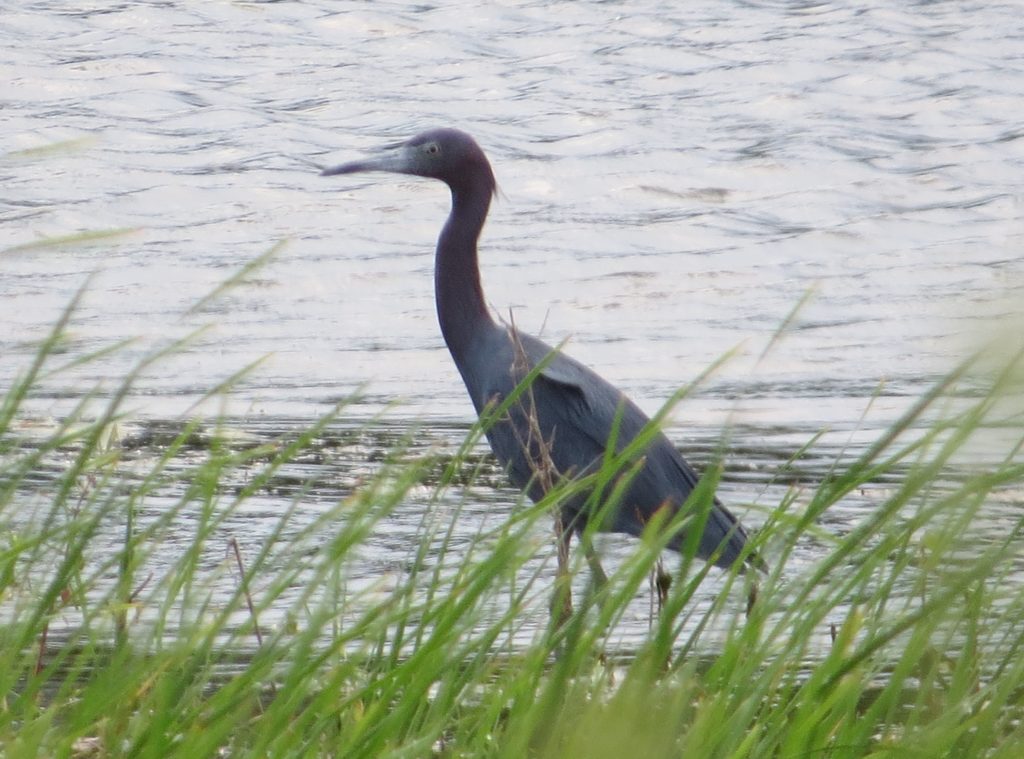 It was finally time to get to our hotel–Marin was getting antsy for a pool fix. The Heron lifer felt good, really good, but I was still bummed about the lack of Scissor-tailed Flycatchers. Then just 20 minutes from the hotel, I spied one on a fence and turned around for some looks. It was a STFL alright, but a nub-tailed one and not the big male I was hoping to see. Hopes for that, along with a few other birds, would have to be pinned on Day 3.
It was finally time to get to our hotel–Marin was getting antsy for a pool fix. The Heron lifer felt good, really good, but I was still bummed about the lack of Scissor-tailed Flycatchers. Then just 20 minutes from the hotel, I spied one on a fence and turned around for some looks. It was a STFL alright, but a nub-tailed one and not the big male I was hoping to see. Hopes for that, along with a few other birds, would have to be pinned on Day 3.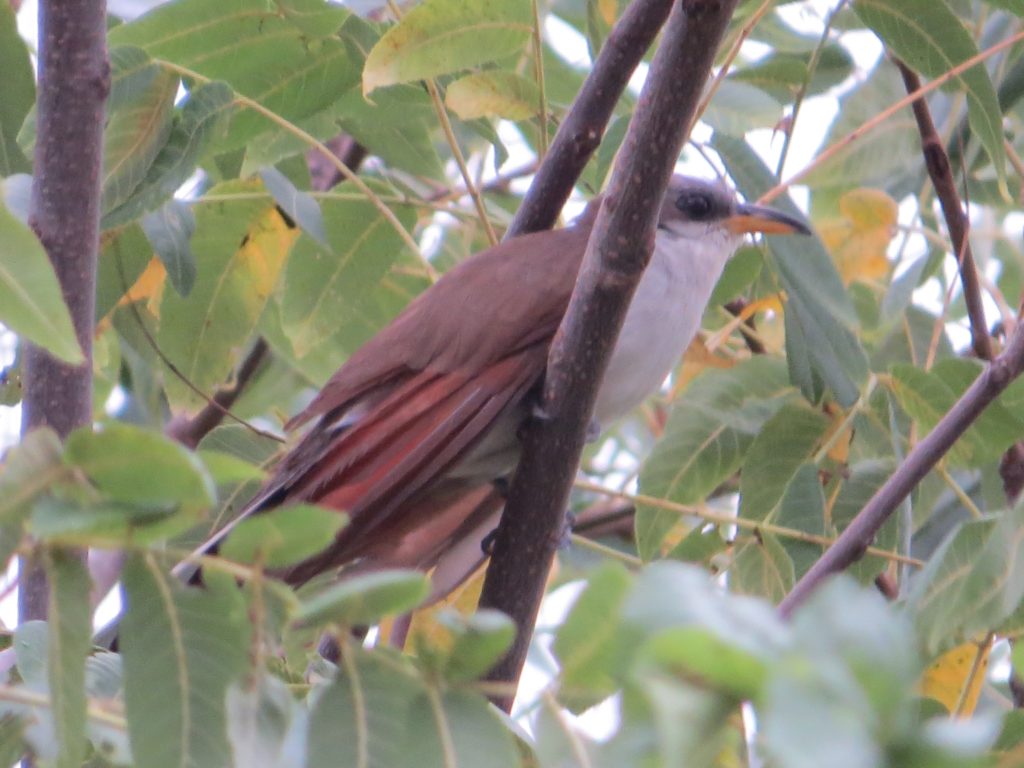
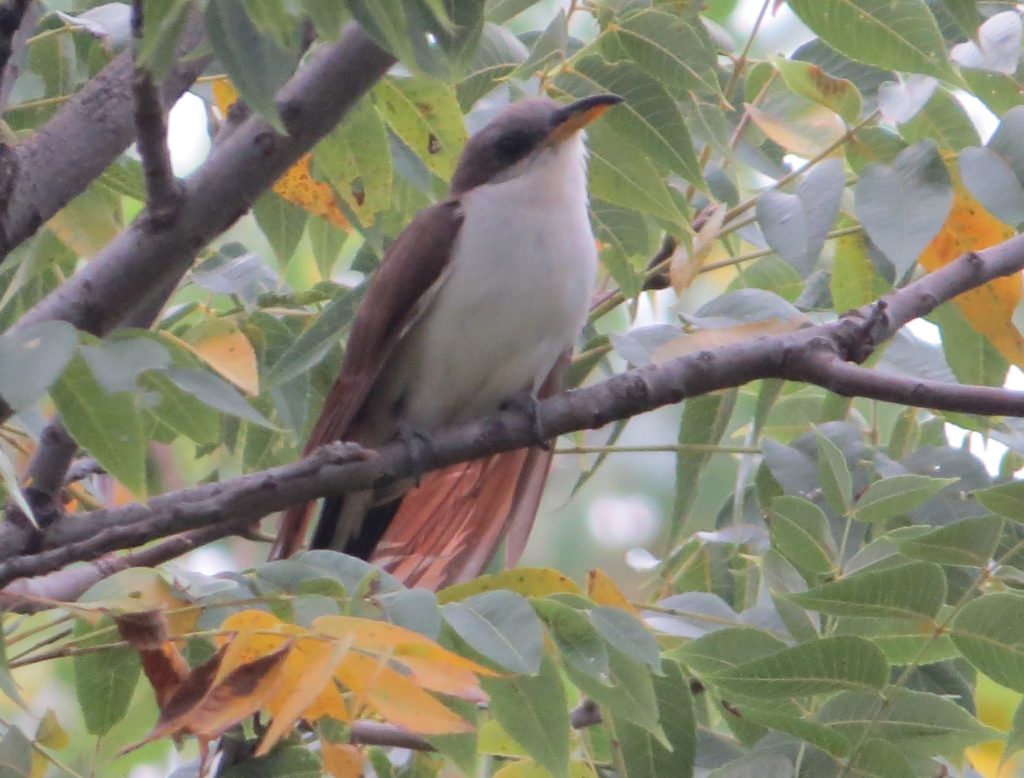 Shortly afterward we heard another hoped-for/expected lifer, the Carolina Wren. Eventually I got to see a couple of them. Their tea-kettle song is awesome.
Shortly afterward we heard another hoped-for/expected lifer, the Carolina Wren. Eventually I got to see a couple of them. Their tea-kettle song is awesome.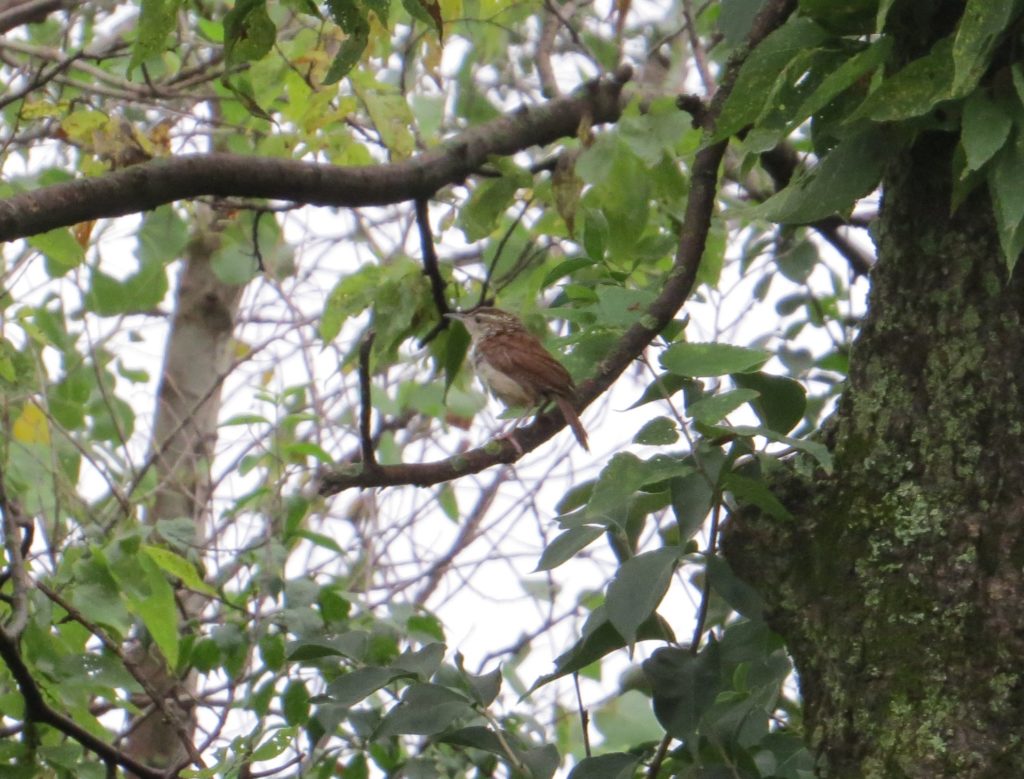 After giving up on the Painted Bunting search, we headed out into the countryside south of Kansas City. Malcolm had some ideas about where to find Scissor-tailed Flycatchers. And find them, we did.
After giving up on the Painted Bunting search, we headed out into the countryside south of Kansas City. Malcolm had some ideas about where to find Scissor-tailed Flycatchers. And find them, we did.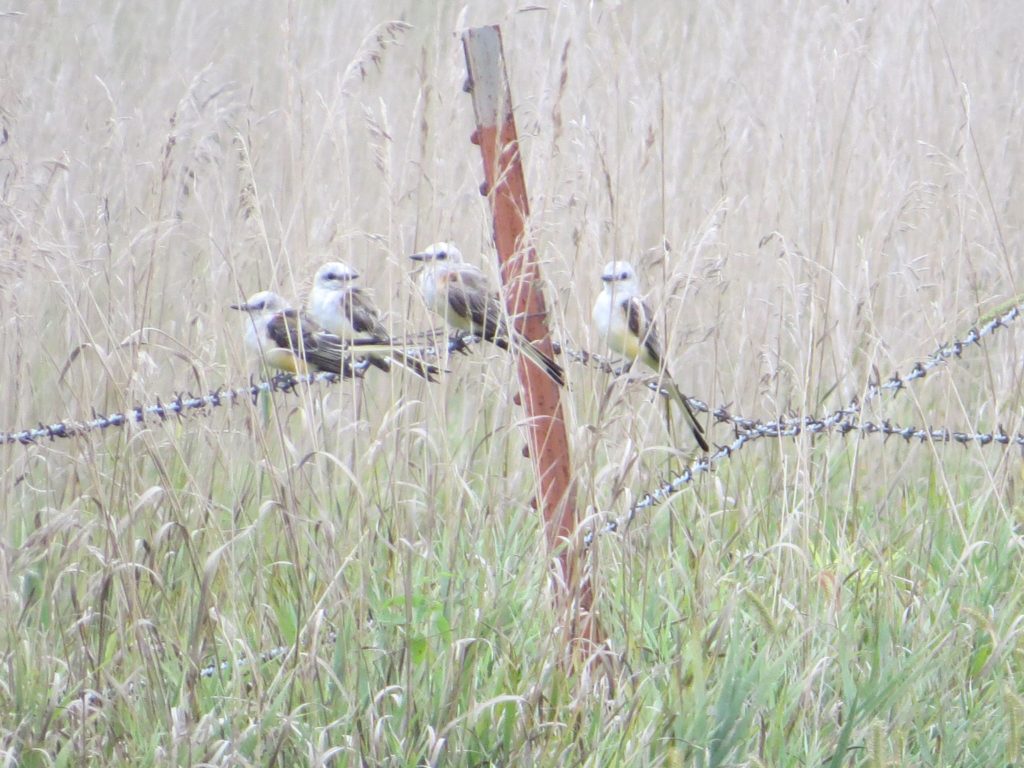 We never found any with super-long tails, but at one point we had about 30 of them all together on the wires and fences around us. It was a crazy, cool sight even if most were nubby.
We never found any with super-long tails, but at one point we had about 30 of them all together on the wires and fences around us. It was a crazy, cool sight even if most were nubby.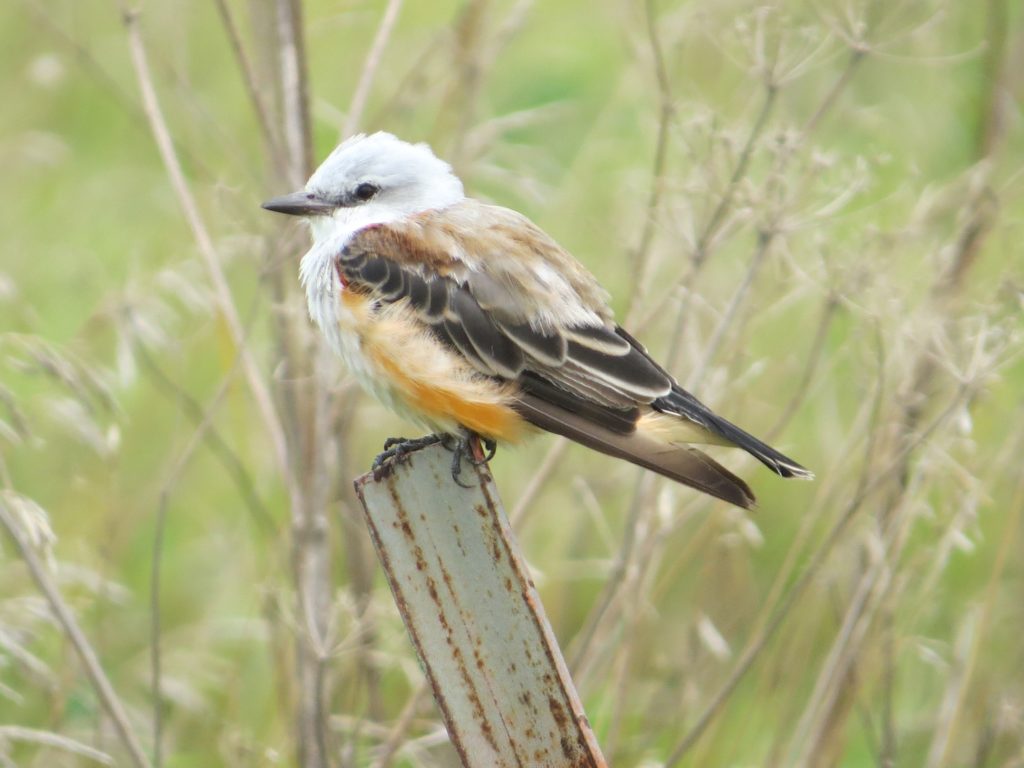 Some had tails of decent length, enough to showcase the big forked-tail when they flew.
Some had tails of decent length, enough to showcase the big forked-tail when they flew.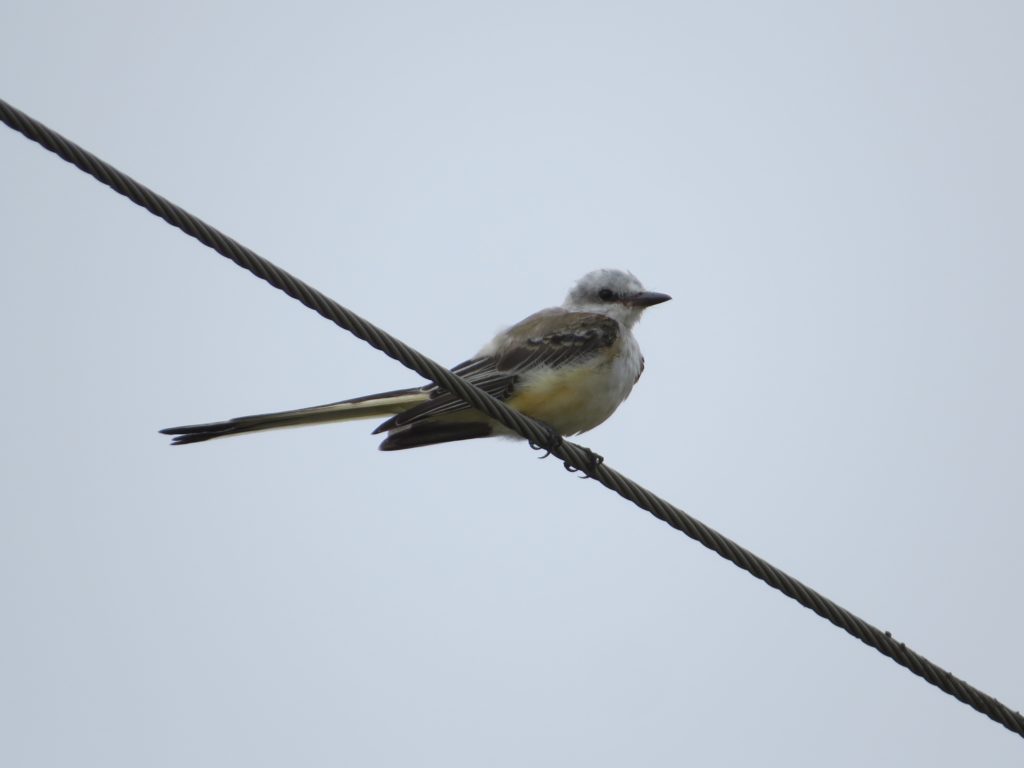
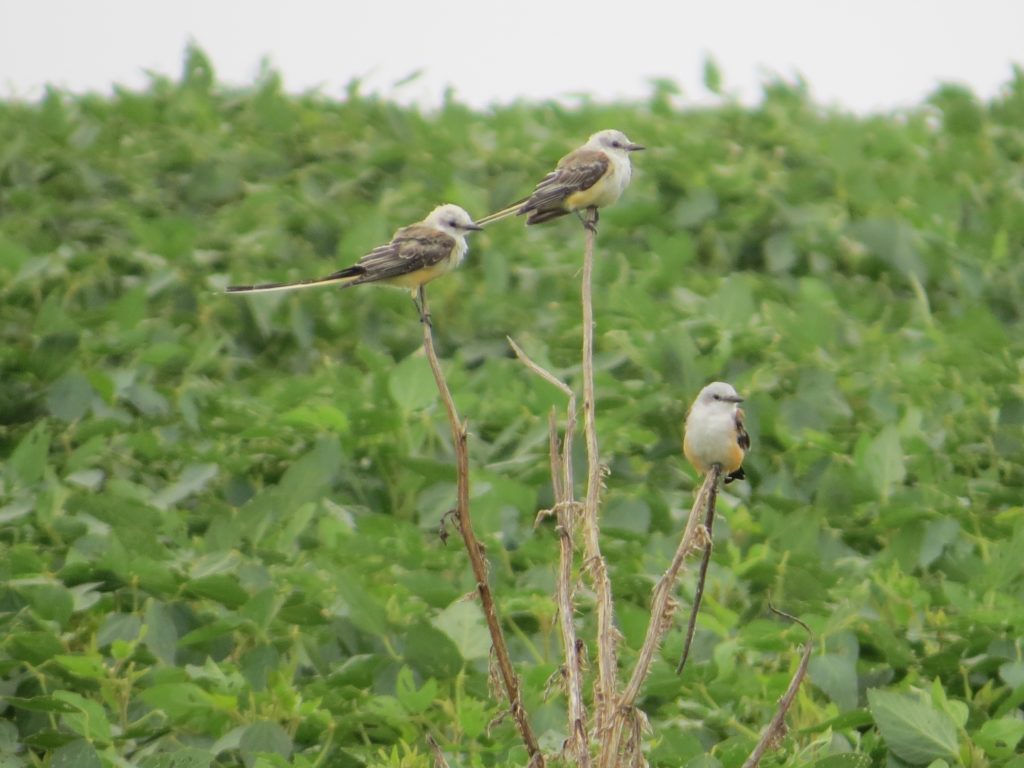 After enjoying the pile of Scissors for awhile, Malcolm took me to a spot to look/listen for Northern Bobwhite. We weren’t having any luck, so for the heck of it I tried playing a recording. Almost immediately a Northern Bobwhite called back! We never did see one, so this bird will have to enter the life list as a heard-only. I’m okay with that.
After enjoying the pile of Scissors for awhile, Malcolm took me to a spot to look/listen for Northern Bobwhite. We weren’t having any luck, so for the heck of it I tried playing a recording. Almost immediately a Northern Bobwhite called back! We never did see one, so this bird will have to enter the life list as a heard-only. I’m okay with that.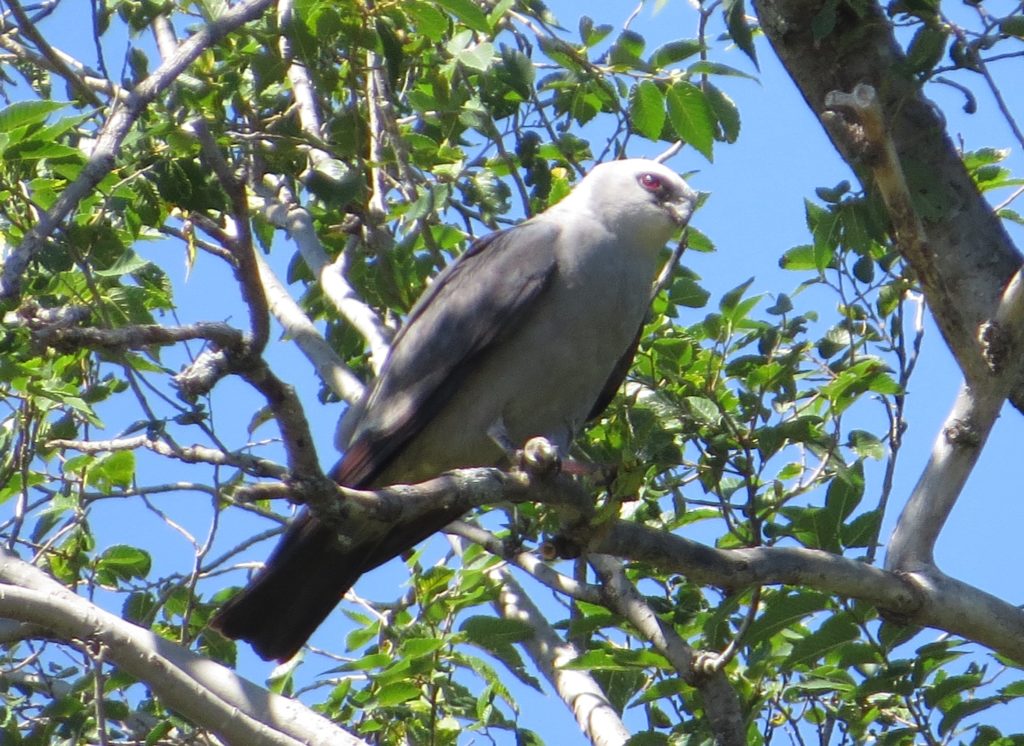 Malcolm had told me that MIKIs catch dragonflies on the wing, and that’s exactly what this one had done.
Malcolm had told me that MIKIs catch dragonflies on the wing, and that’s exactly what this one had done.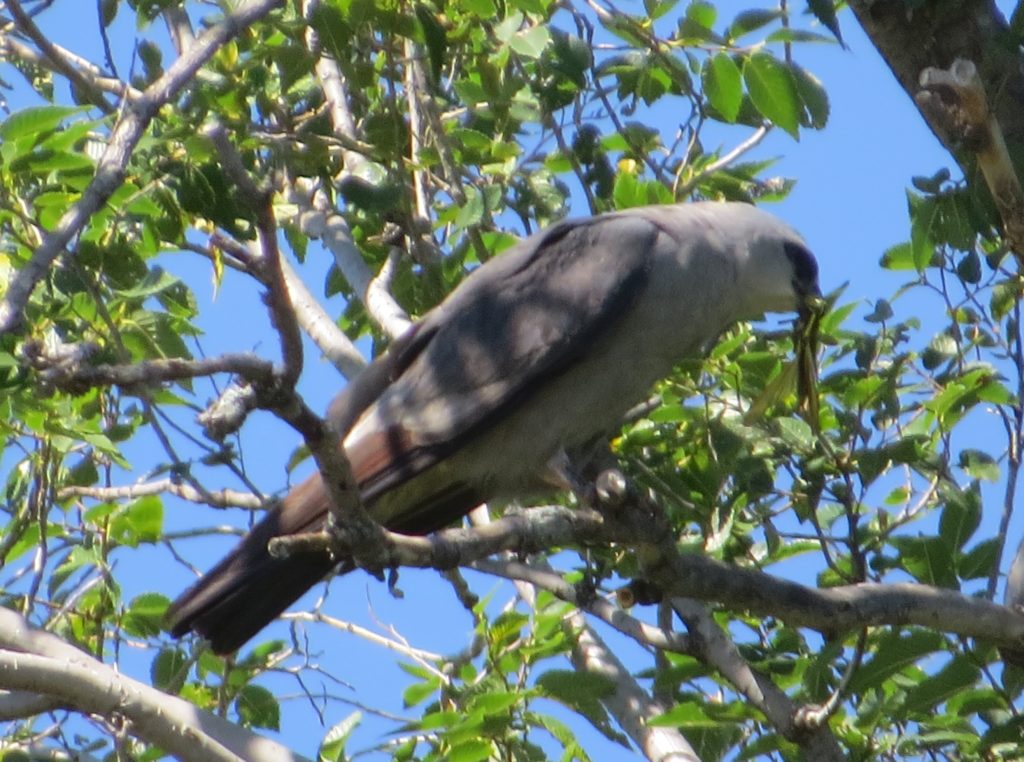 But then I noticed there was a juvenile MIKI. That dragonfly was the dinner that its mom or dad brought back for it.
But then I noticed there was a juvenile MIKI. That dragonfly was the dinner that its mom or dad brought back for it.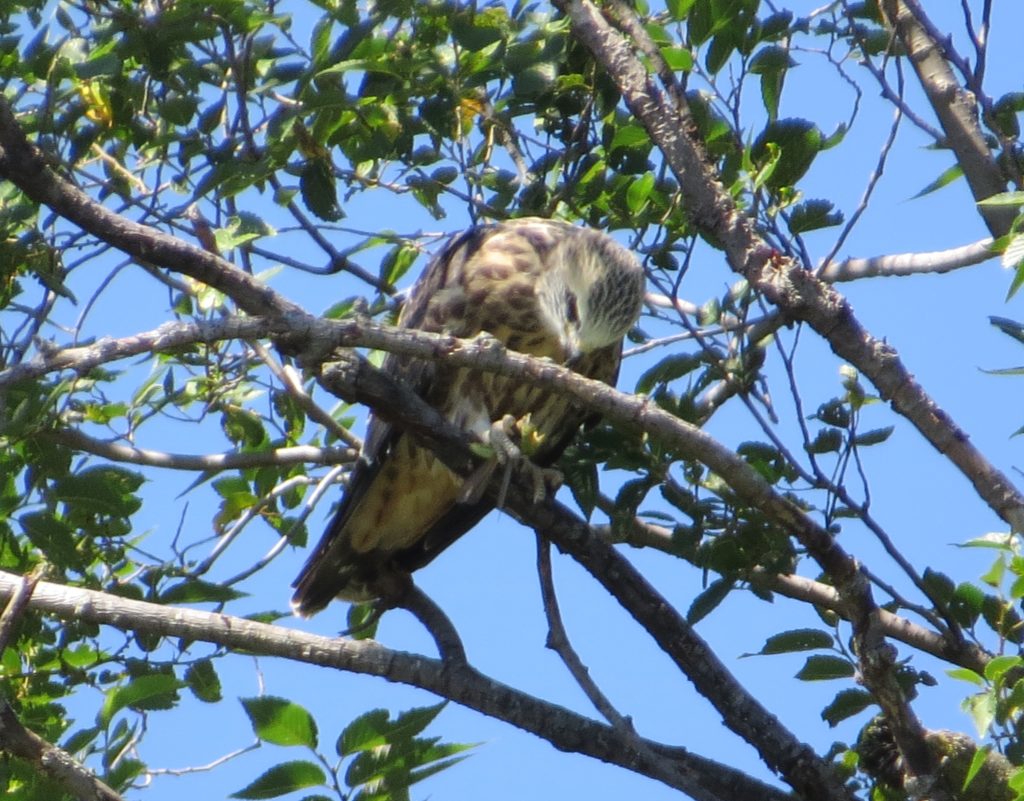
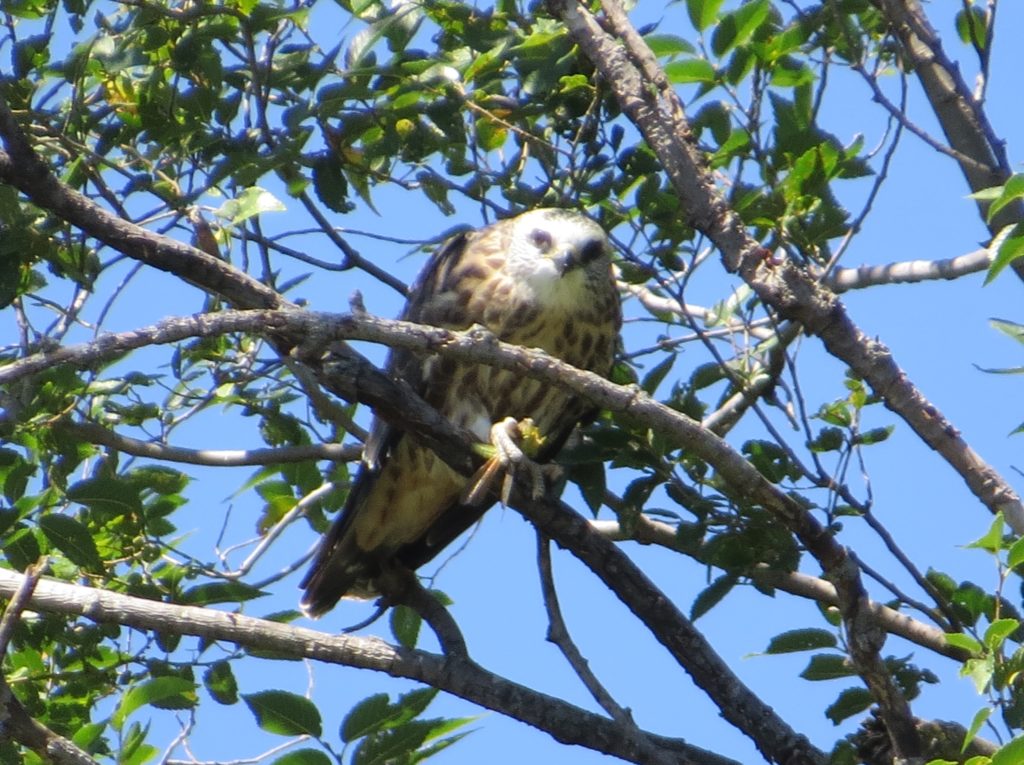 After the dragonfly transfer had been made, the adult took to the skies to find another. Seeing these birds glide around gracefully like their namesake is quite the sight.
After the dragonfly transfer had been made, the adult took to the skies to find another. Seeing these birds glide around gracefully like their namesake is quite the sight.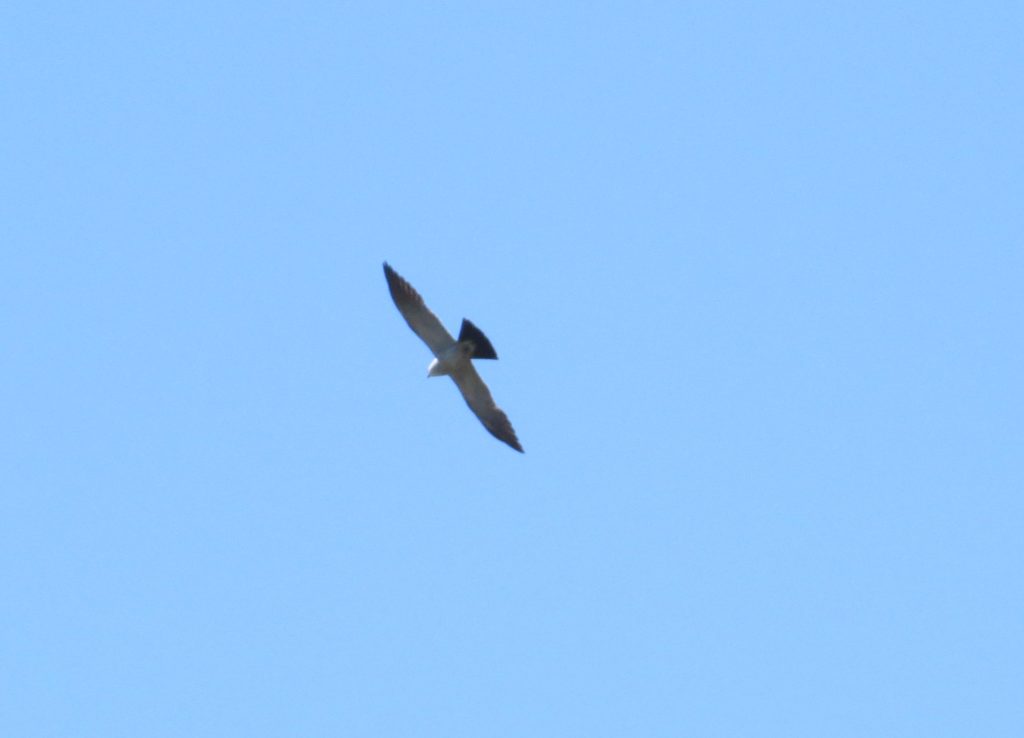
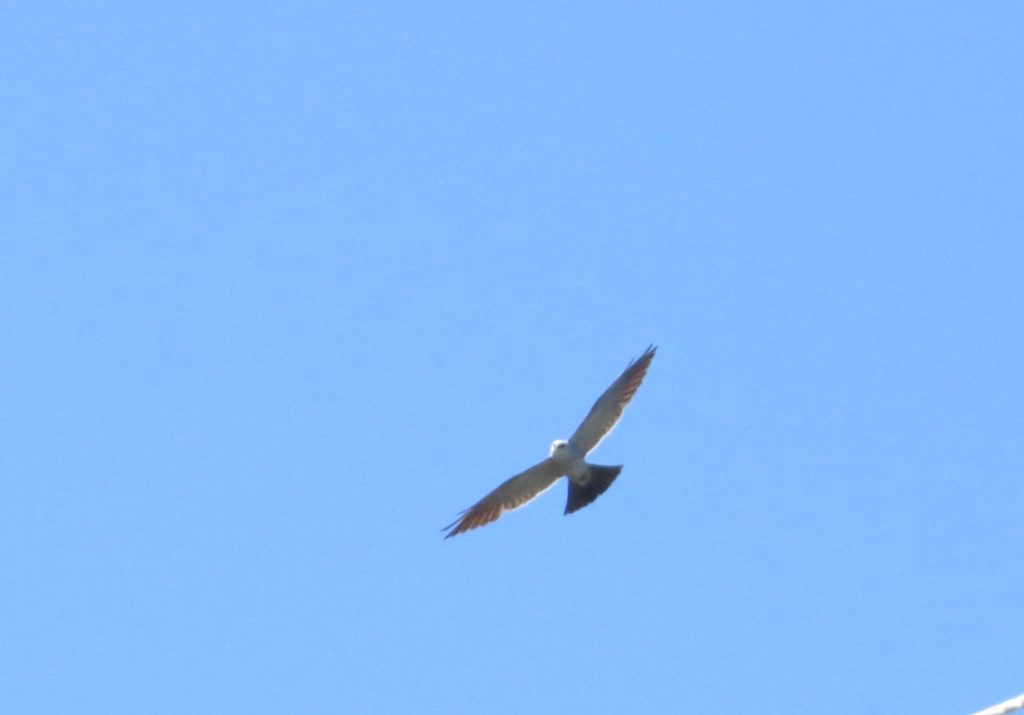 Having now seen one fly, Evan and I are certain we did see one the previous day on the way to the Twins game. This experience has also given me confidence that I would recognize this unique silhouette should I see it in the skies over Minnesota some day.
Having now seen one fly, Evan and I are certain we did see one the previous day on the way to the Twins game. This experience has also given me confidence that I would recognize this unique silhouette should I see it in the skies over Minnesota some day.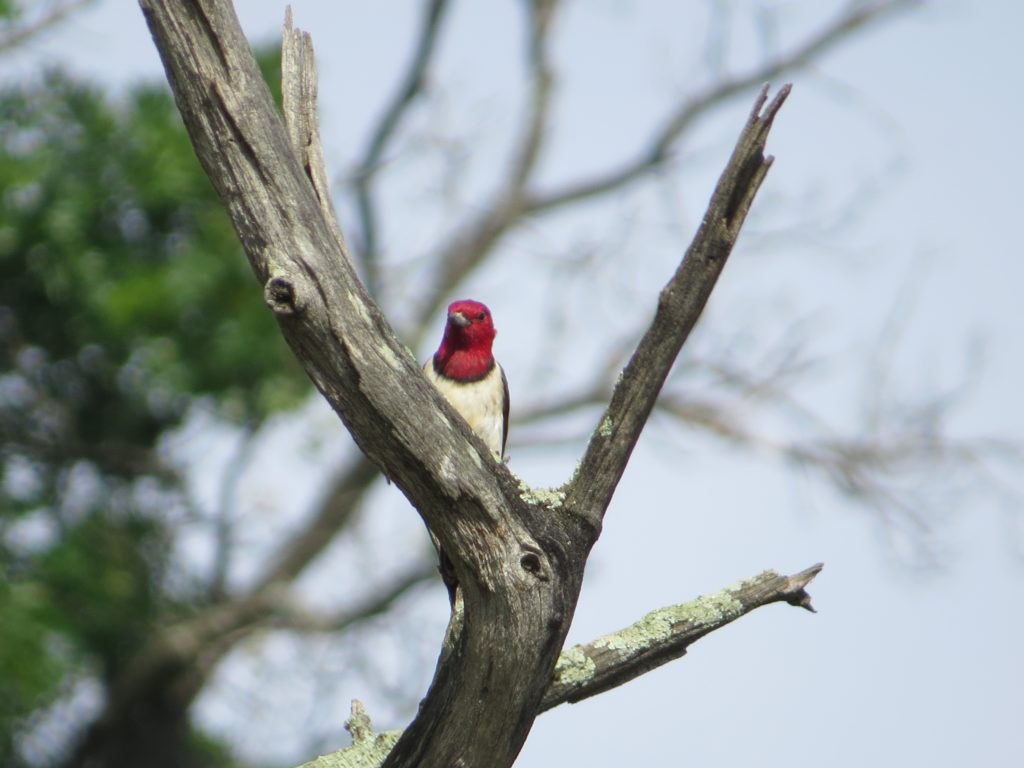
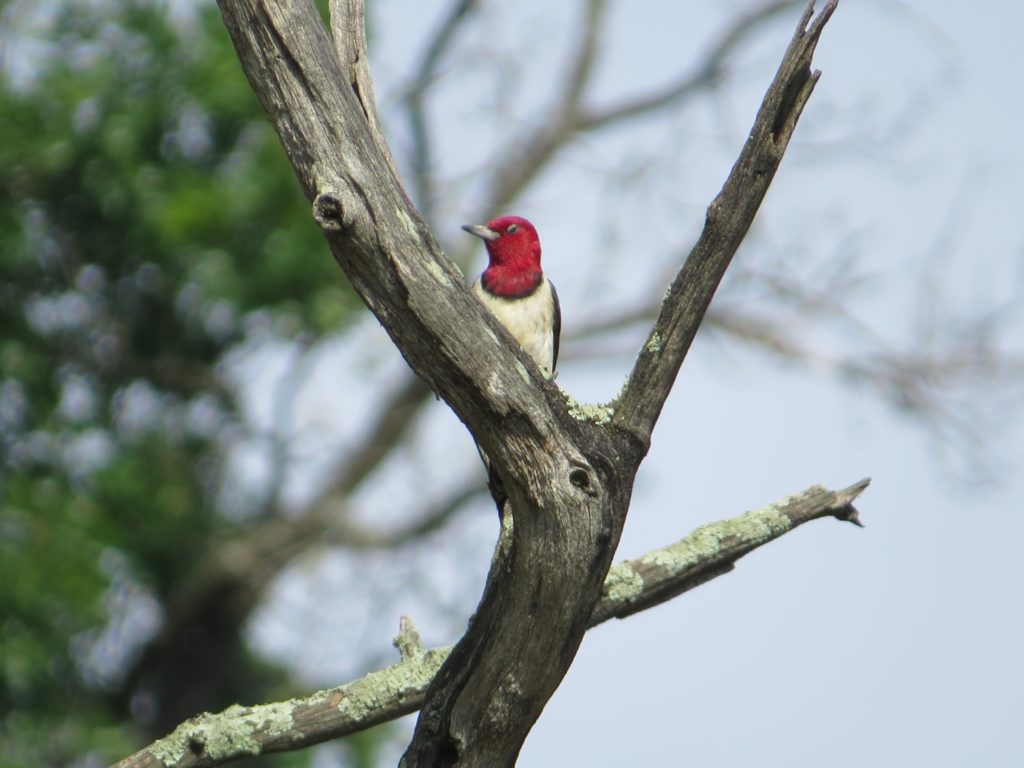 What’s this bird looking at? Probably a mate or a competitor for a mate. There were two that were involved in a seemingly endless chase, never once pausing for a good picture. At one point we saw them lock feet and fall to the ground like Eagles. It was fantastic.
What’s this bird looking at? Probably a mate or a competitor for a mate. There were two that were involved in a seemingly endless chase, never once pausing for a good picture. At one point we saw them lock feet and fall to the ground like Eagles. It was fantastic.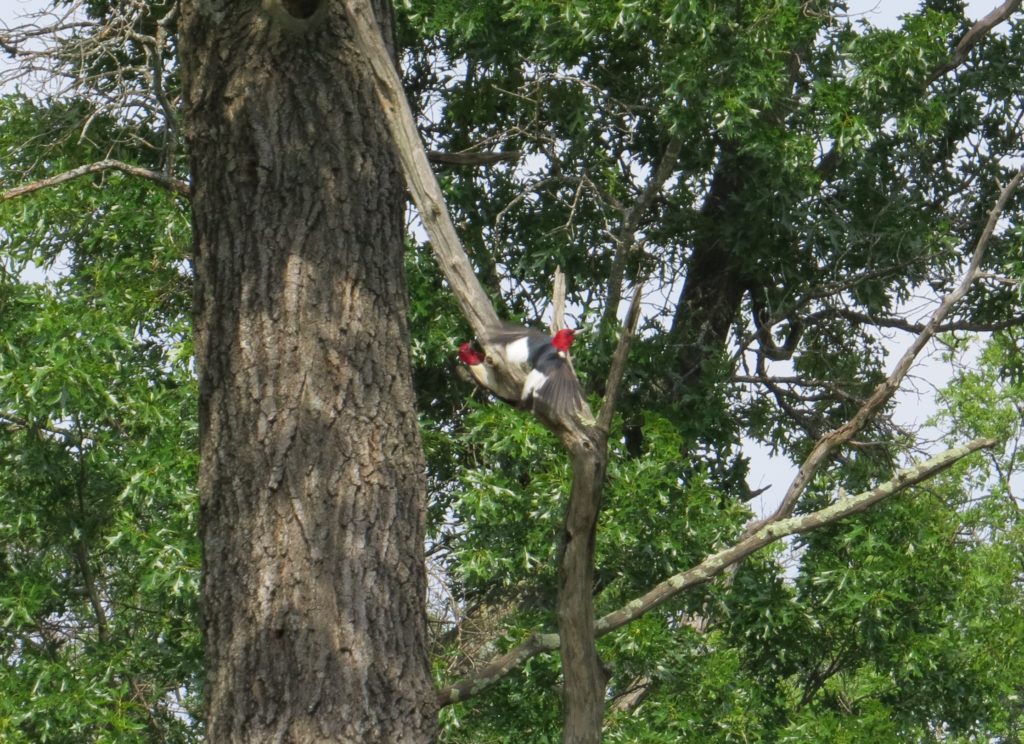 My own personal RHWO drought along with the near-threatened status of this bird made seeing this abundance of Red-headed Woodpeckers extremely thrilling. Never mind that this Woodpecker is ridiculously striking in appearance, sporting a bold, simplistic color pattern.
My own personal RHWO drought along with the near-threatened status of this bird made seeing this abundance of Red-headed Woodpeckers extremely thrilling. Never mind that this Woodpecker is ridiculously striking in appearance, sporting a bold, simplistic color pattern.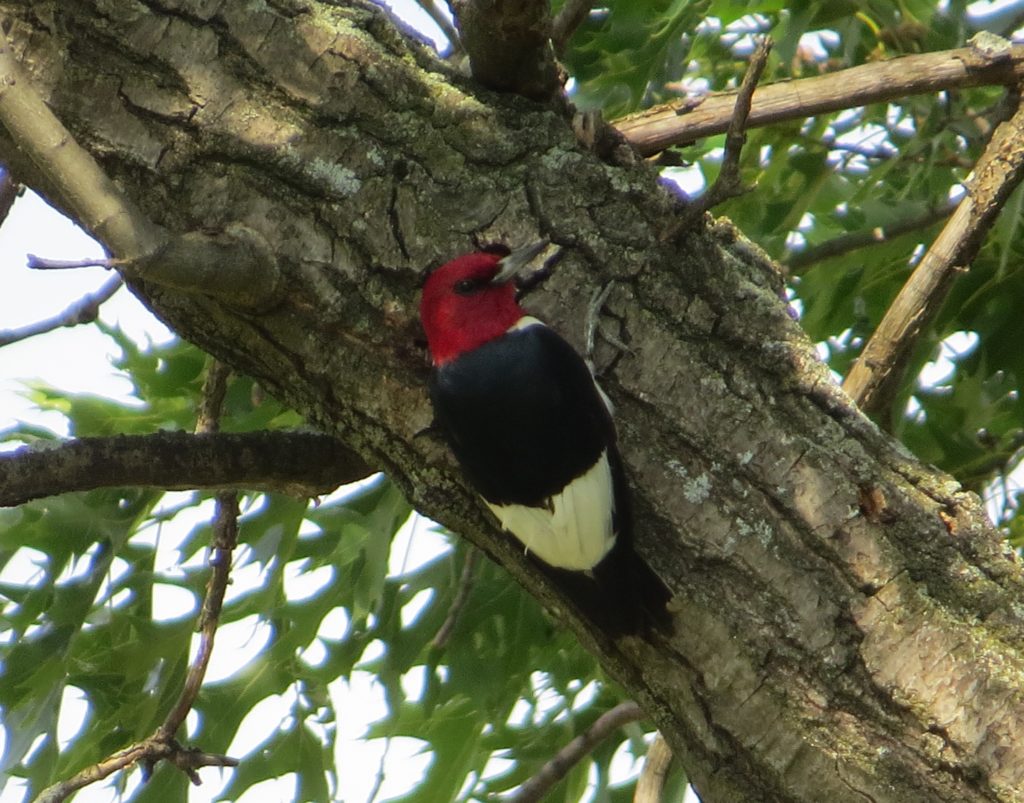
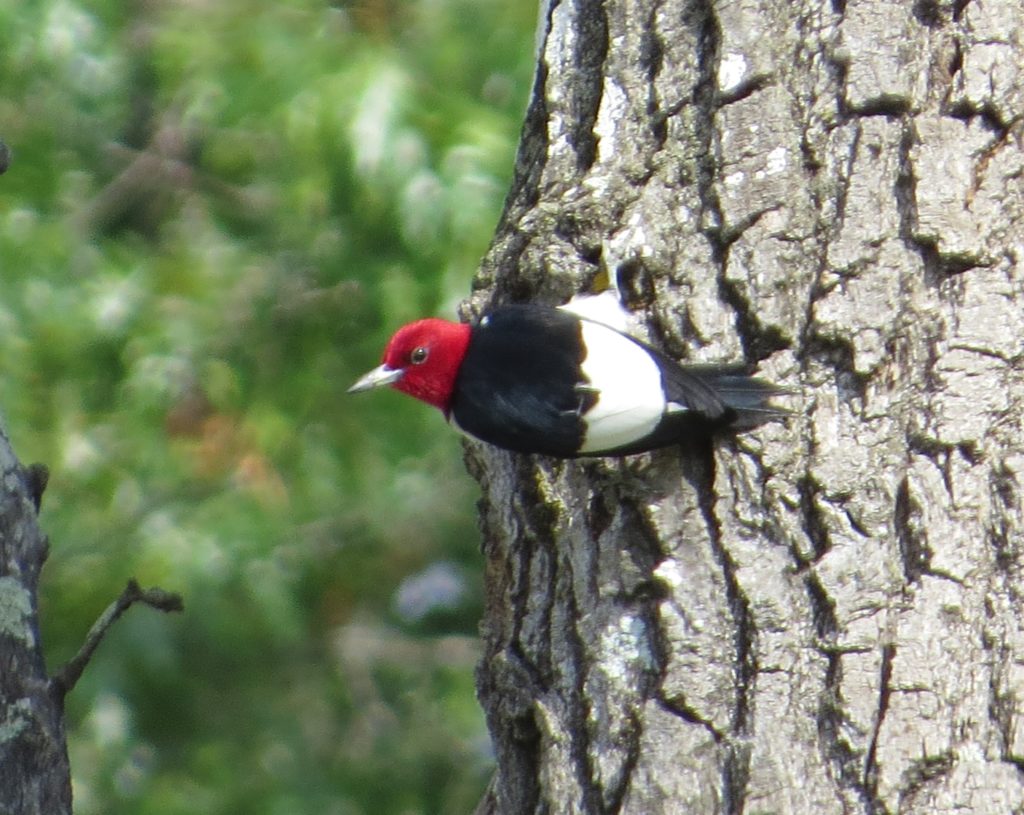 Evan enjoyed looking at all these cool Woodpeckers flying around us everywhere.
Evan enjoyed looking at all these cool Woodpeckers flying around us everywhere.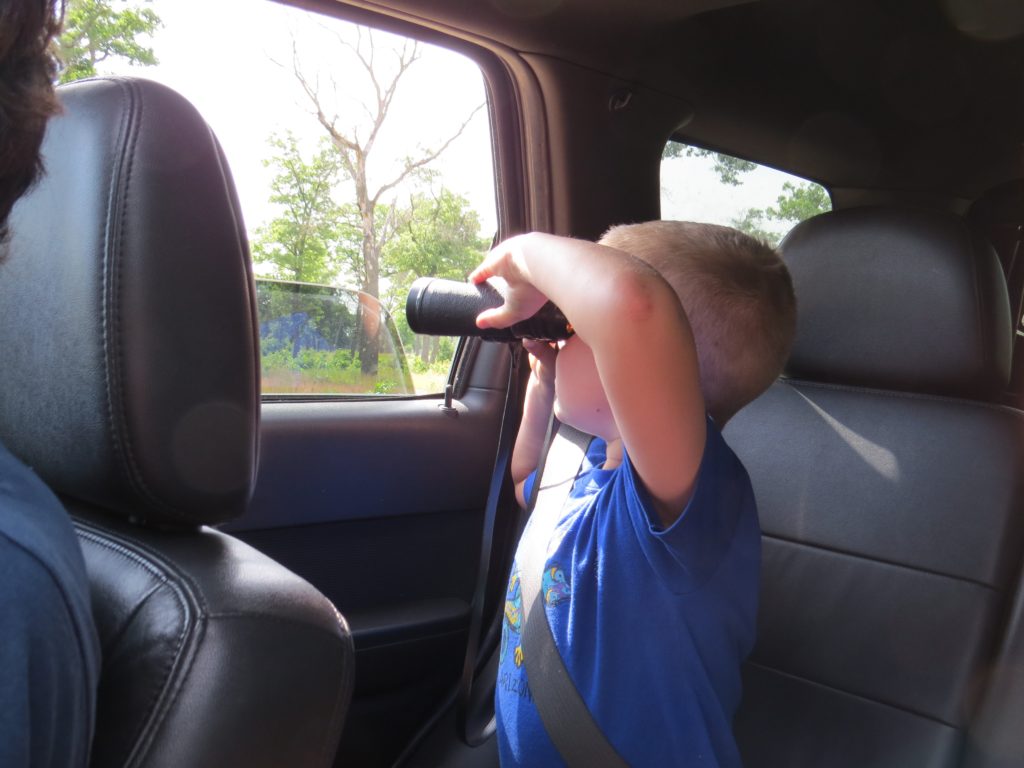 Then again, who wouldn’t?
Then again, who wouldn’t?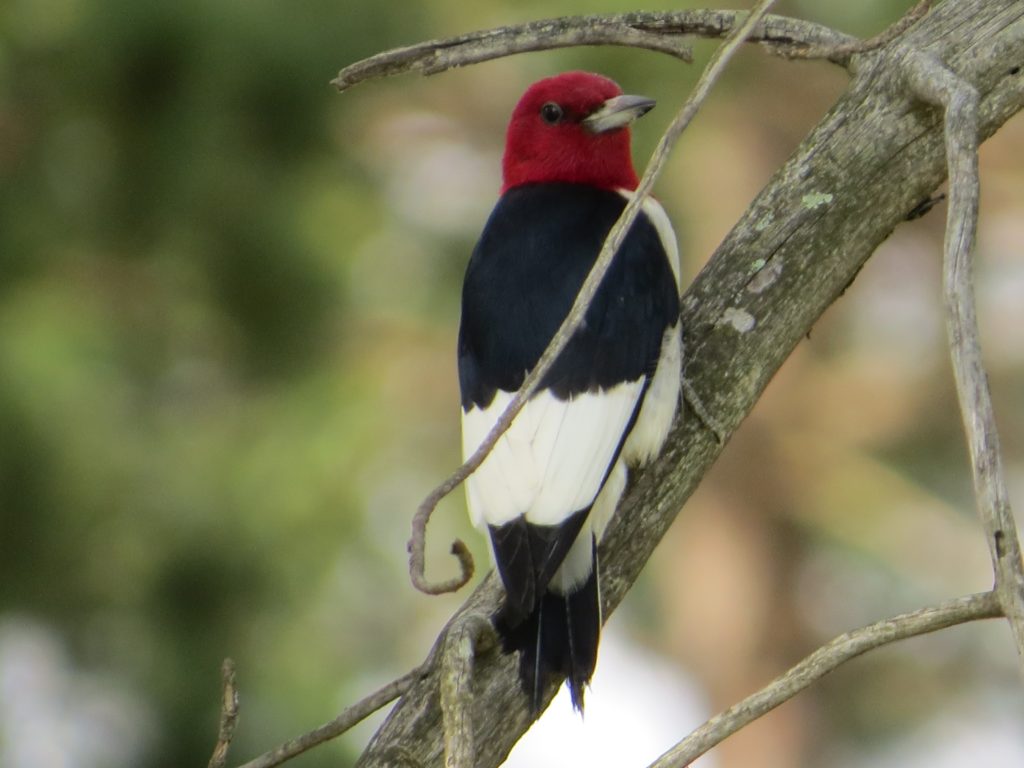 It’s unfortunate that we didn’t have more time to spend with these Woodpeckers at Necedah as other areas of Necedah required exploration before we had to break for supper, hotel check-in, and Kirtland’s scouting. But it’s good to know there is a place where one can go and see this species with ease.
It’s unfortunate that we didn’t have more time to spend with these Woodpeckers at Necedah as other areas of Necedah required exploration before we had to break for supper, hotel check-in, and Kirtland’s scouting. But it’s good to know there is a place where one can go and see this species with ease.
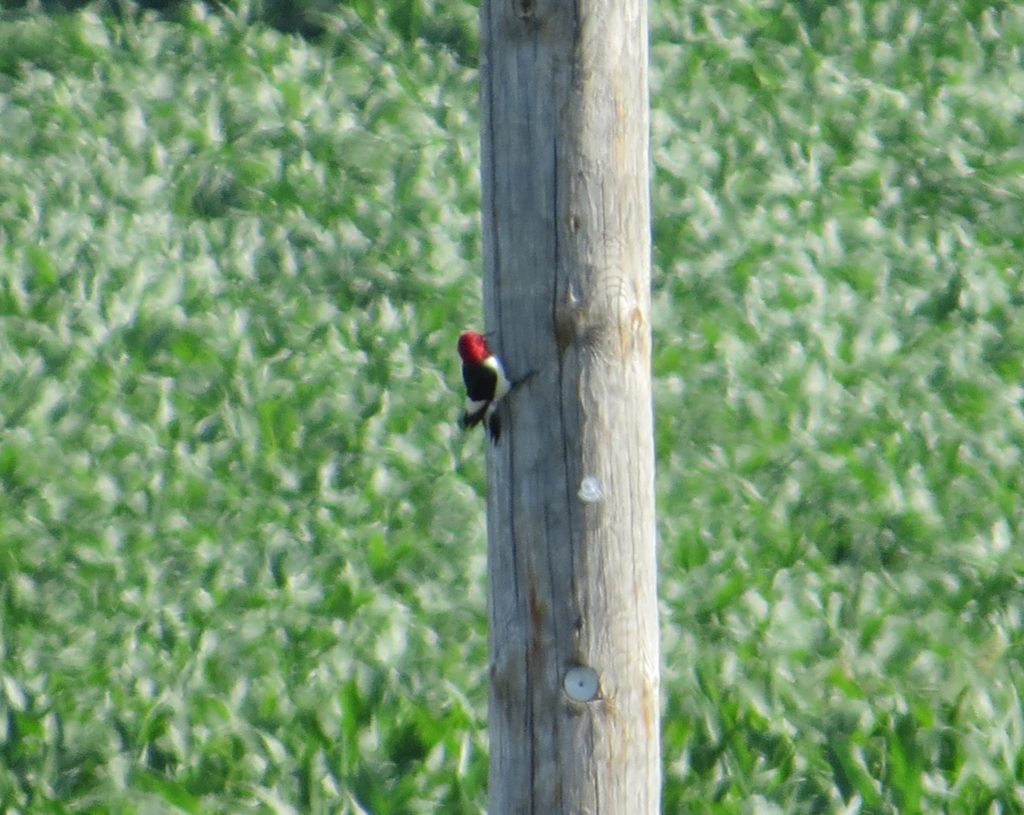
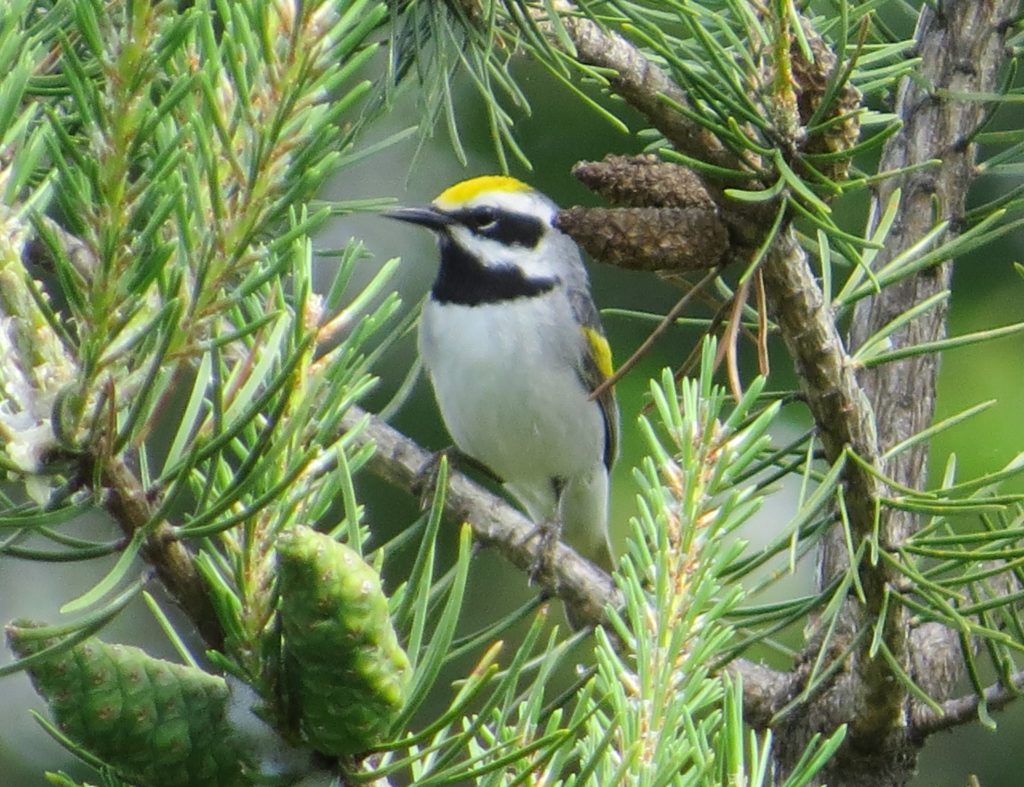 If Minnesota did not already claim (appropriately) the Common Loon as its state bird, the GWWA would make a fine choice. Minnesota plays host to roughly 50% of the world’s entire breeding population of this Warbler species. Wisconsin and Ontario are the other major stakeholders in rearing these birds. Maybe if most Wisconsinites knew this, they’d hold a referendum to denounce the Robin as their state bird and choose this Warbler instead.
If Minnesota did not already claim (appropriately) the Common Loon as its state bird, the GWWA would make a fine choice. Minnesota plays host to roughly 50% of the world’s entire breeding population of this Warbler species. Wisconsin and Ontario are the other major stakeholders in rearing these birds. Maybe if most Wisconsinites knew this, they’d hold a referendum to denounce the Robin as their state bird and choose this Warbler instead.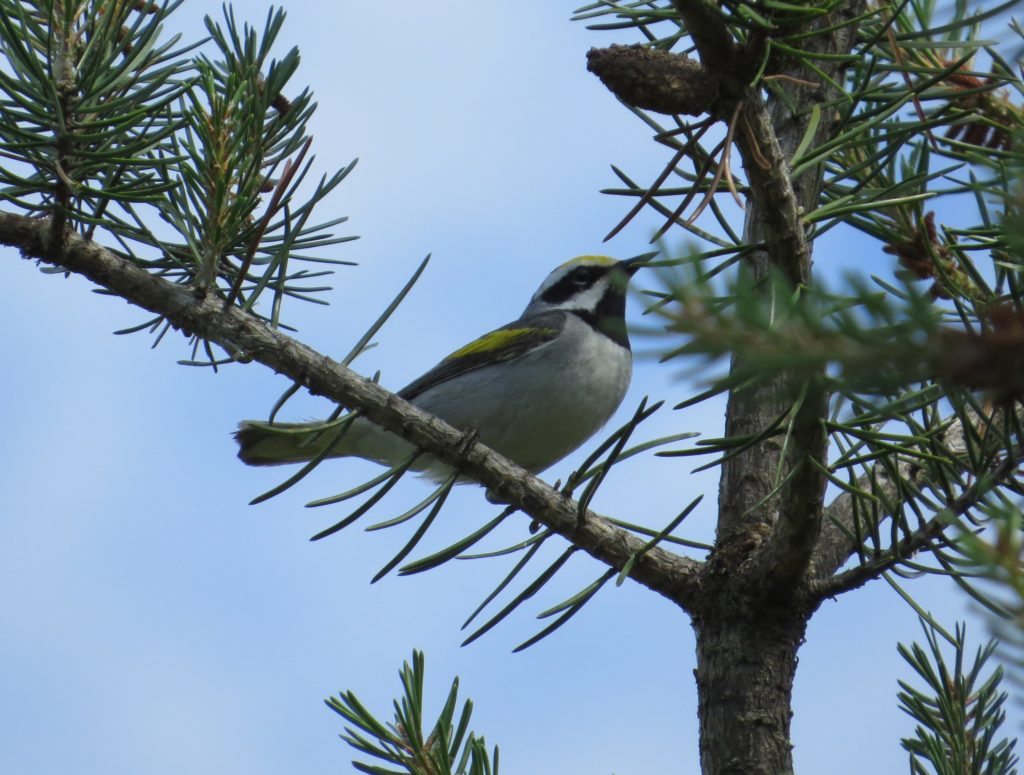 The Golden-wing’s preferred habitat is shrubby edges along wetlands and young forests. While the breeding population has remained stable in Minnesota over the last 45 years, this species has suffered a 60% population loss over that same time in the rest of its breeding range in North America. Even though Minnesota contains only 10% of the GWWA’s breeding range, we host nearly half of all the birds of this species. That puts an emphasis on just how much human development of wetlands and shrubby areas in other parts of the northeast has impacted this bird.
The Golden-wing’s preferred habitat is shrubby edges along wetlands and young forests. While the breeding population has remained stable in Minnesota over the last 45 years, this species has suffered a 60% population loss over that same time in the rest of its breeding range in North America. Even though Minnesota contains only 10% of the GWWA’s breeding range, we host nearly half of all the birds of this species. That puts an emphasis on just how much human development of wetlands and shrubby areas in other parts of the northeast has impacted this bird.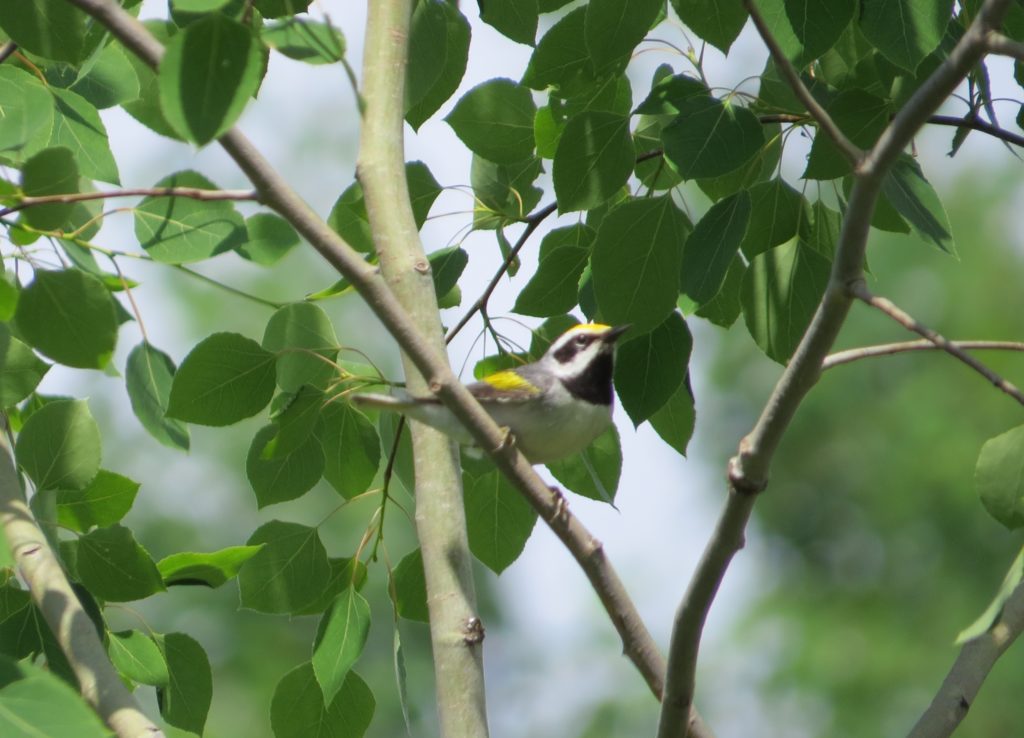 Besides human activity threatening this Warbler, the closely related Blue-winged Warbler is expanding its range in Minnesota. This is problematic because the more dominant Blue-wings prefer the same type of habitat.
Besides human activity threatening this Warbler, the closely related Blue-winged Warbler is expanding its range in Minnesota. This is problematic because the more dominant Blue-wings prefer the same type of habitat.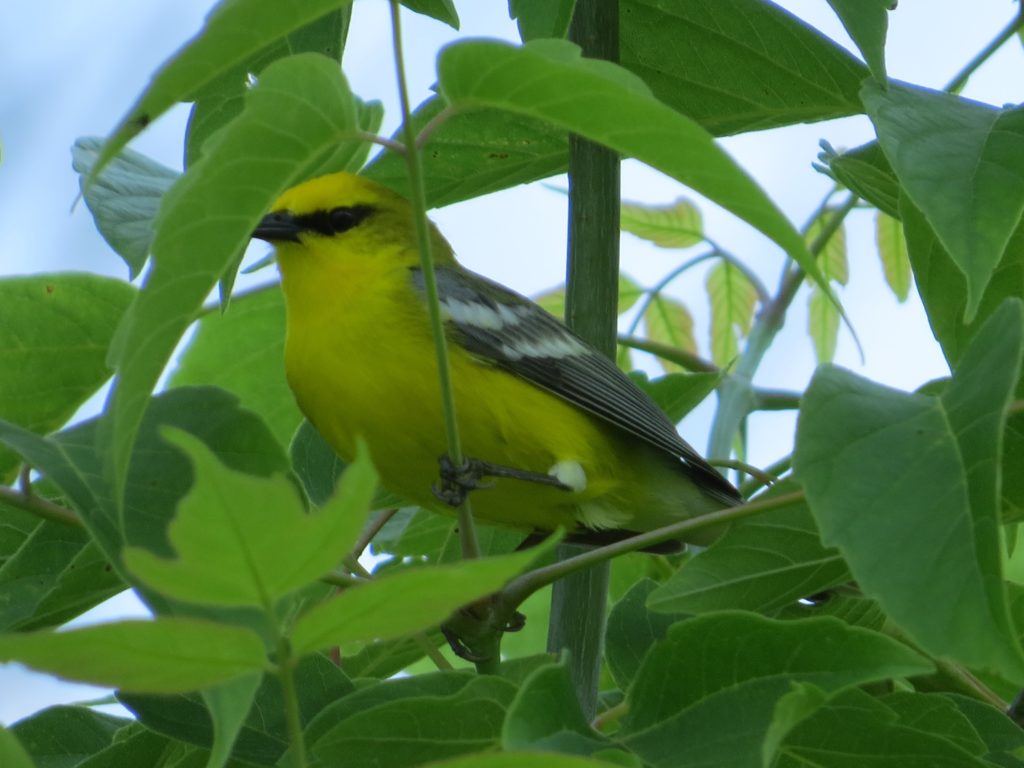 And when the Blue-wings aren’t kicking out the Golden-wings, they are hybridizing with them. I have yet to see one of the two main hybrids.
And when the Blue-wings aren’t kicking out the Golden-wings, they are hybridizing with them. I have yet to see one of the two main hybrids.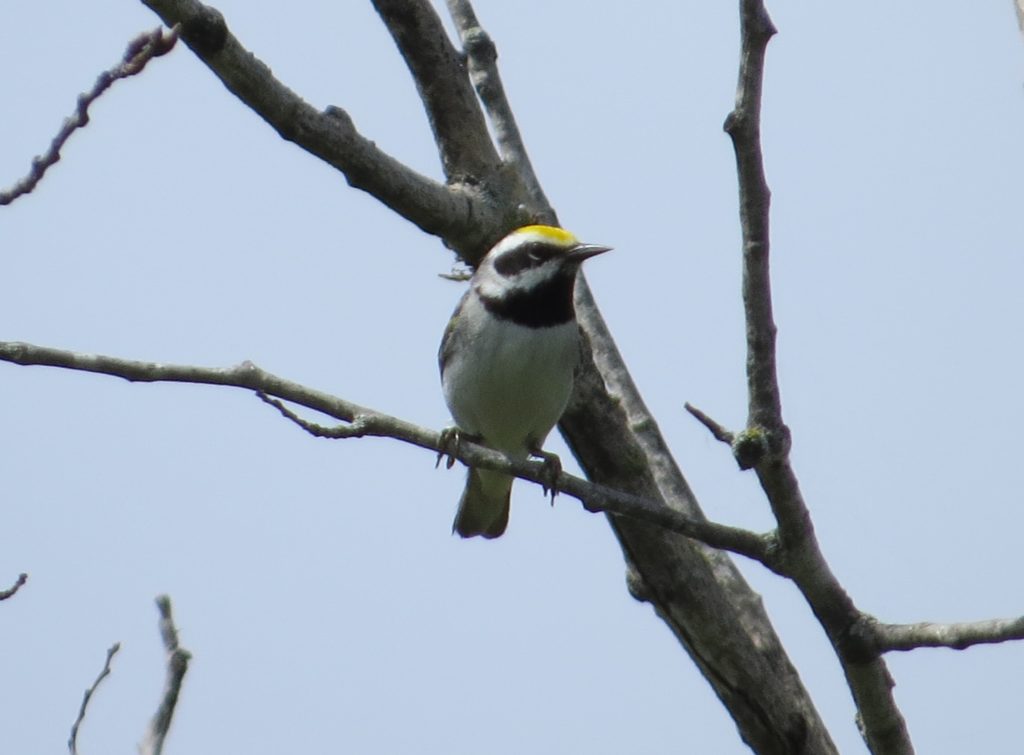 Like the Cerulean Warbler, the Golden-winged Warbler also winters in Central and South America, thriving in shade-grown coffee plantations. Again, another reminder to drink bird-friendly coffee. This beautiful home-grown bird is truly a treasure that needs all the help it can get.
Like the Cerulean Warbler, the Golden-winged Warbler also winters in Central and South America, thriving in shade-grown coffee plantations. Again, another reminder to drink bird-friendly coffee. This beautiful home-grown bird is truly a treasure that needs all the help it can get.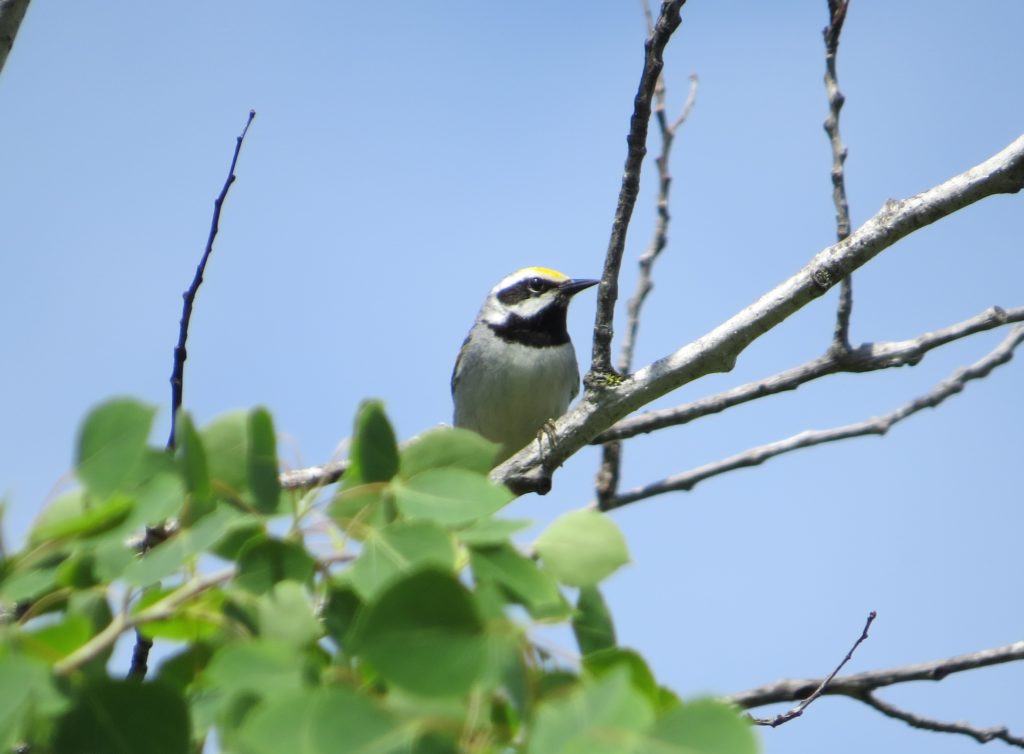 Knowing how fragile a species is makes you appreciate a sighting like ours all the more. Hopefully the Golden-winged Warbler has a bright future.
Knowing how fragile a species is makes you appreciate a sighting like ours all the more. Hopefully the Golden-winged Warbler has a bright future.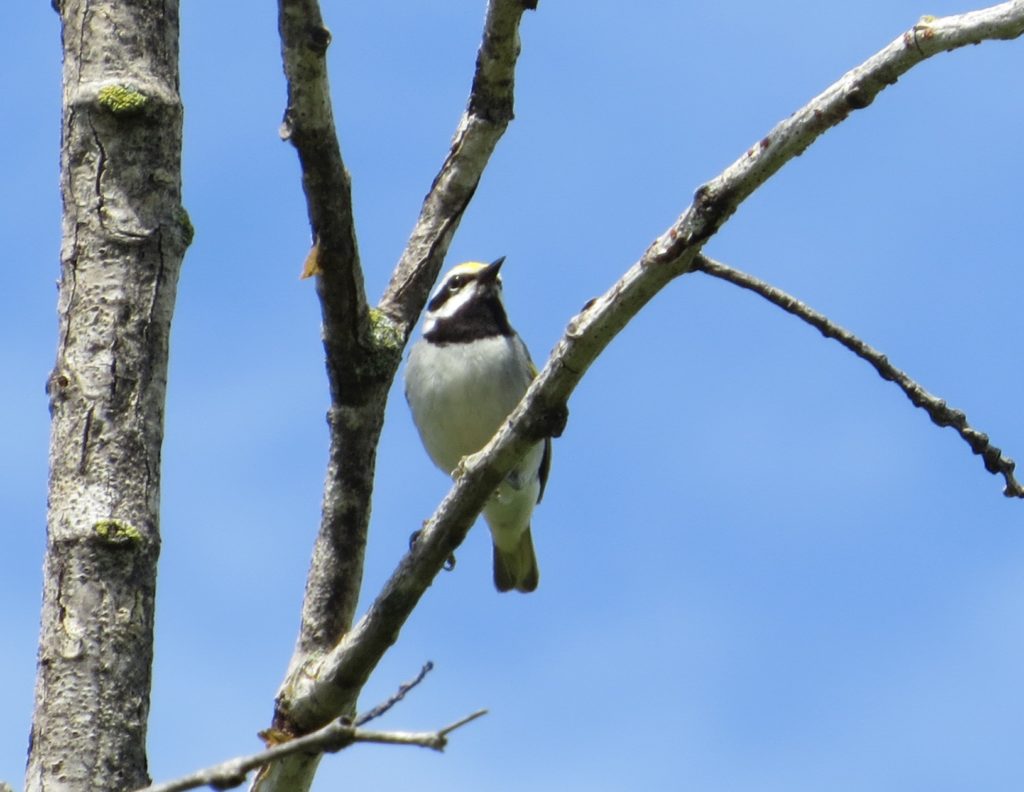
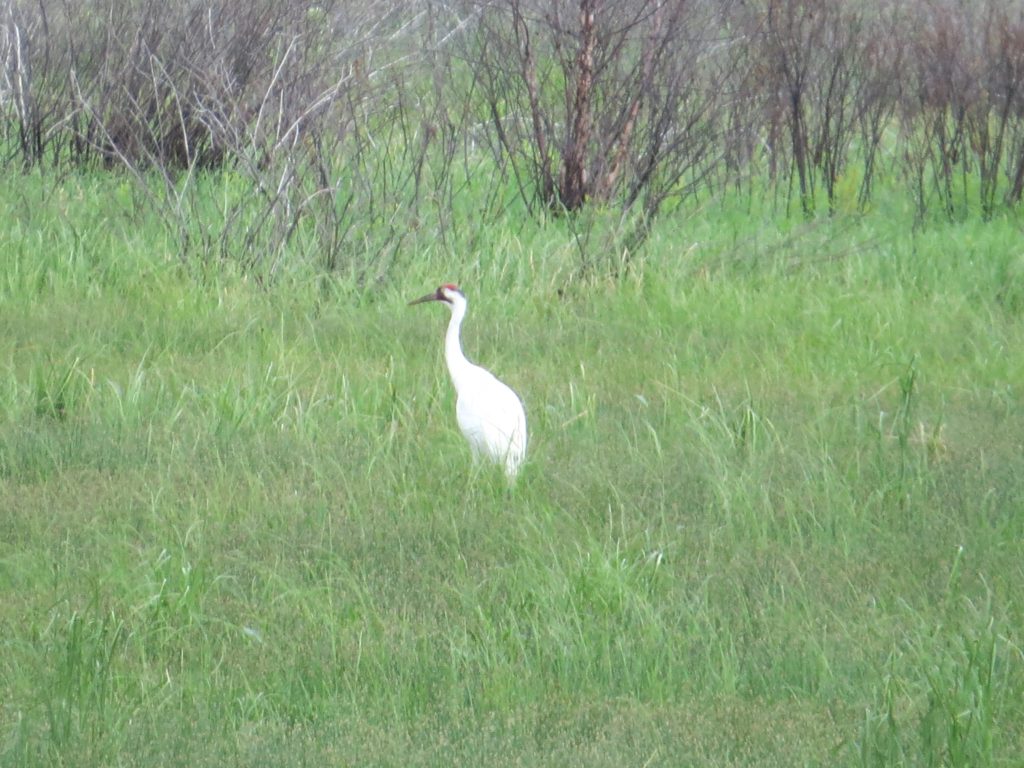 The three of us got out of the car to enjoy this easy lifer. Then I looked back toward the vehicle and spied a second bird in a waterway that had been hidden by some trees. This one was much closer to the road and gave us some great photo ops.
The three of us got out of the car to enjoy this easy lifer. Then I looked back toward the vehicle and spied a second bird in a waterway that had been hidden by some trees. This one was much closer to the road and gave us some great photo ops.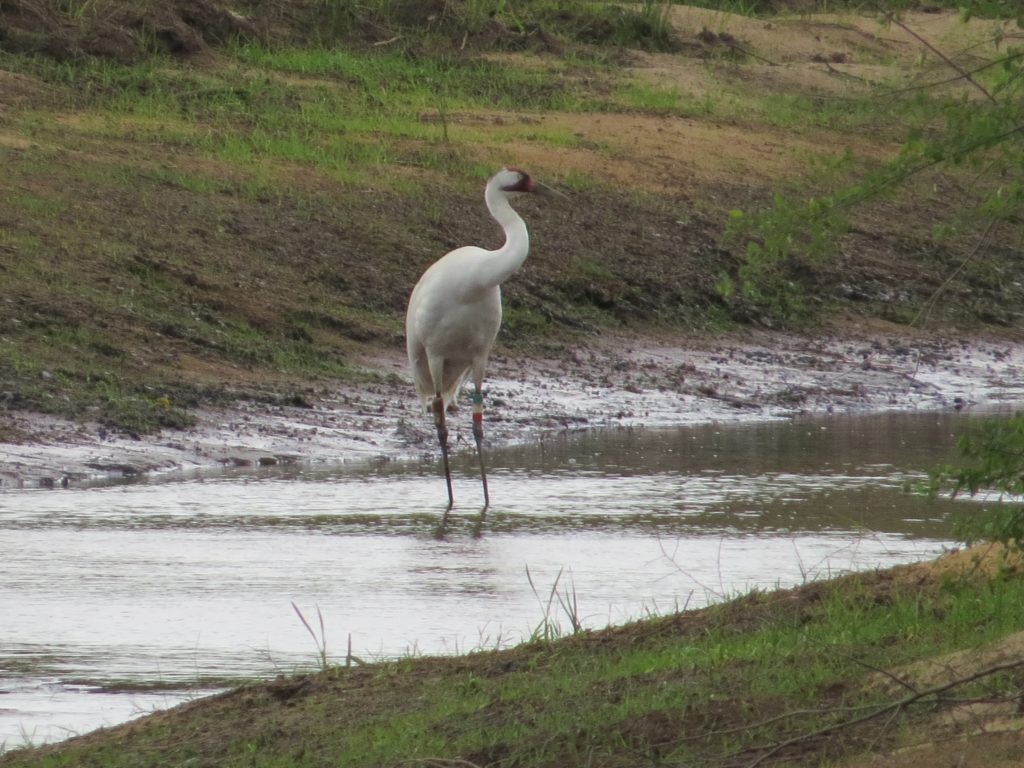
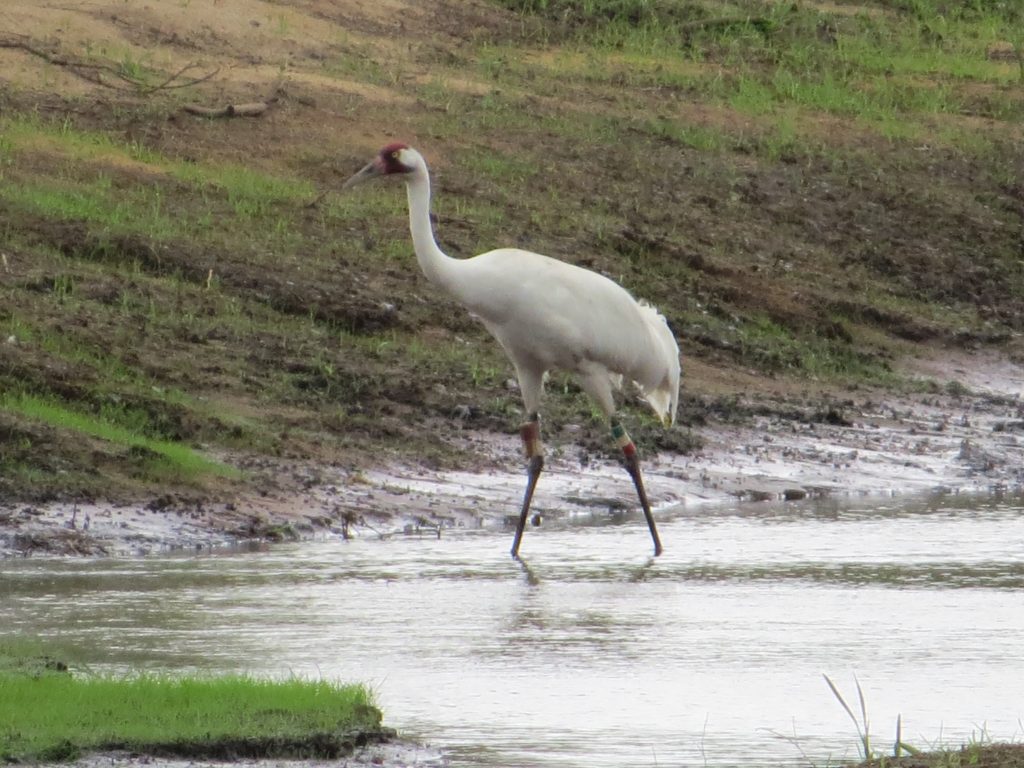
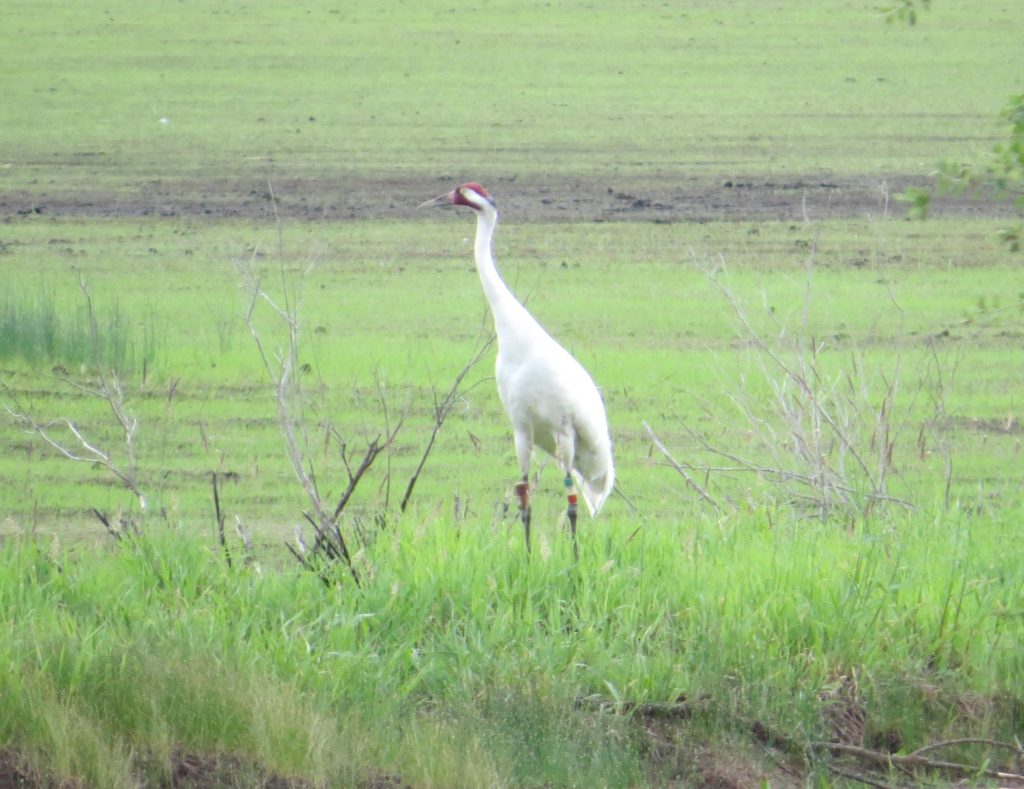 As we watched this Crane, something special happened. This one threw back its head and bugled for us! It was the loudest and coolest thing I’ve ever heard come out of a bird. It sounded kind of like a Trumpeter Swan, only much more impressive. Speaking of impressive, this bird stands at 52″ tall before it does this. That’s roughly the same height as Evan.
As we watched this Crane, something special happened. This one threw back its head and bugled for us! It was the loudest and coolest thing I’ve ever heard come out of a bird. It sounded kind of like a Trumpeter Swan, only much more impressive. Speaking of impressive, this bird stands at 52″ tall before it does this. That’s roughly the same height as Evan.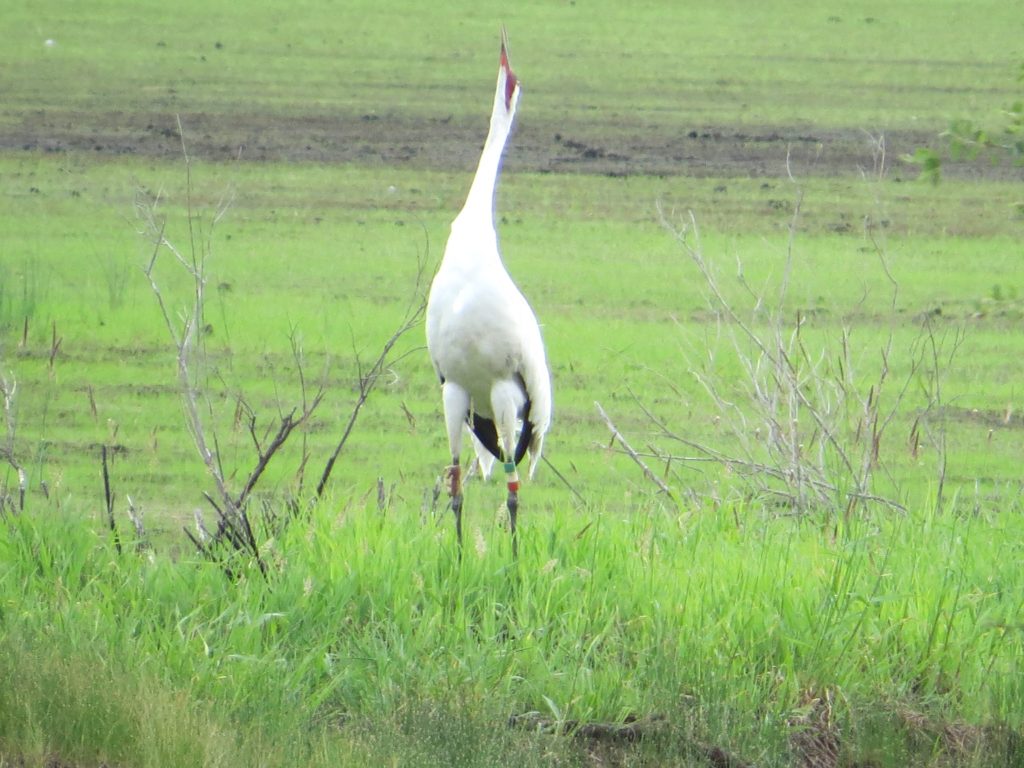
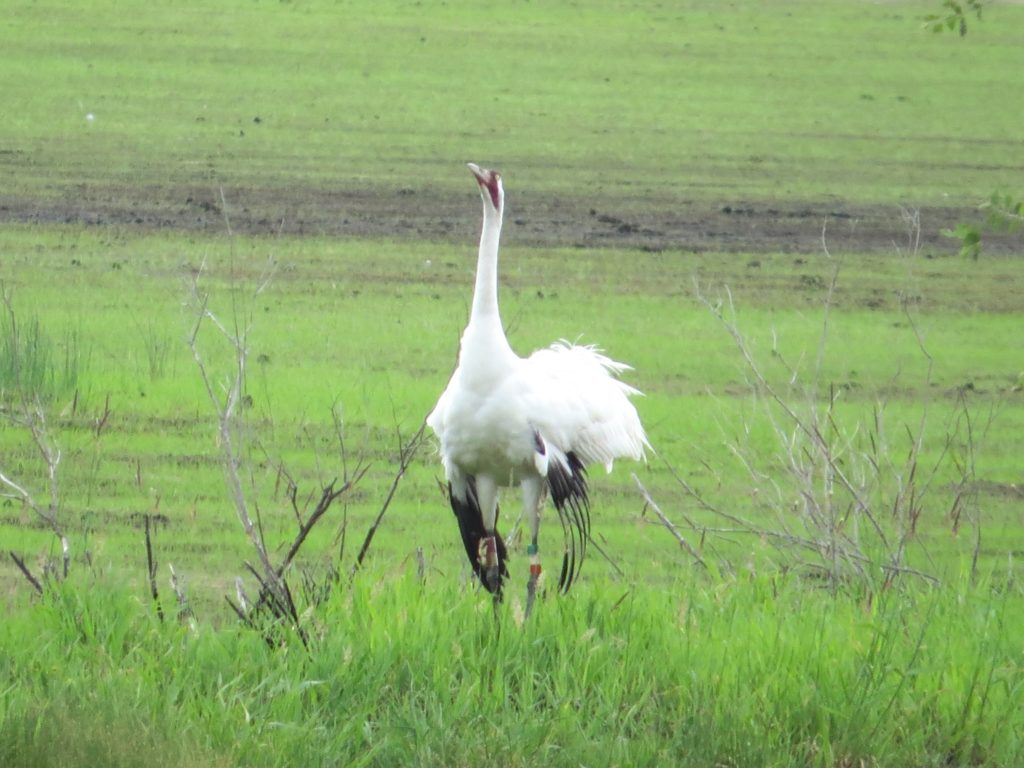 The three of us really enjoyed watching these birds.
The three of us really enjoyed watching these birds.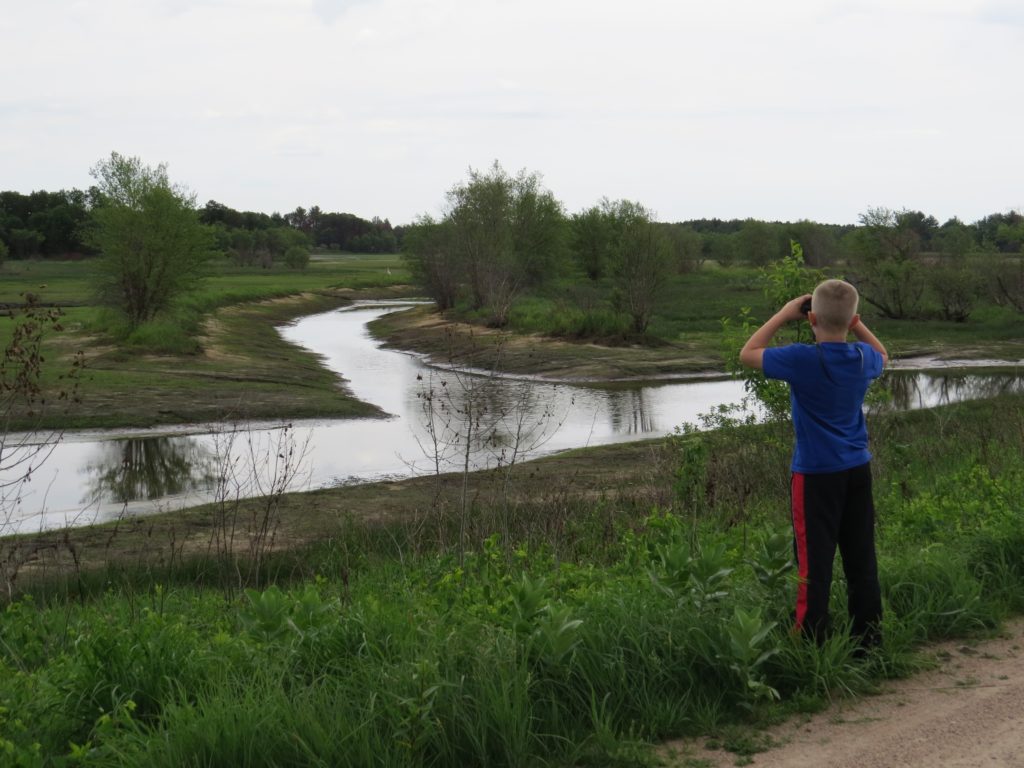 Here are Evan and Tommy each observing a different Crane. The one Tommy is looking at is visible in the photo. Evan is looking at the first one we found.
Here are Evan and Tommy each observing a different Crane. The one Tommy is looking at is visible in the photo. Evan is looking at the first one we found.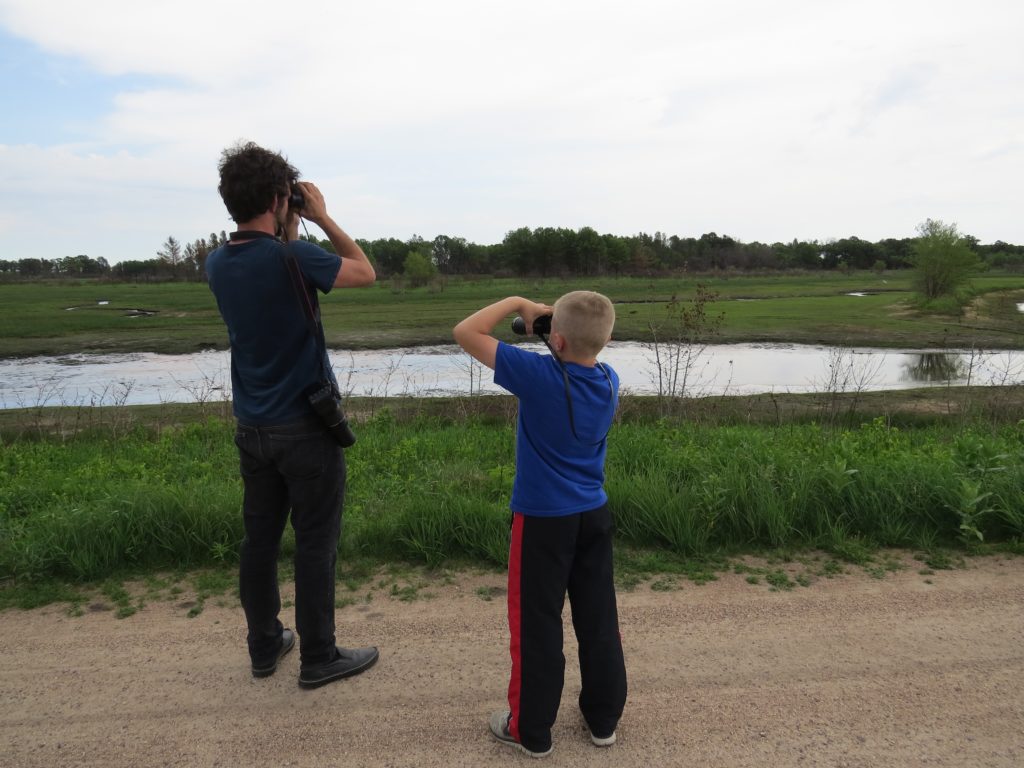
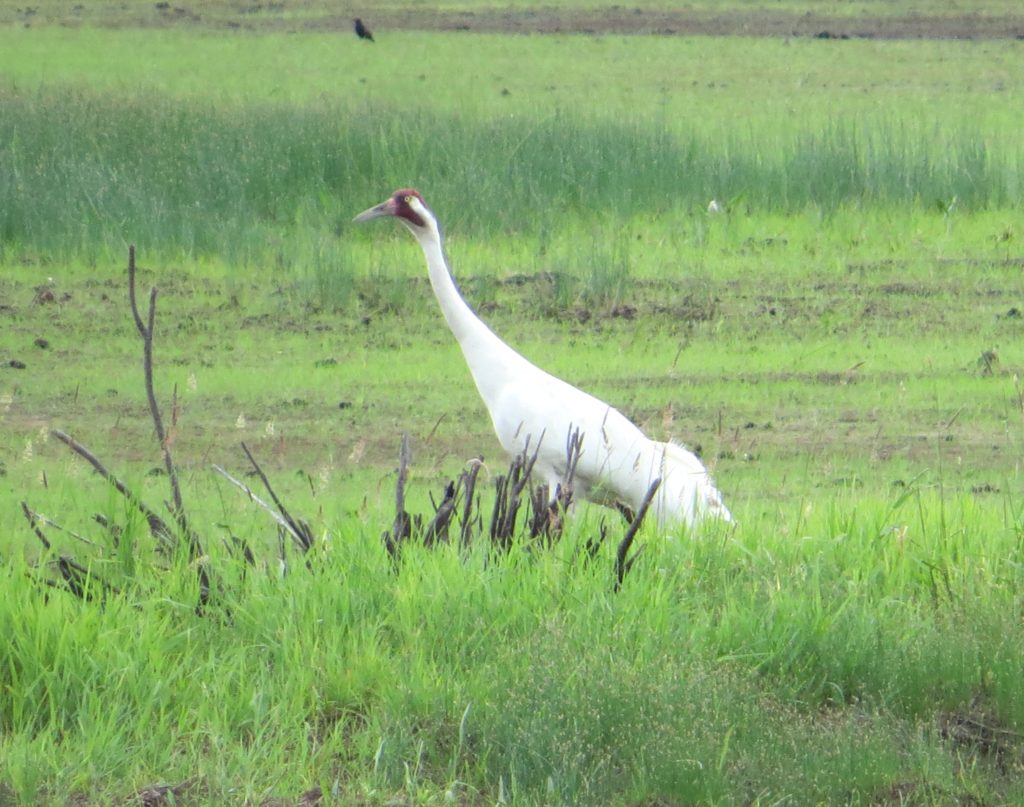 The Whooping Crane is one massive bird:
The Whooping Crane is one massive bird: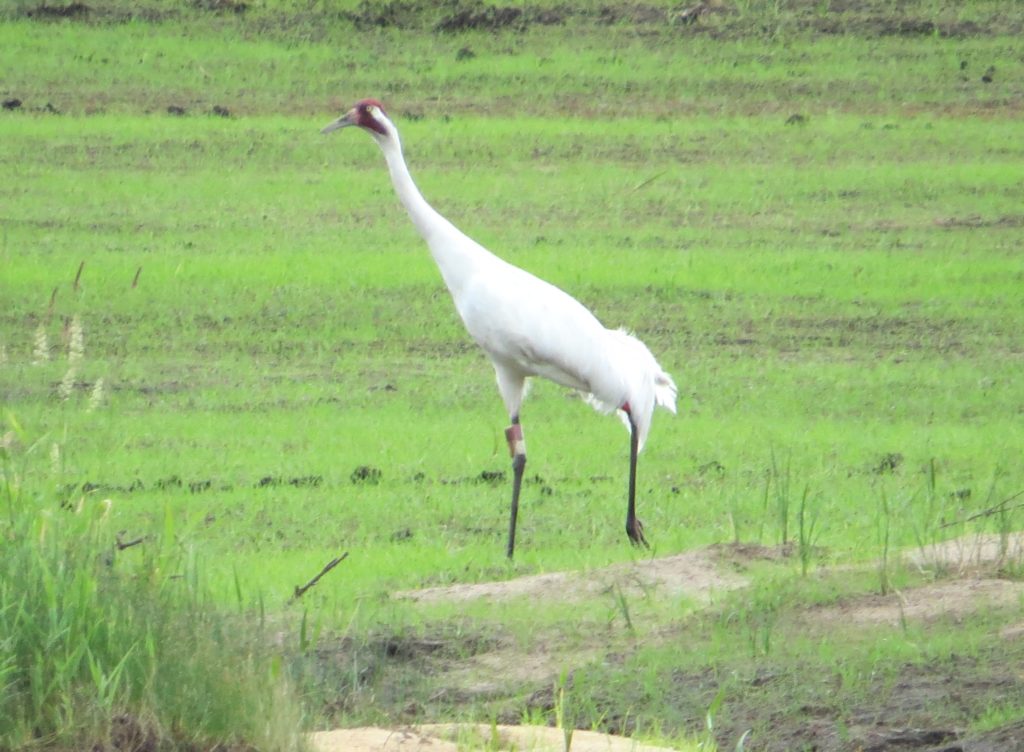 This cooperative bird eventually flew off and joined the much more distant Whooper. So the three of us decided to keep exploring Necedah. Necedah ended up being a phenomenal birding spot, so much so that I will save the rest for a different post and just focus on the Cranes from there in this post. I’ll just say that Necedah plays host to some other beautiful birds, who are also struggling in numbers.
This cooperative bird eventually flew off and joined the much more distant Whooper. So the three of us decided to keep exploring Necedah. Necedah ended up being a phenomenal birding spot, so much so that I will save the rest for a different post and just focus on the Cranes from there in this post. I’ll just say that Necedah plays host to some other beautiful birds, who are also struggling in numbers.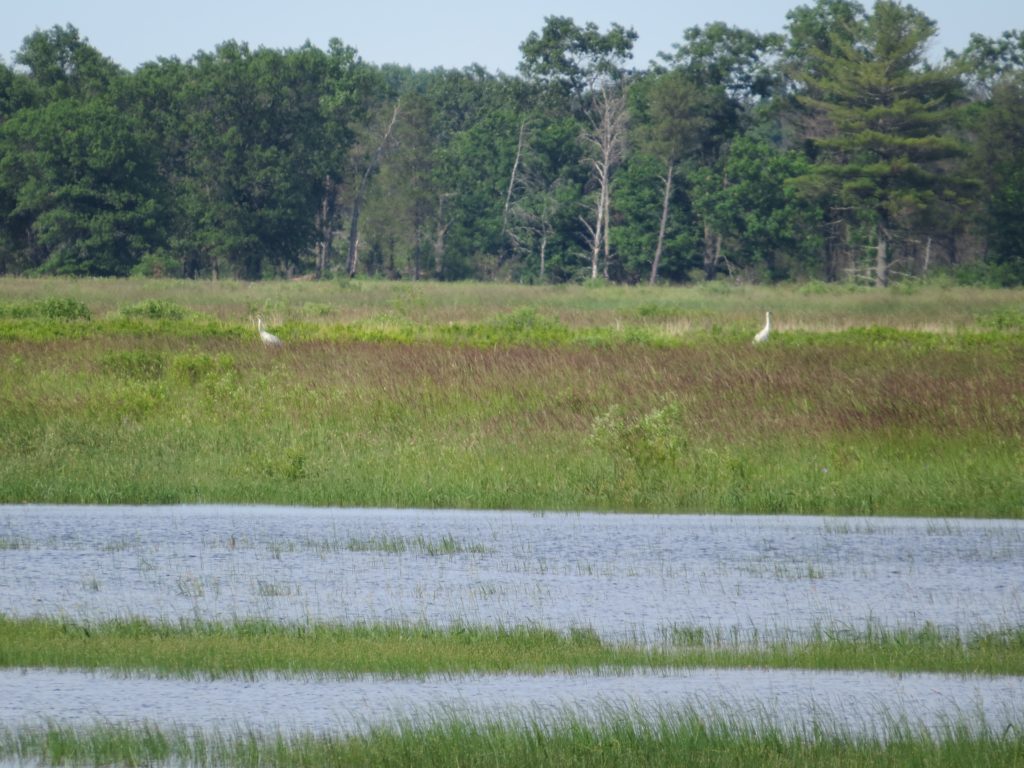 The Visitors Center also allowed us a humorous reprieve from the serious birding with some clowning around and a photo op.
The Visitors Center also allowed us a humorous reprieve from the serious birding with some clowning around and a photo op.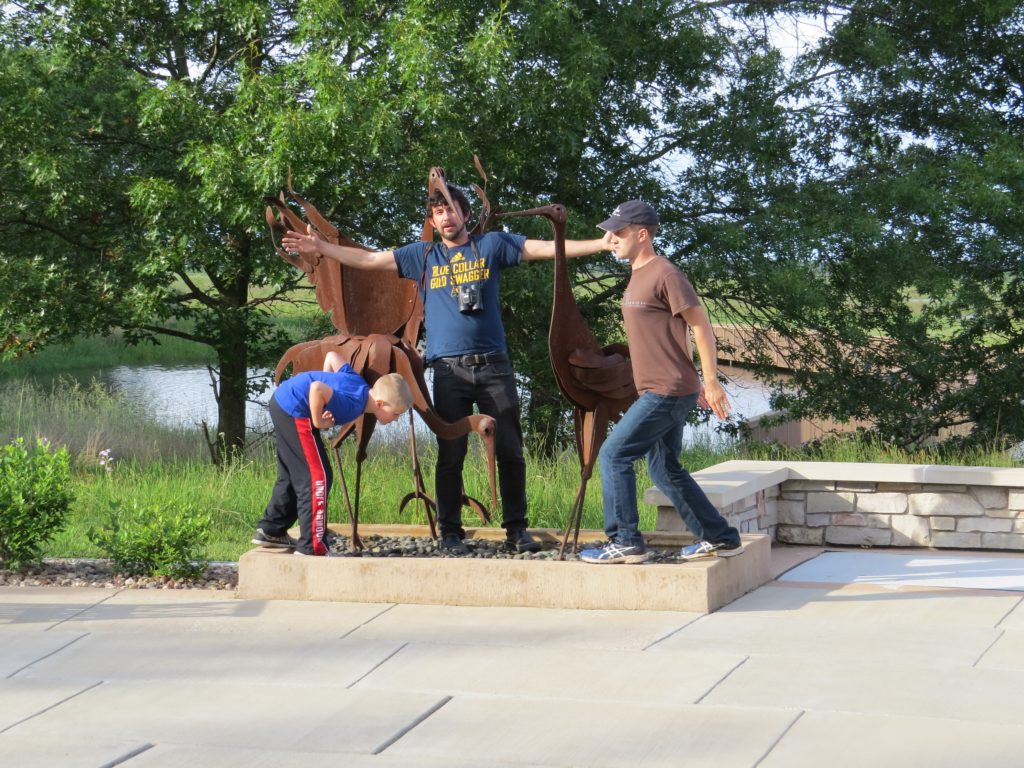 As I was monkeying with the settings for the self-timer on my camera, I ended up getting this gem on accident.
As I was monkeying with the settings for the self-timer on my camera, I ended up getting this gem on accident.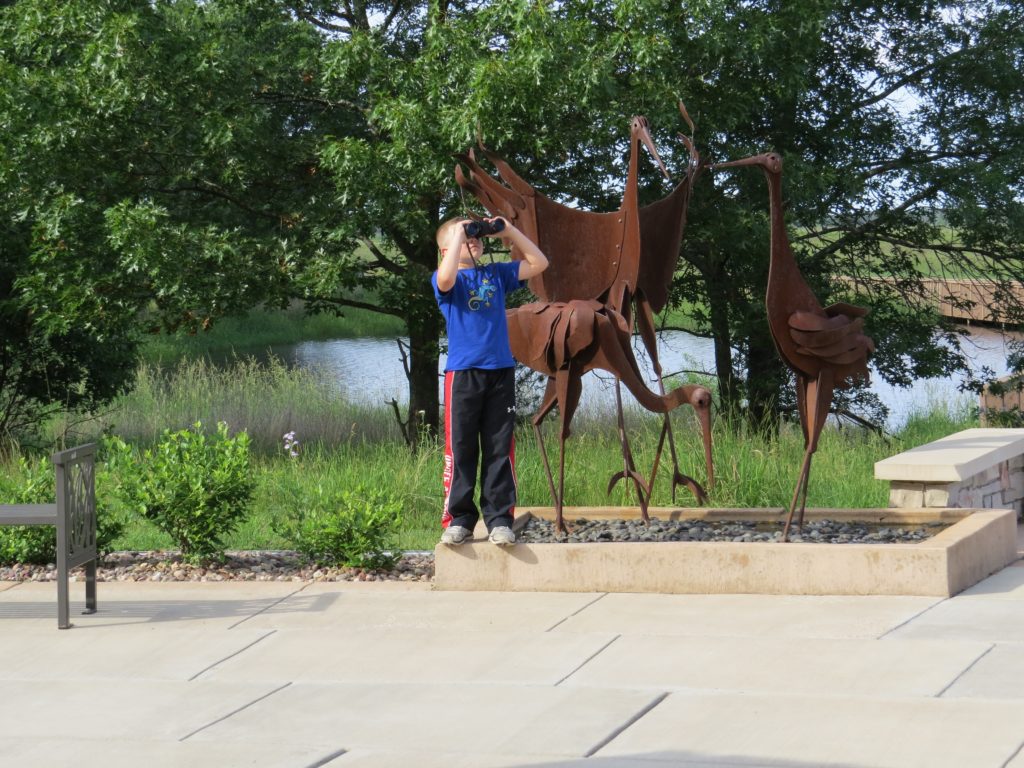
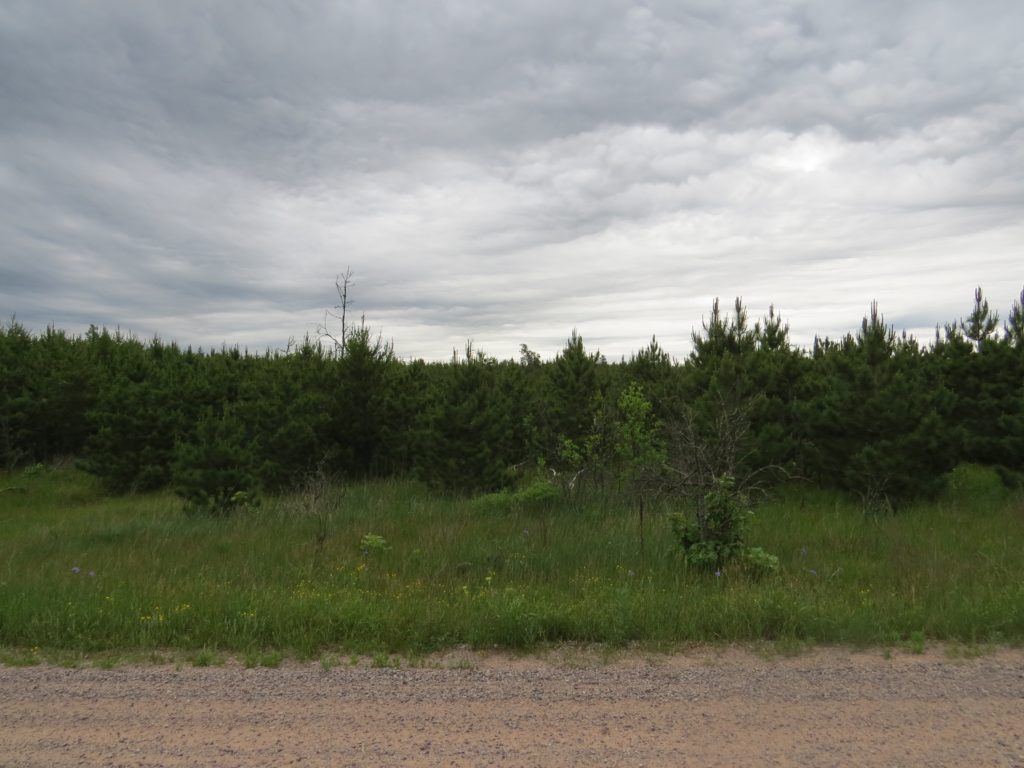
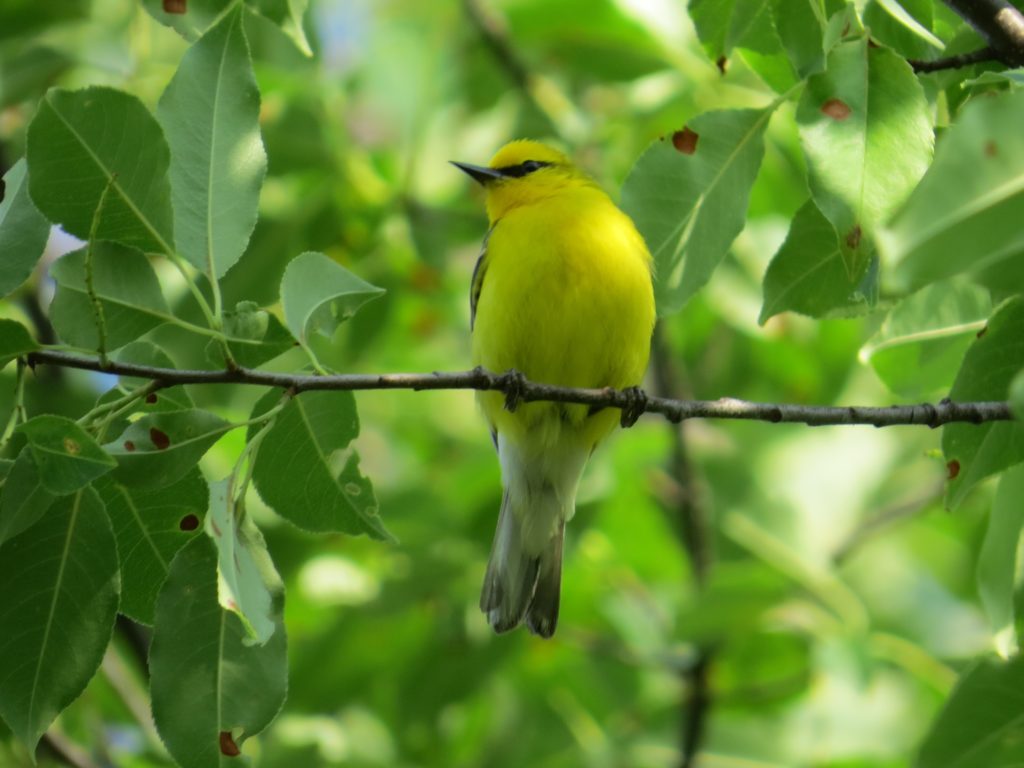
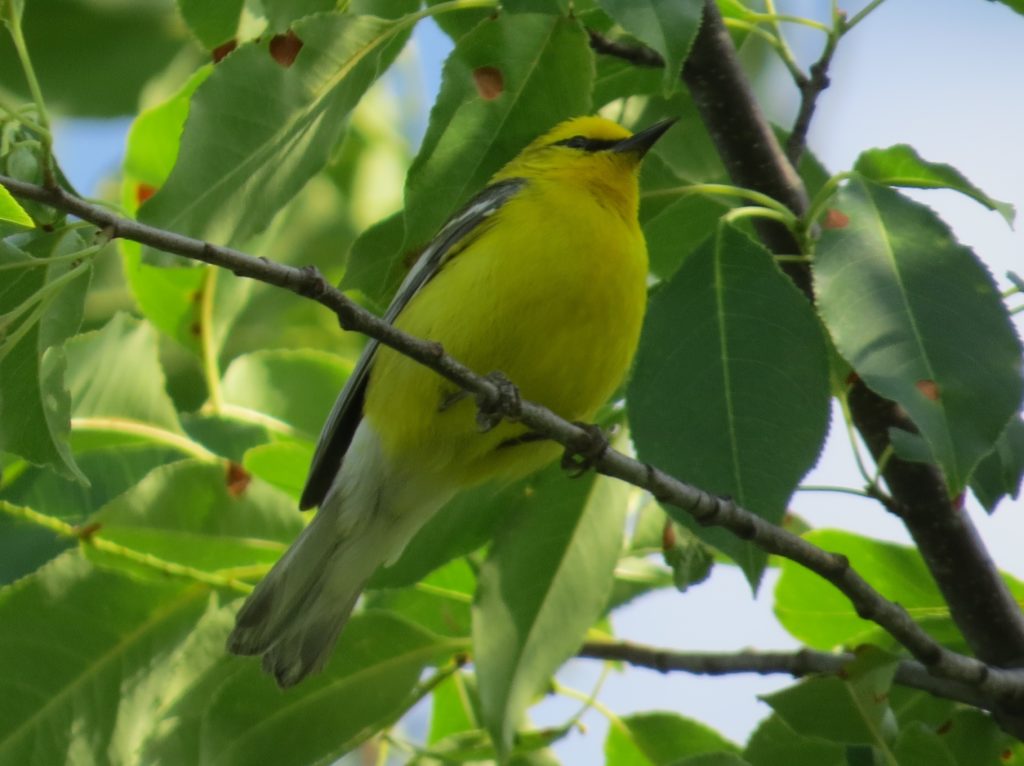 We were after one of the most coveted and beautiful Warblers there is–the Cerulean Warbler. This is one of my all-time favorite birds. This individual was only the fourth one I’ve ever seen; it’s one of those birds that makes you feel like you are lifering all over again when you see it, it’s that cool. This bird is so rare, beautiful, and cooperative–no apologies on this photo dump.
We were after one of the most coveted and beautiful Warblers there is–the Cerulean Warbler. This is one of my all-time favorite birds. This individual was only the fourth one I’ve ever seen; it’s one of those birds that makes you feel like you are lifering all over again when you see it, it’s that cool. This bird is so rare, beautiful, and cooperative–no apologies on this photo dump.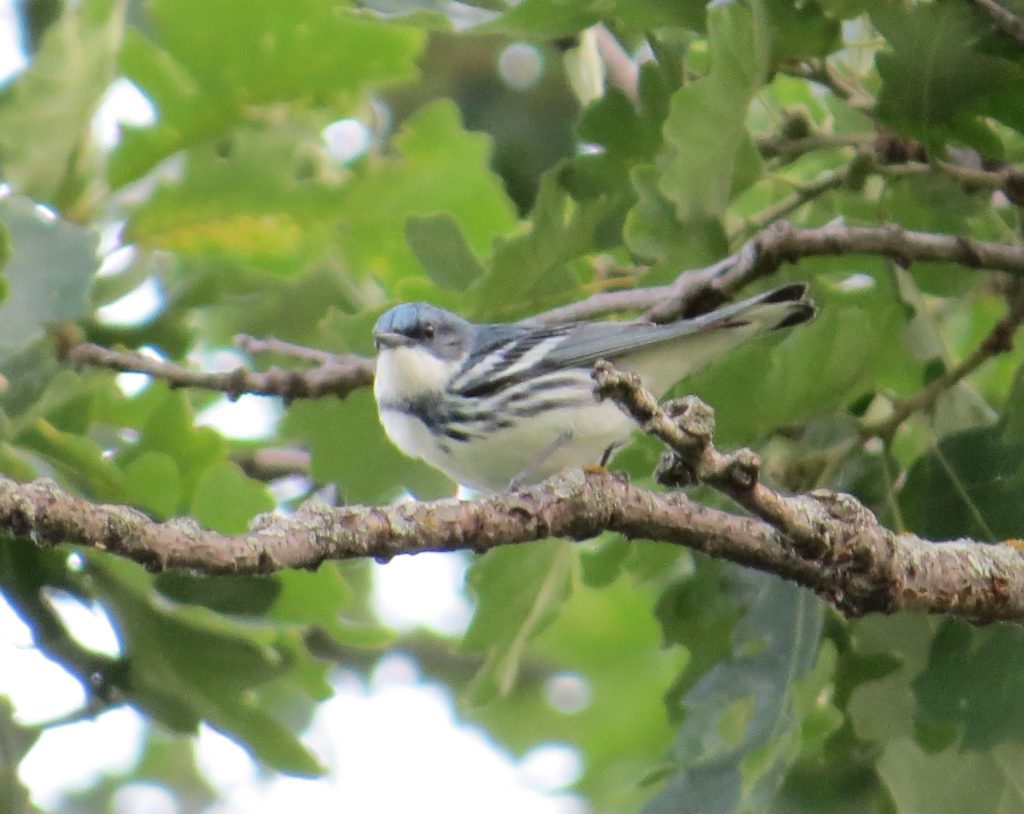
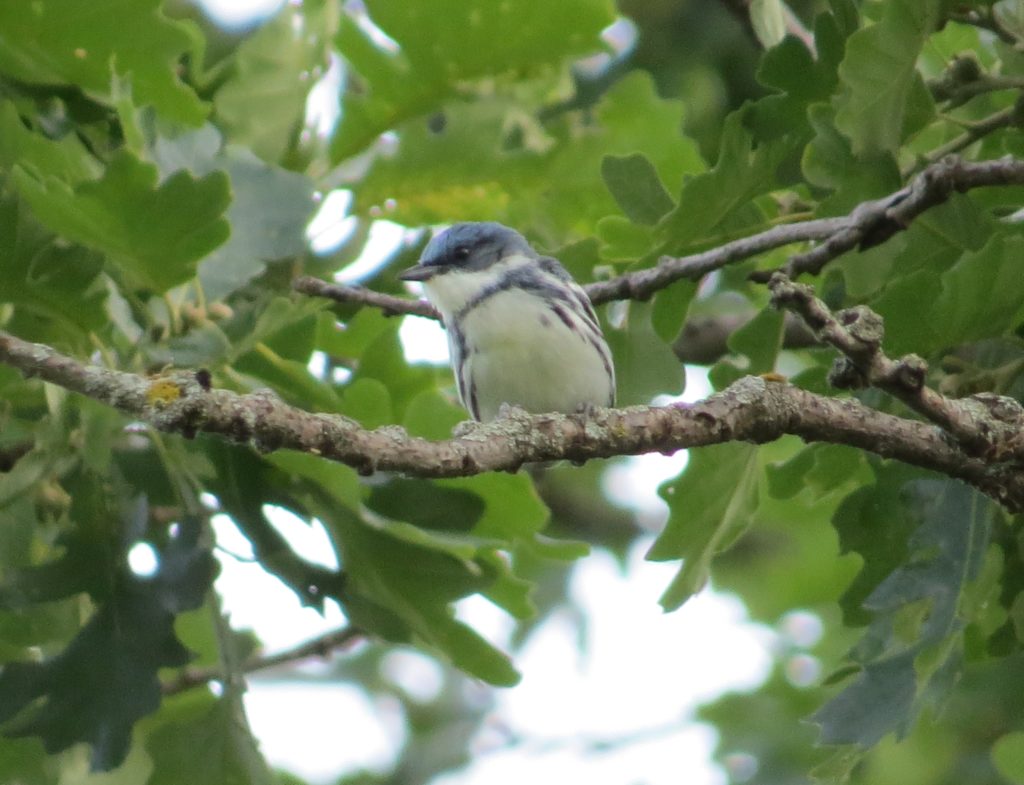
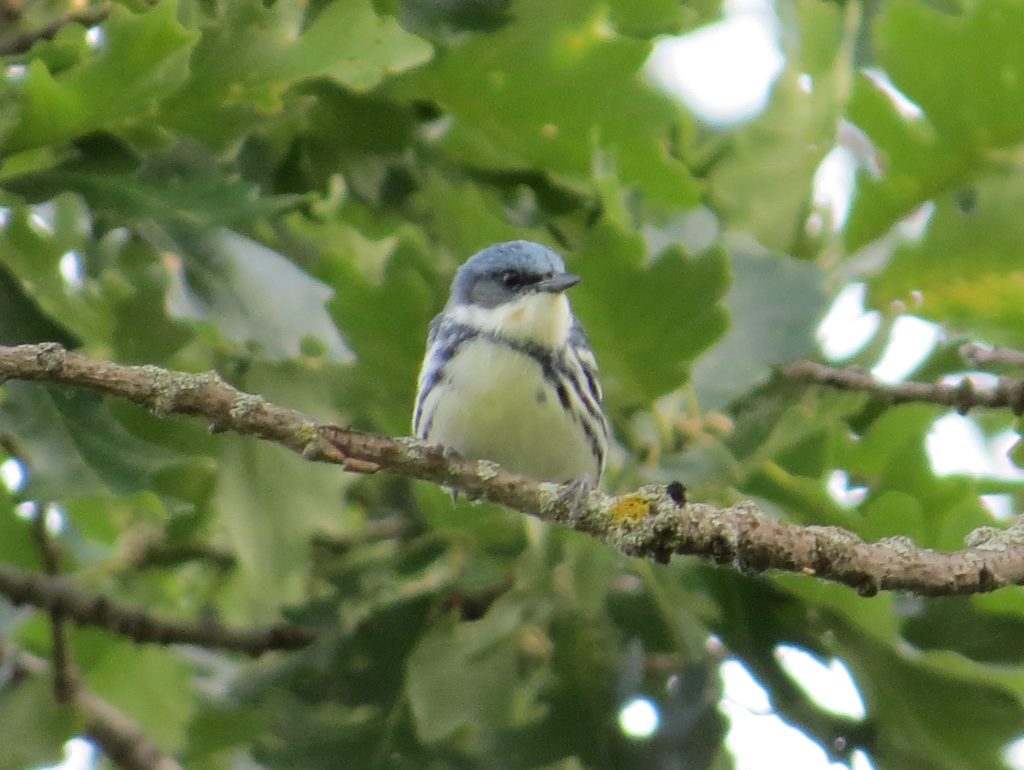
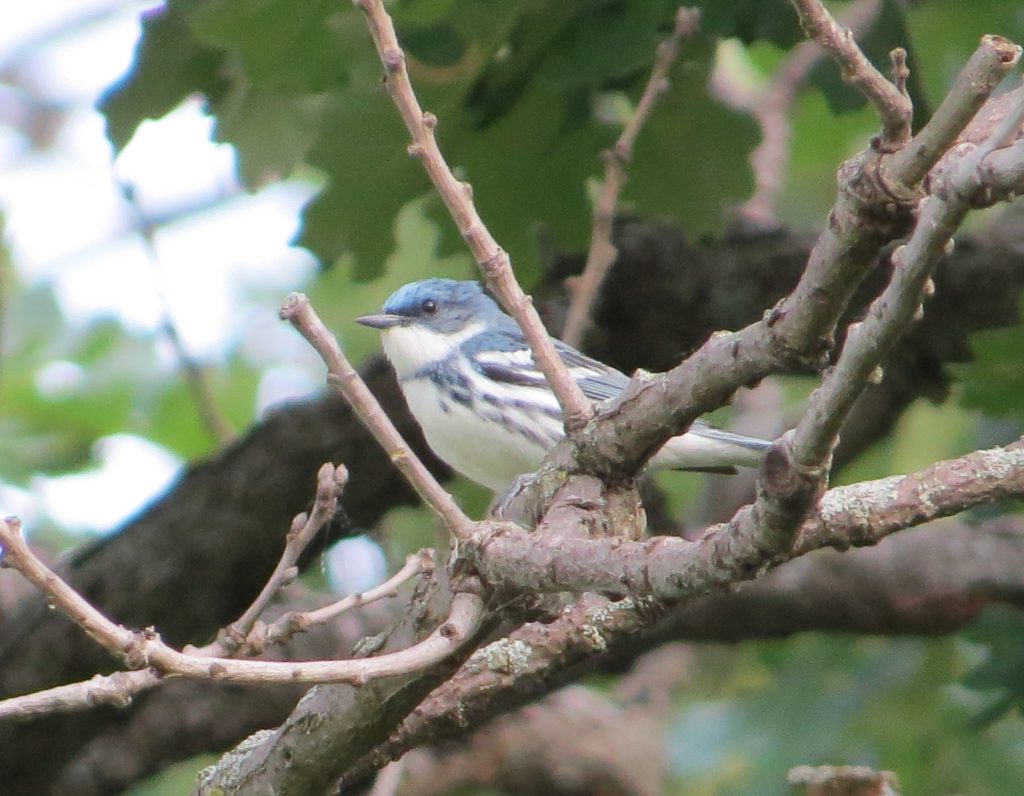
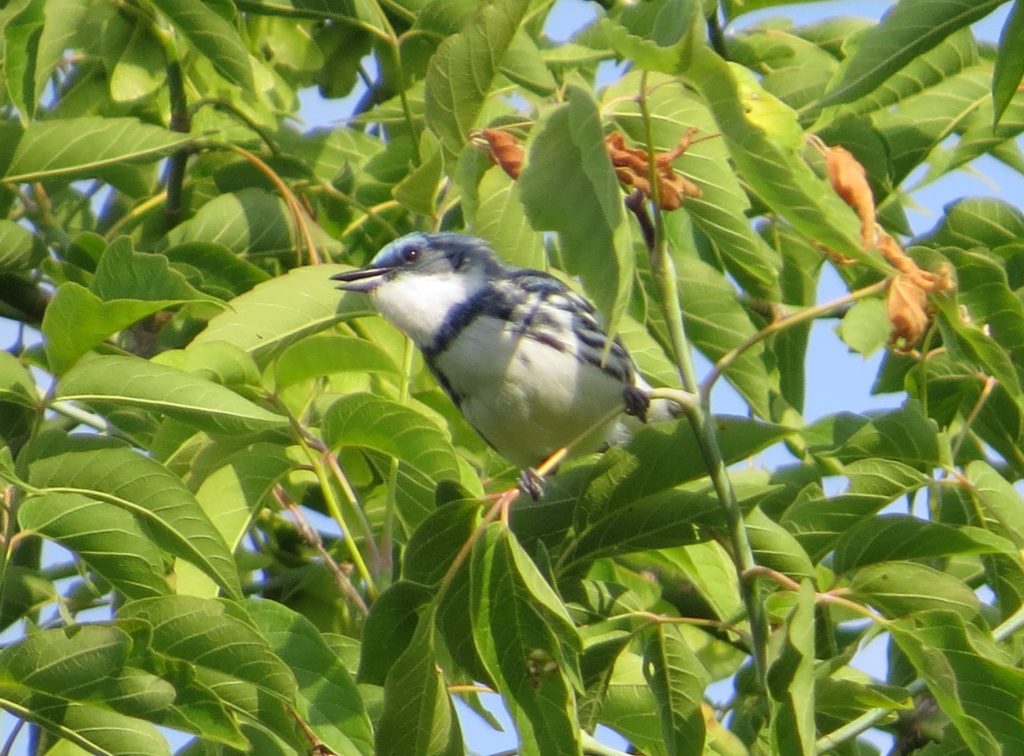 The Cerulean Warbler is in trouble because of habitat loss in its summer home in North America and its winter home in South America. It prefers mature deciduous woods that offer a relatively open understory. Much of their historical breeding grounds in the U.S. have been lost to farms, cities, and suburbs. On their wintering grounds, much of the tropical forest has been converted to farms. While Ceruleans will use shade-grown coffee plantations, they will not use the more popular and efficient sun-grown coffee plantations. Seeing one of these birds is always a reminder of how fragile a species can be and how easily we can wipe a species off the map. It’s also a personal reminder that I really should be drinking bird-friendly, shade-grown coffee–it’s the least I can do. Seeing or even hearing a Cerulean is always a special treat. Seeing one well like this and watching a friend lifer on it is even better. And observing a Cerulean Warbler perched against a cerulean sky? Priceless.
The Cerulean Warbler is in trouble because of habitat loss in its summer home in North America and its winter home in South America. It prefers mature deciduous woods that offer a relatively open understory. Much of their historical breeding grounds in the U.S. have been lost to farms, cities, and suburbs. On their wintering grounds, much of the tropical forest has been converted to farms. While Ceruleans will use shade-grown coffee plantations, they will not use the more popular and efficient sun-grown coffee plantations. Seeing one of these birds is always a reminder of how fragile a species can be and how easily we can wipe a species off the map. It’s also a personal reminder that I really should be drinking bird-friendly, shade-grown coffee–it’s the least I can do. Seeing or even hearing a Cerulean is always a special treat. Seeing one well like this and watching a friend lifer on it is even better. And observing a Cerulean Warbler perched against a cerulean sky? Priceless.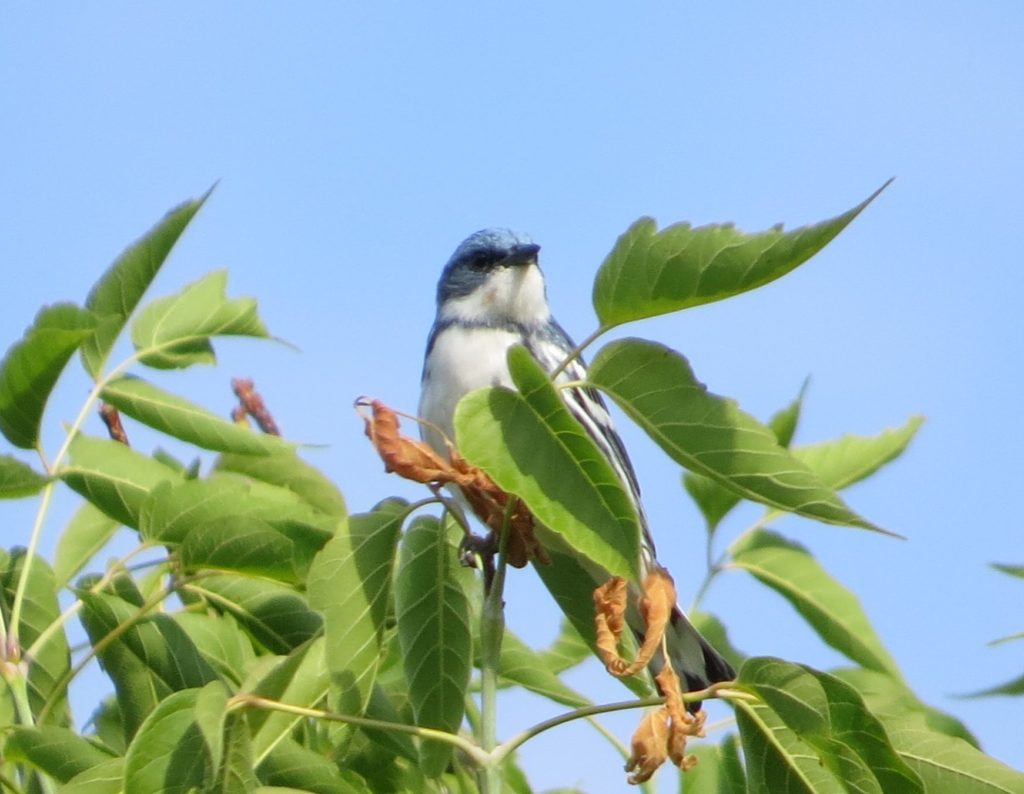
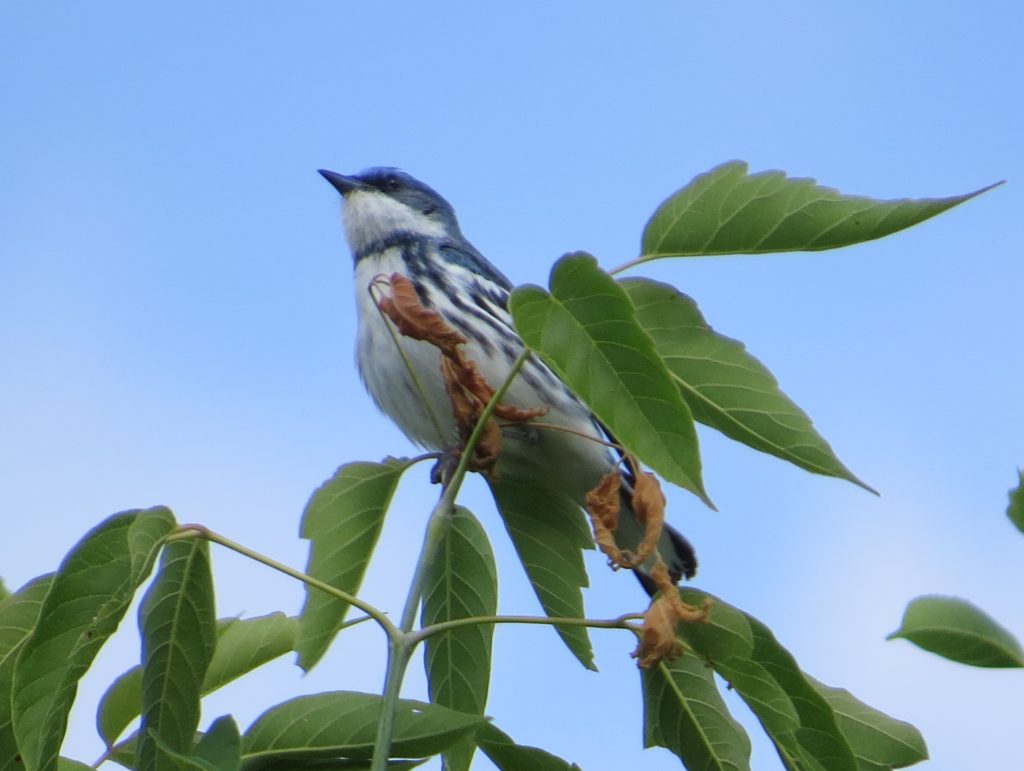 Coming up: a hefty, quick trip to Wisconsin for some unrivaled birds, CEWA notwithstanding.
Coming up: a hefty, quick trip to Wisconsin for some unrivaled birds, CEWA notwithstanding.